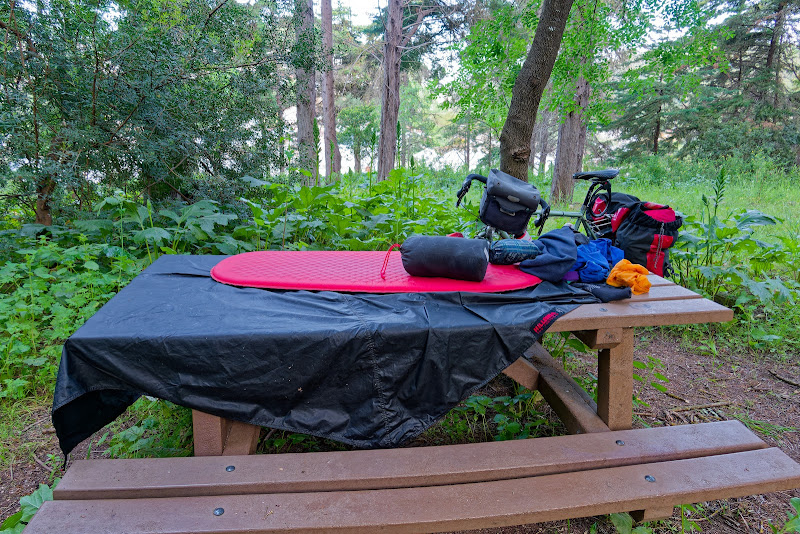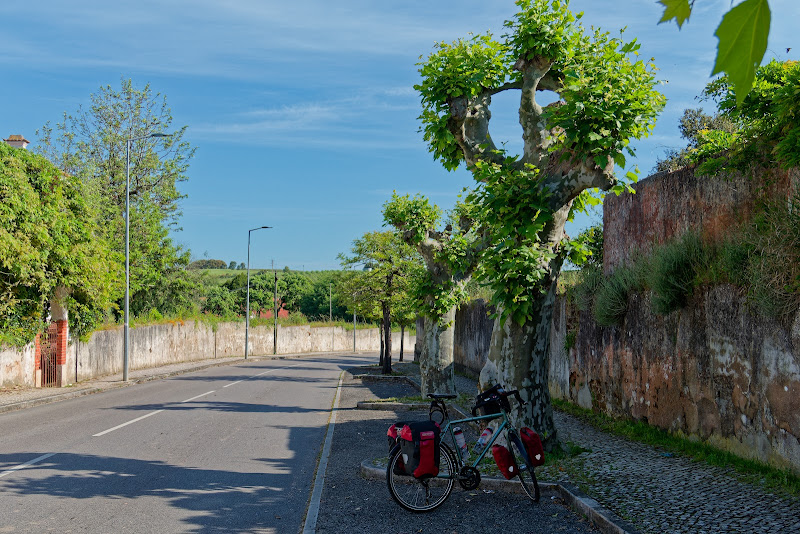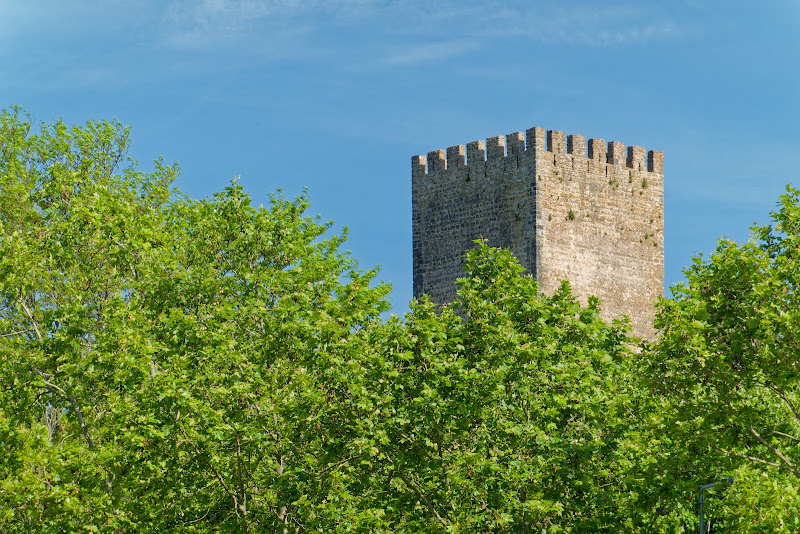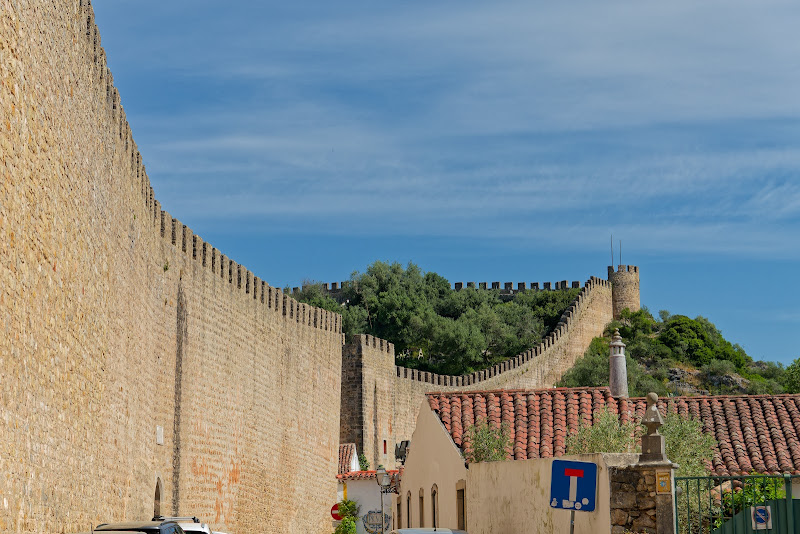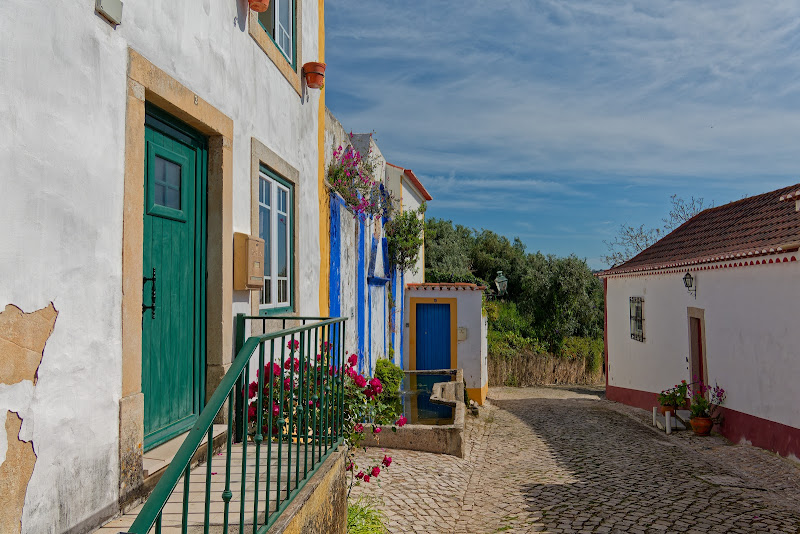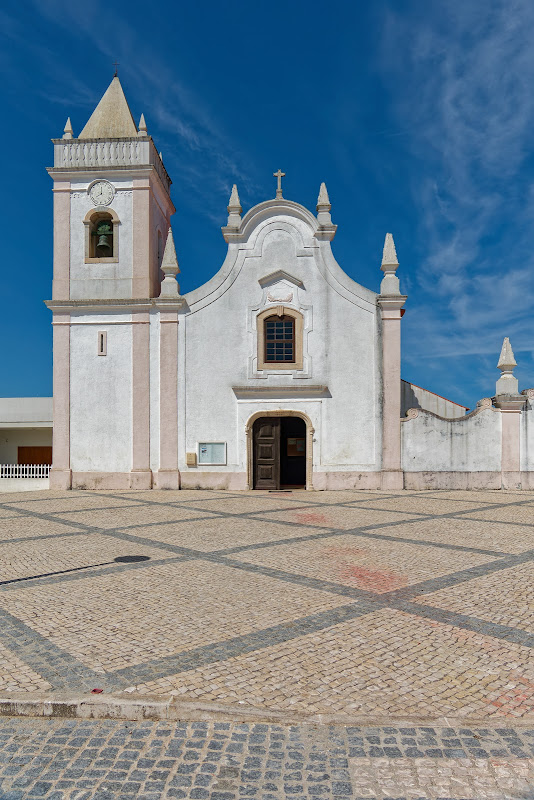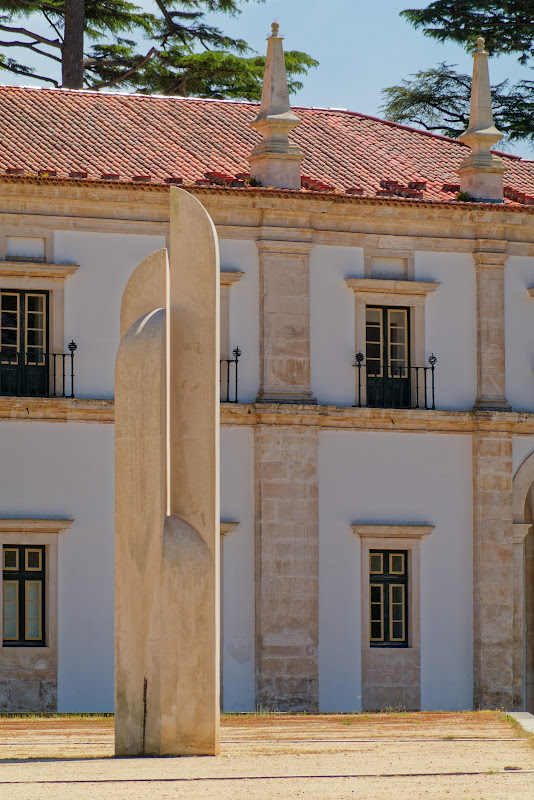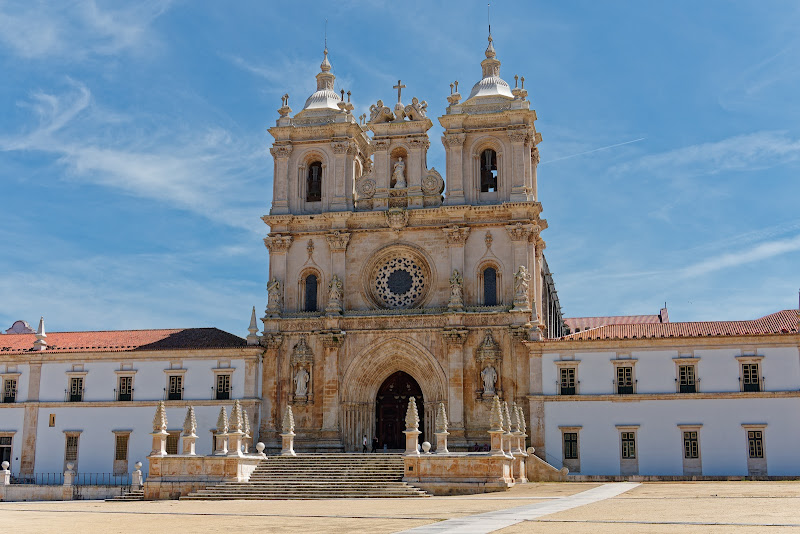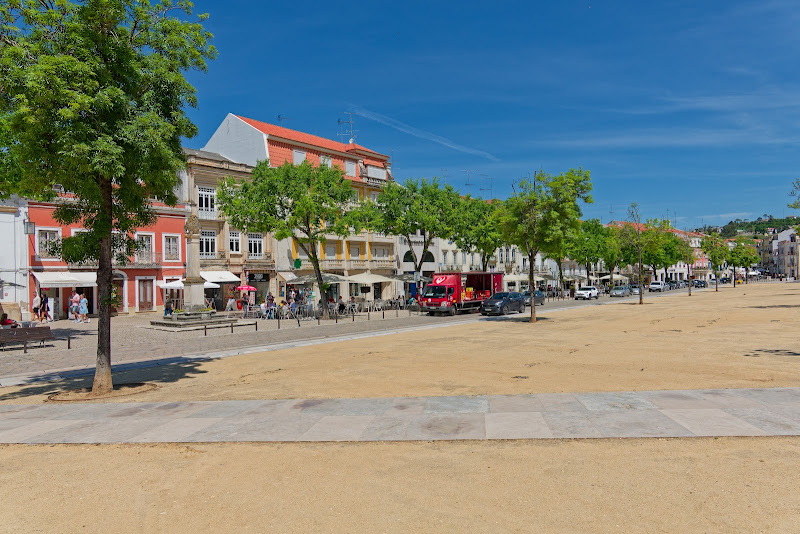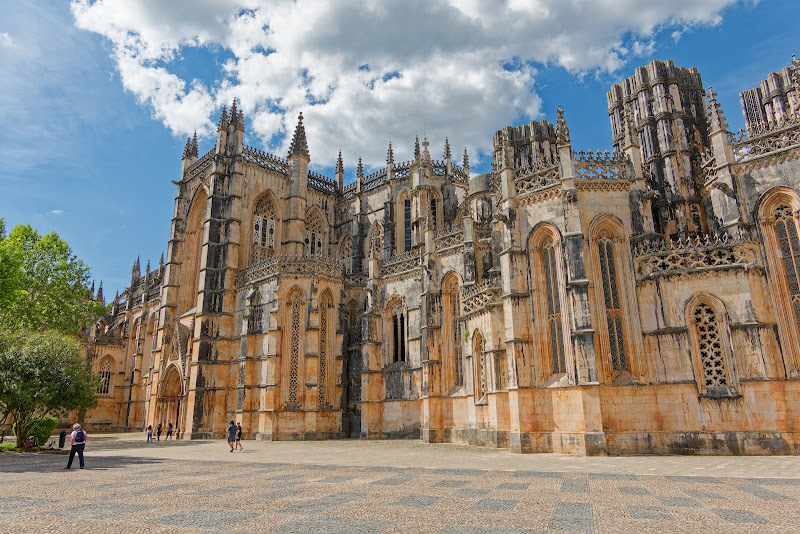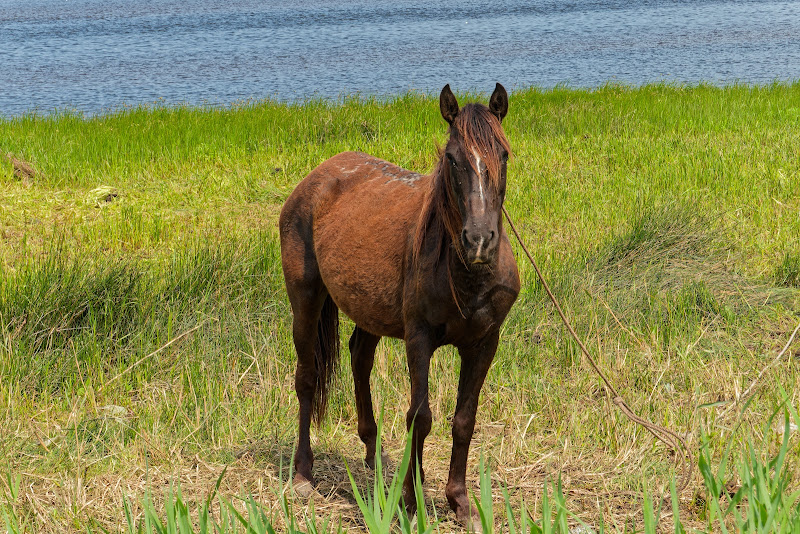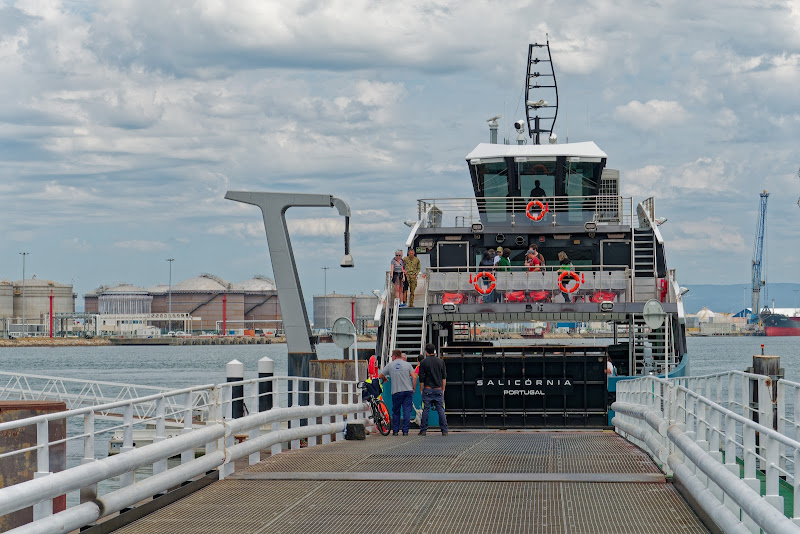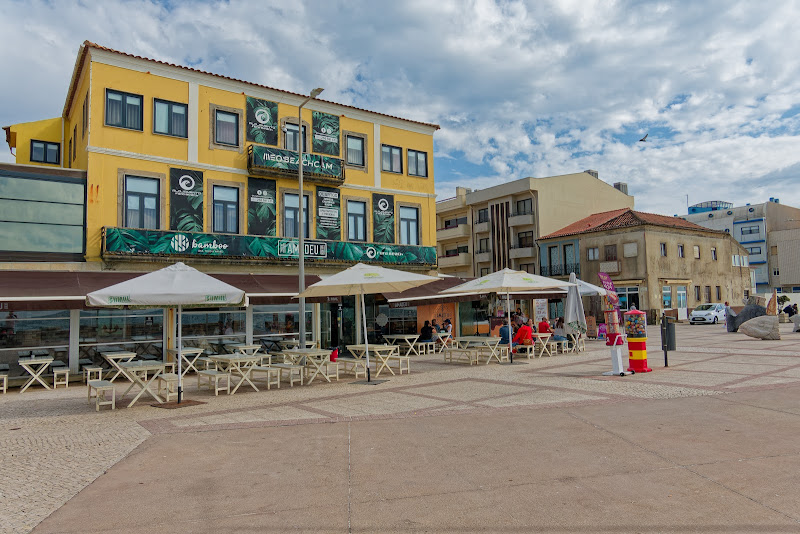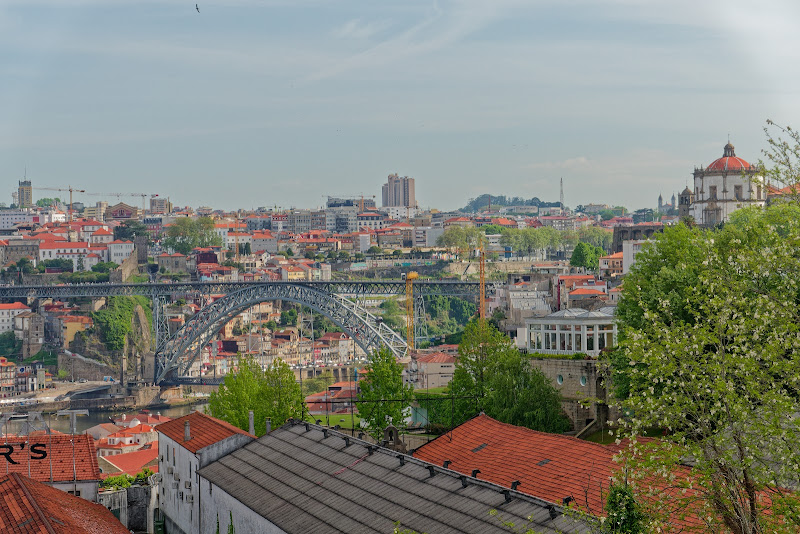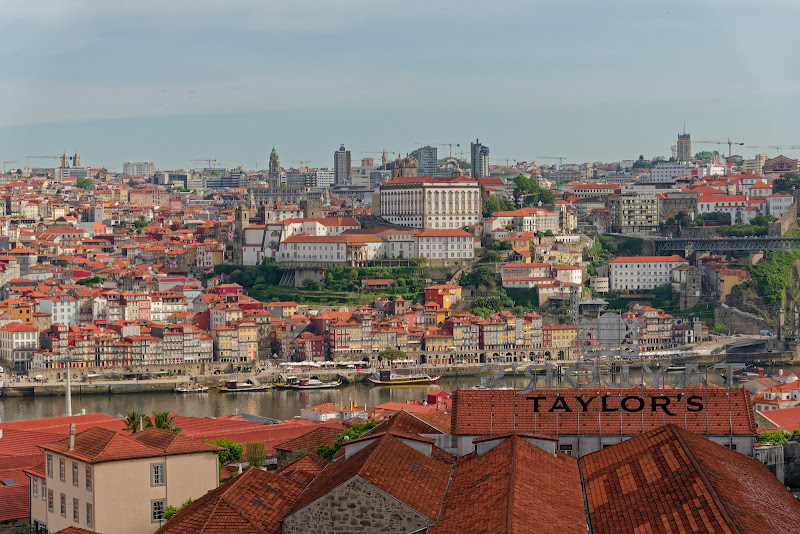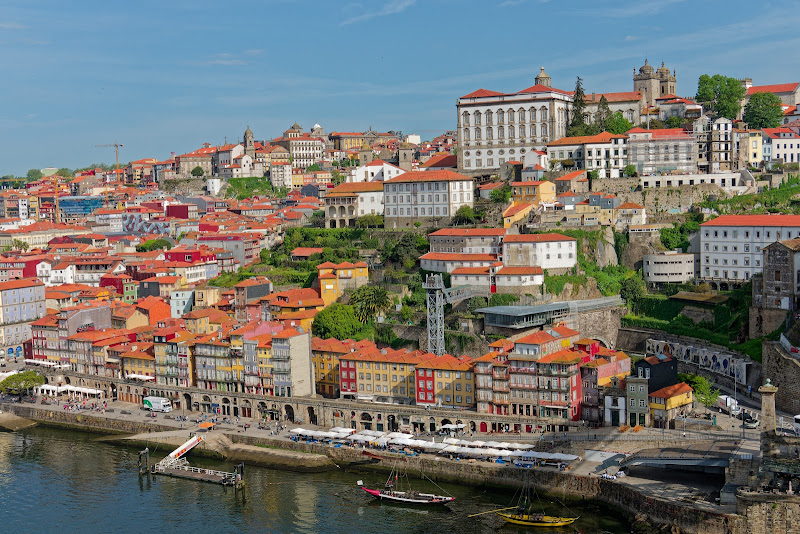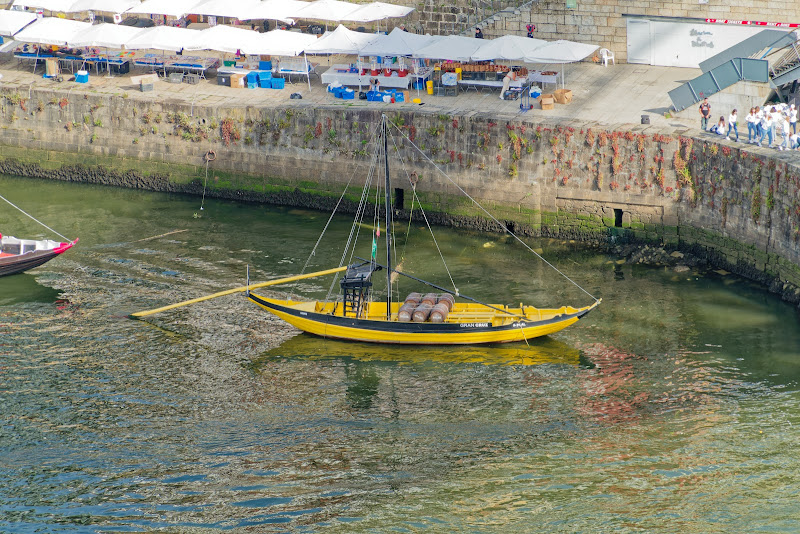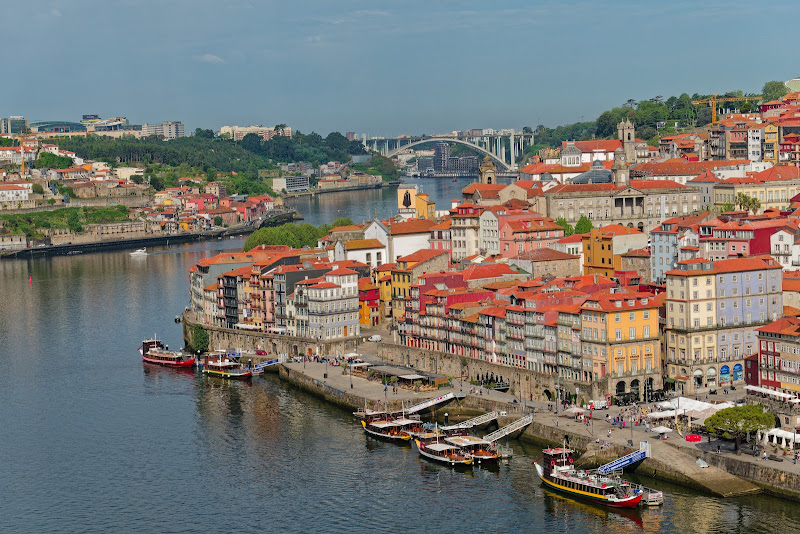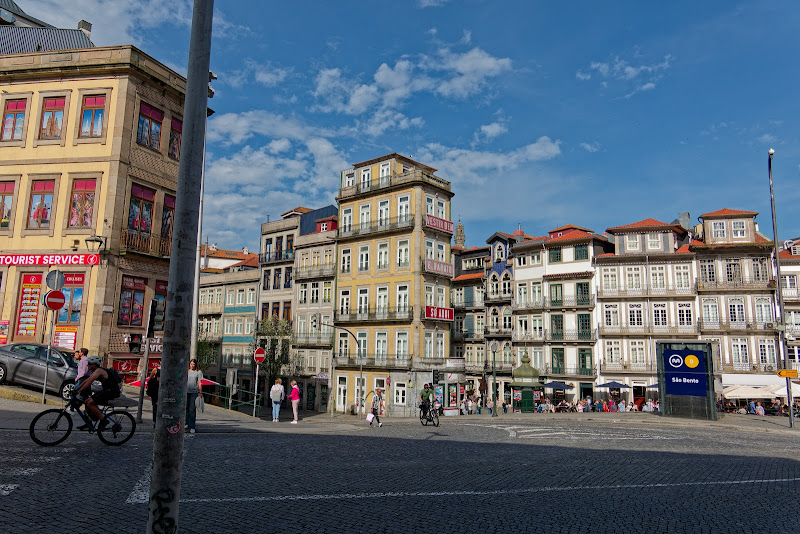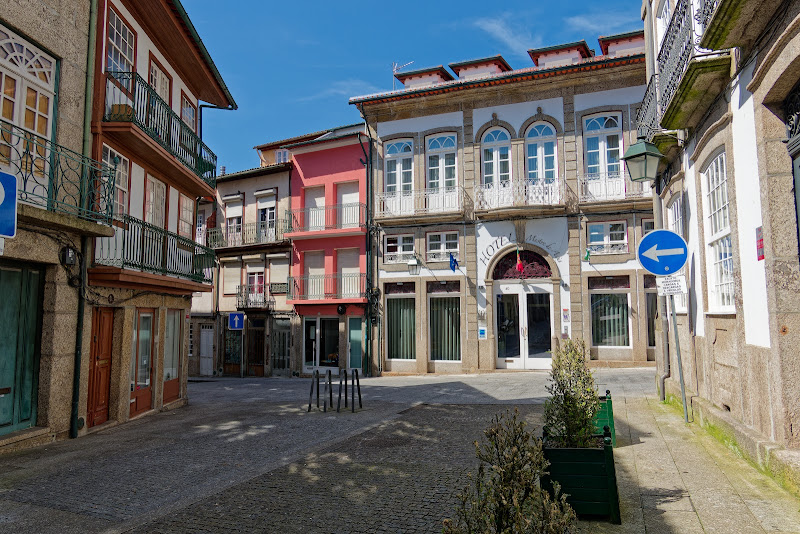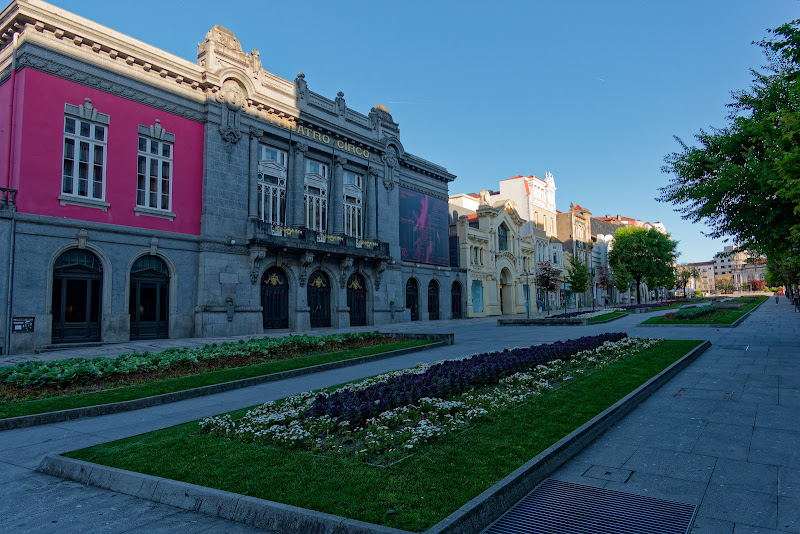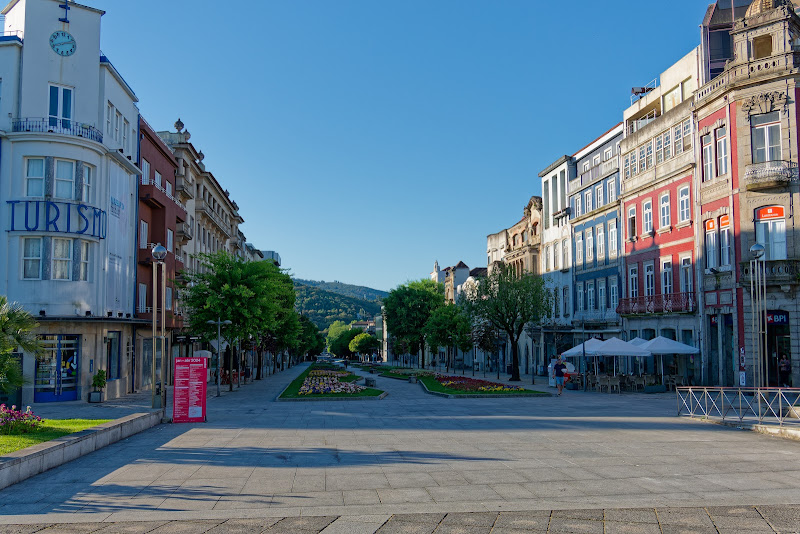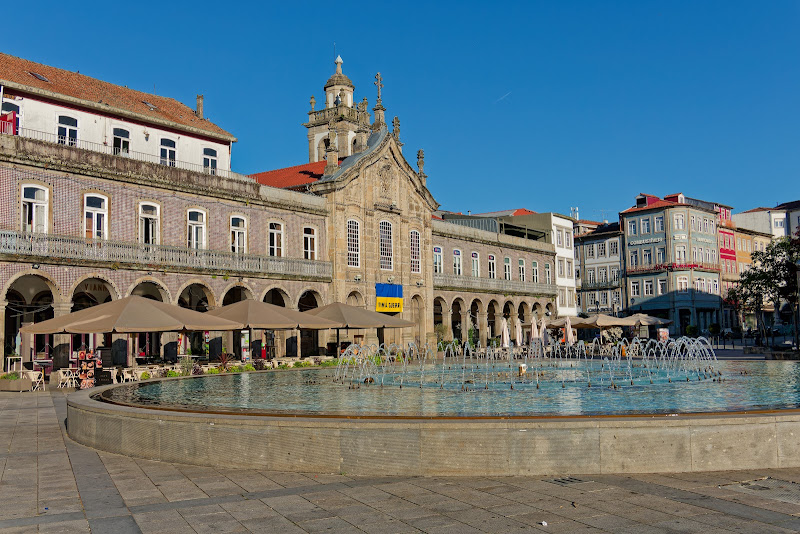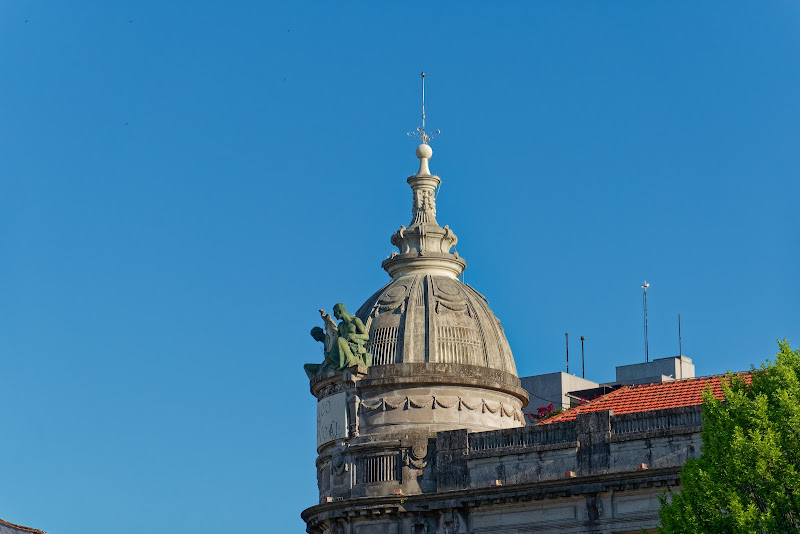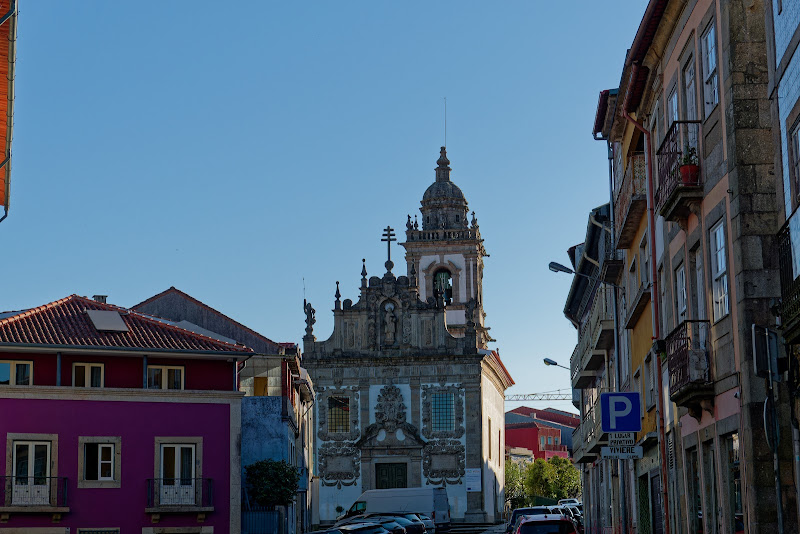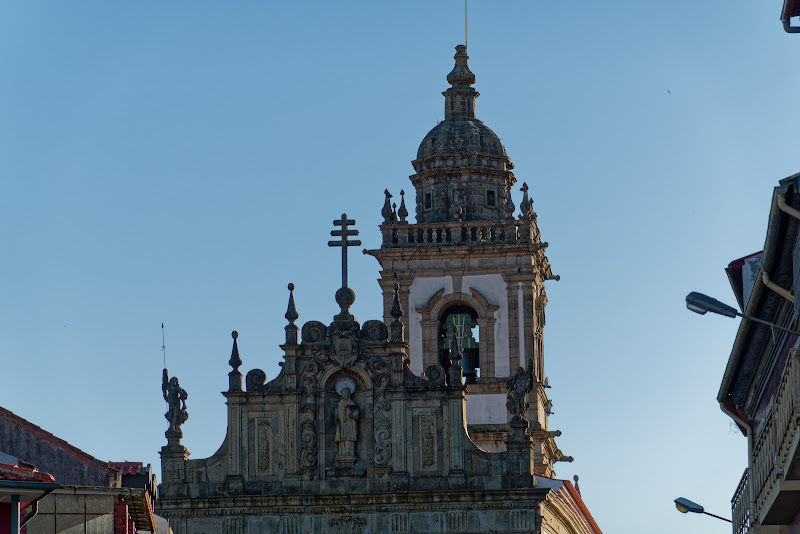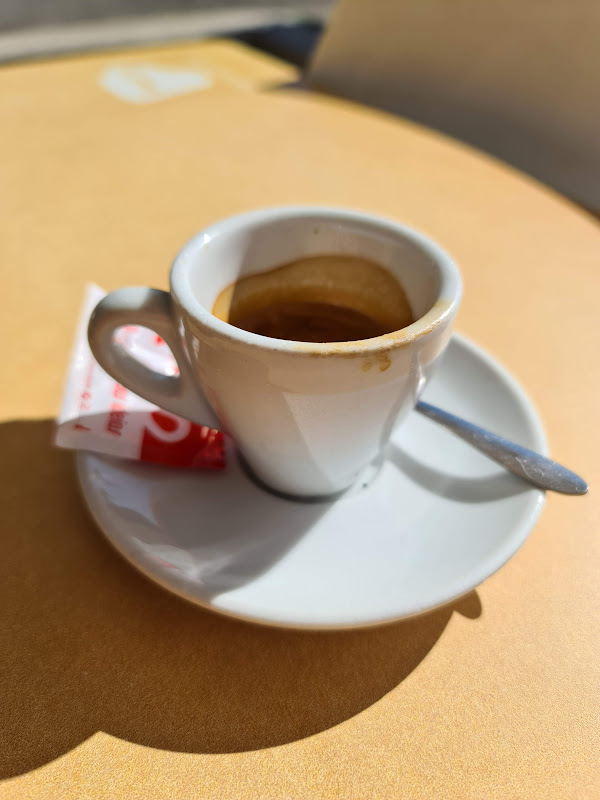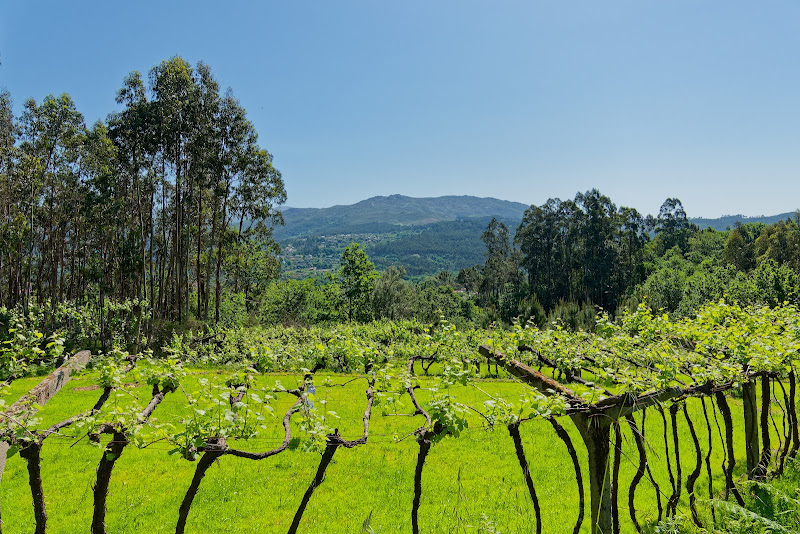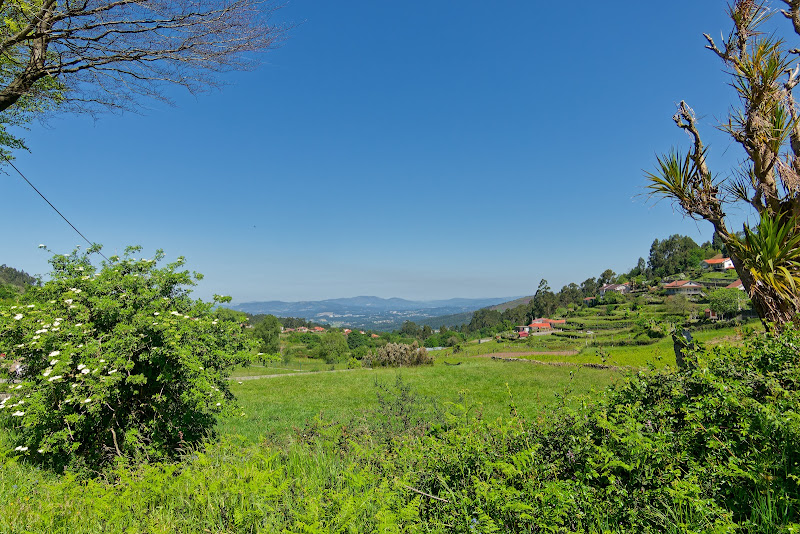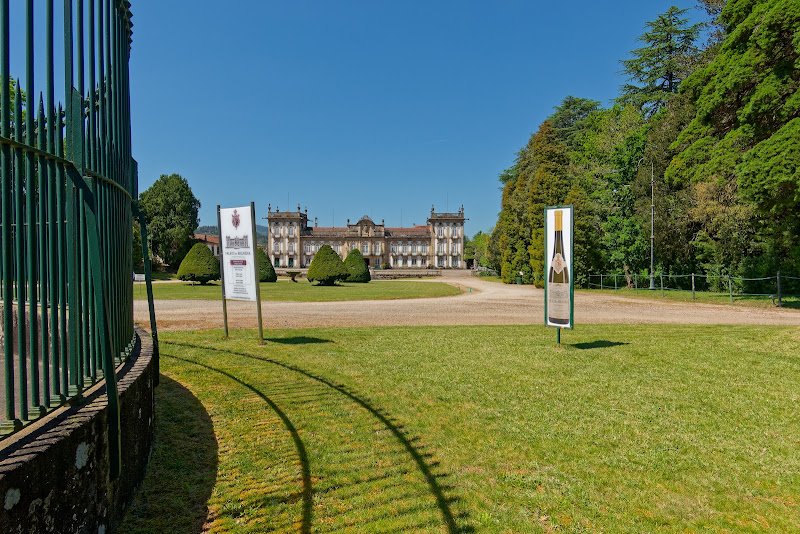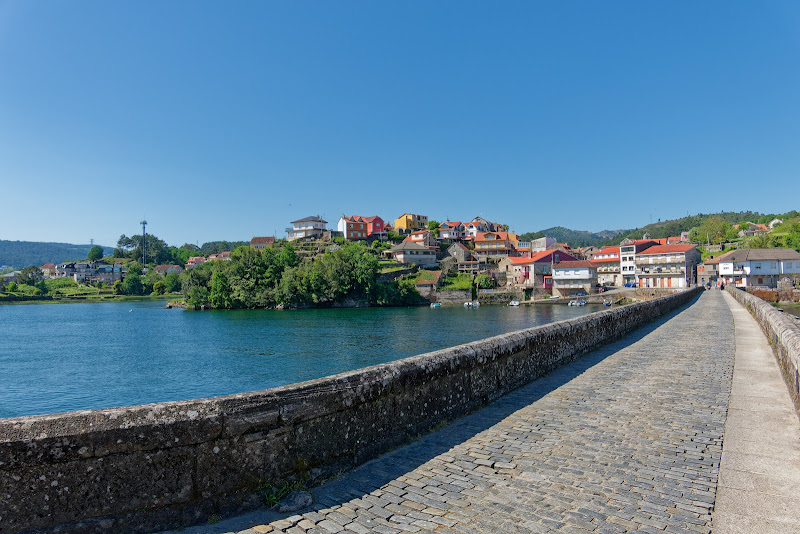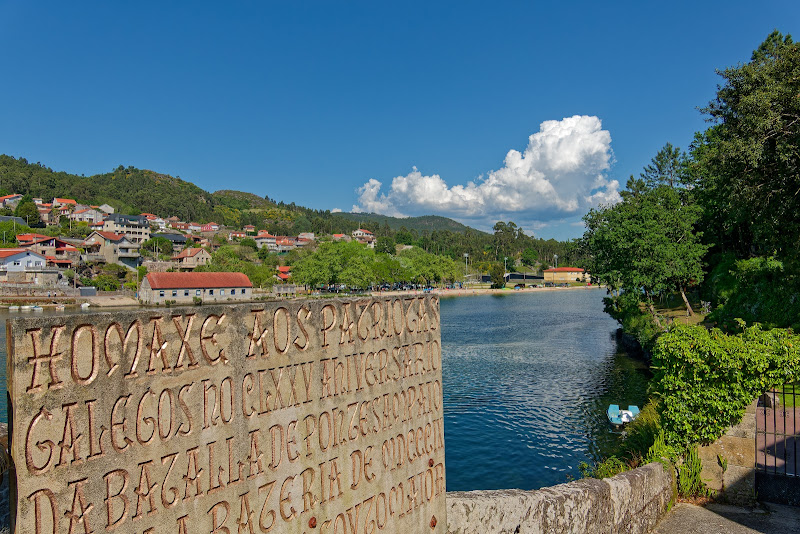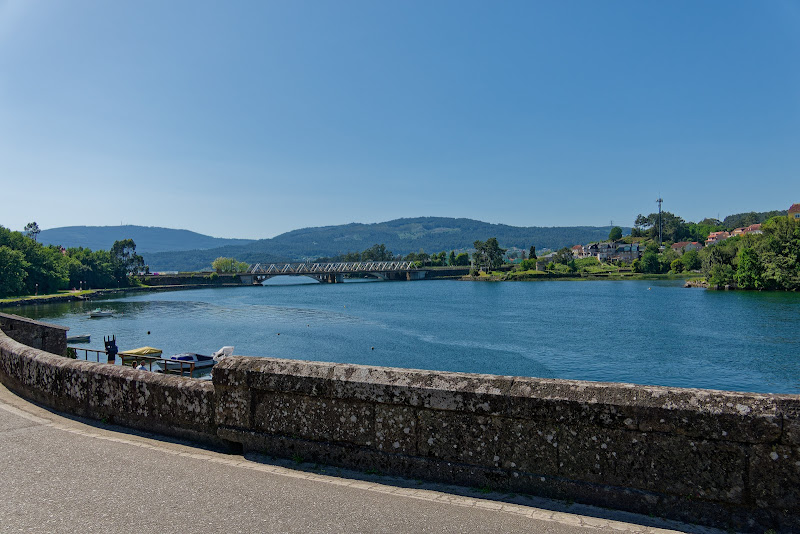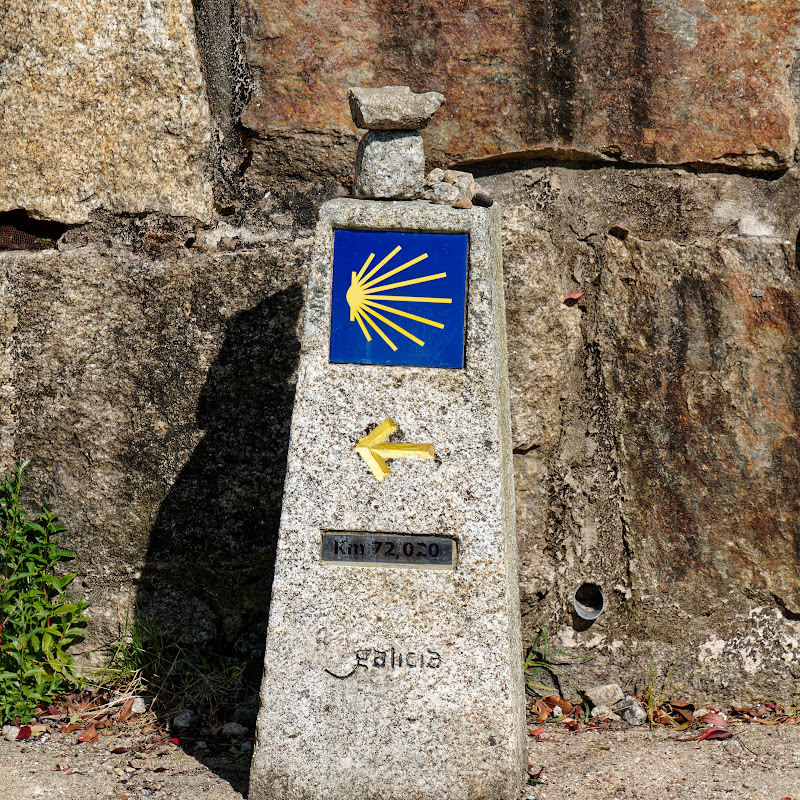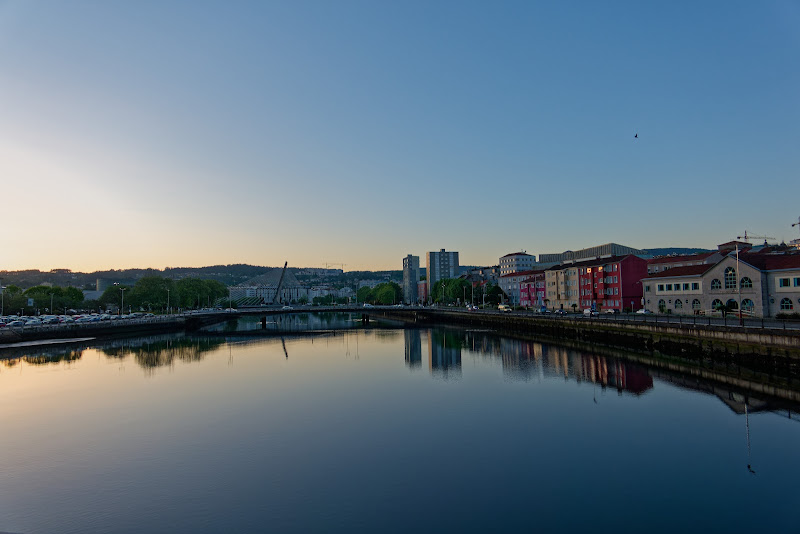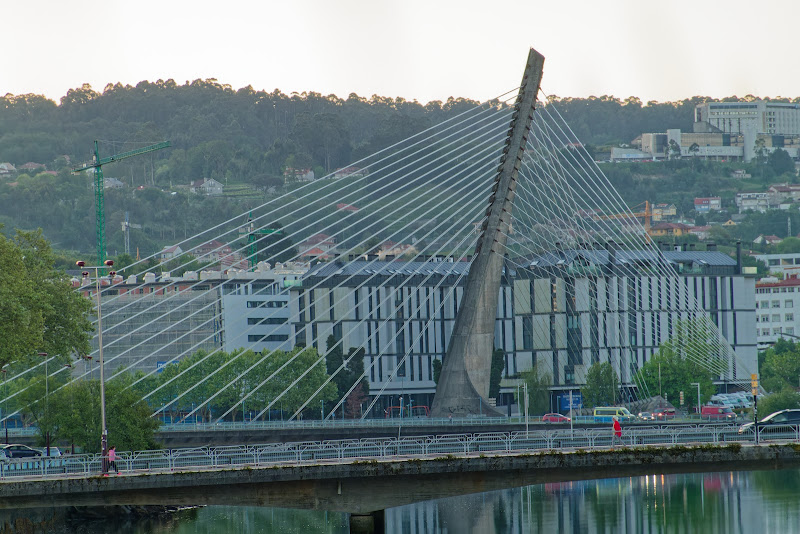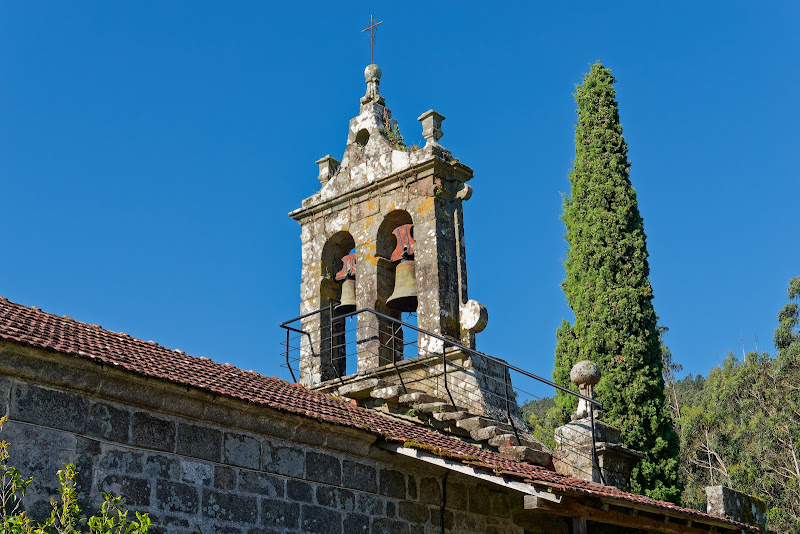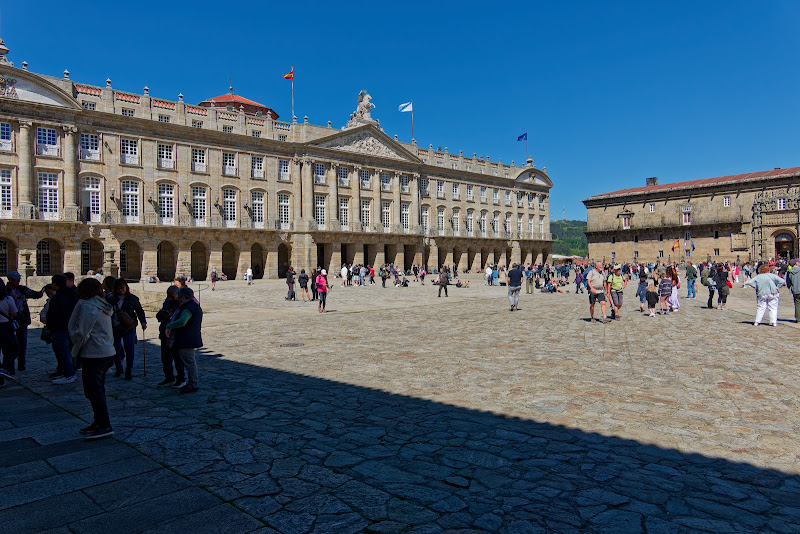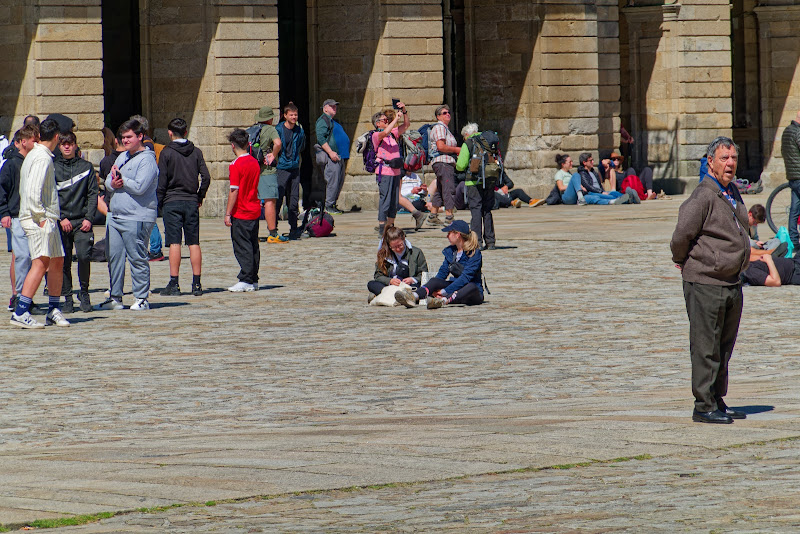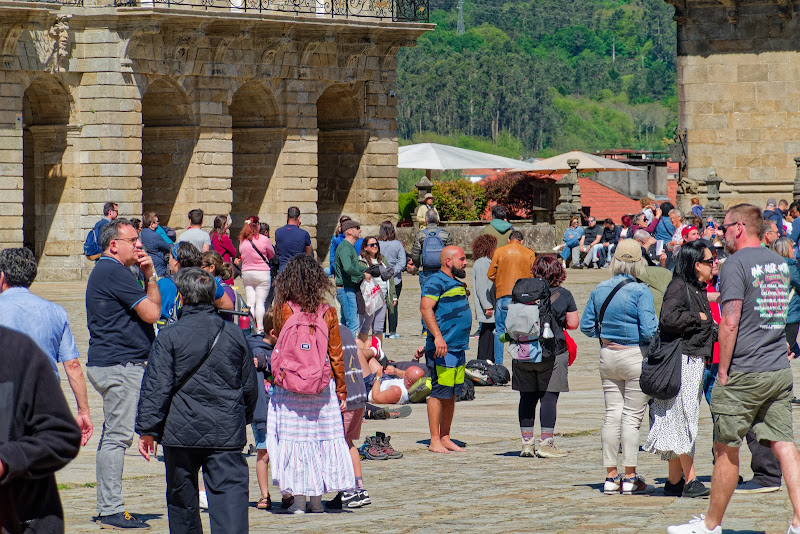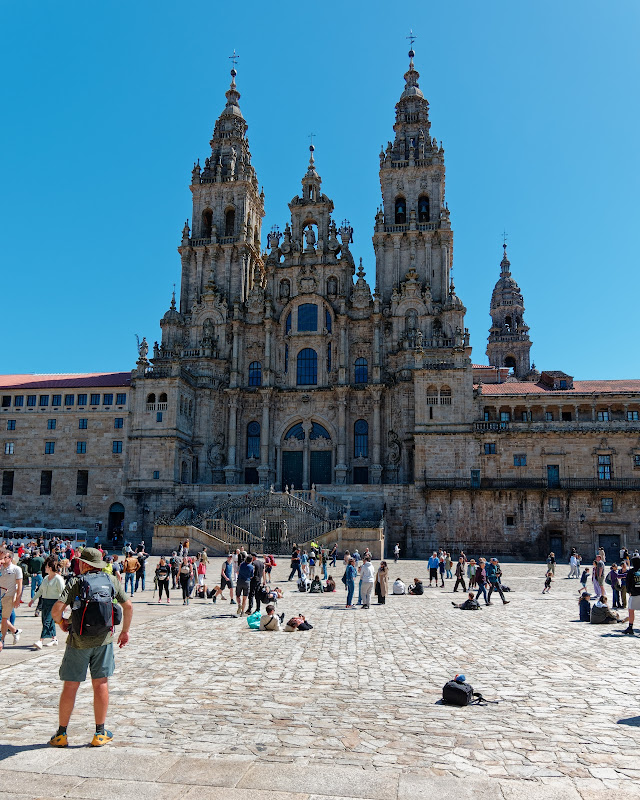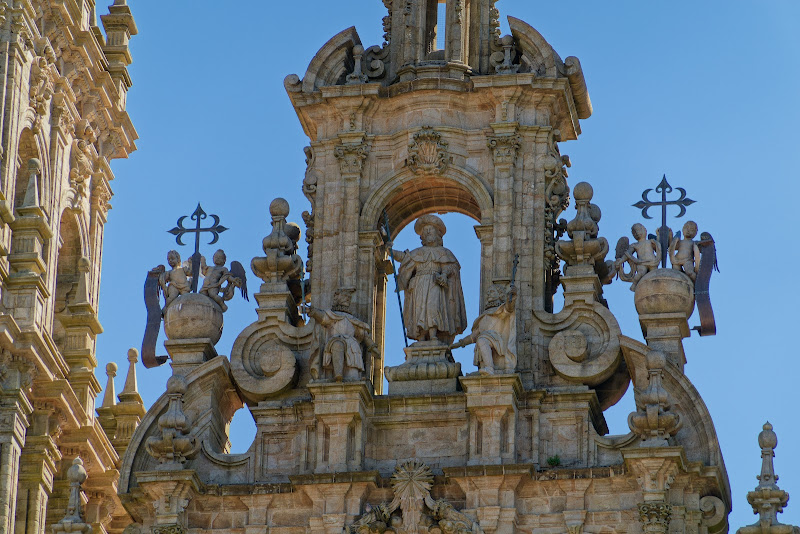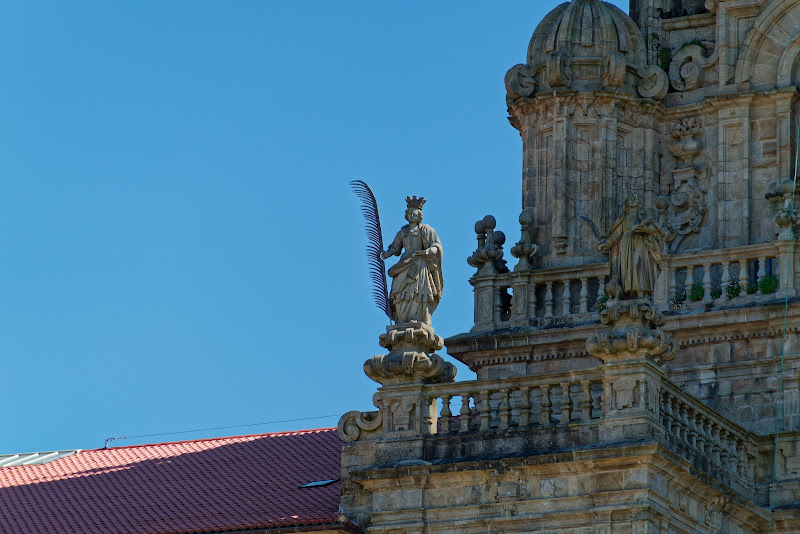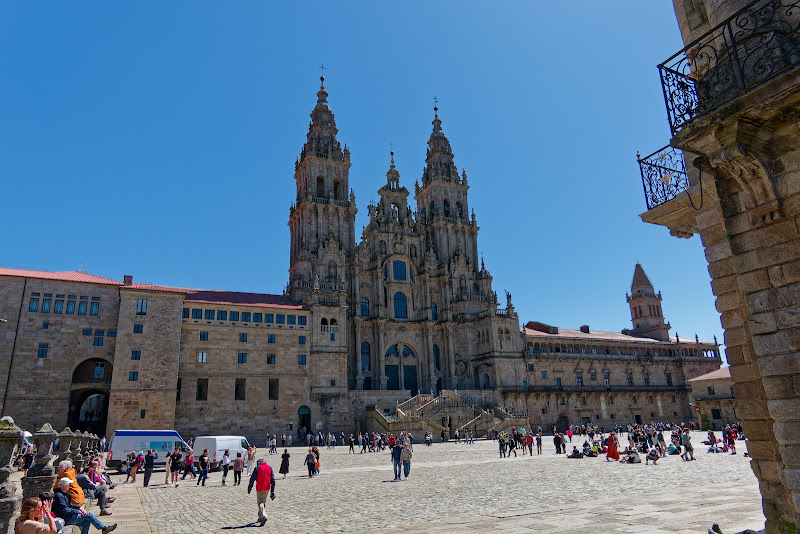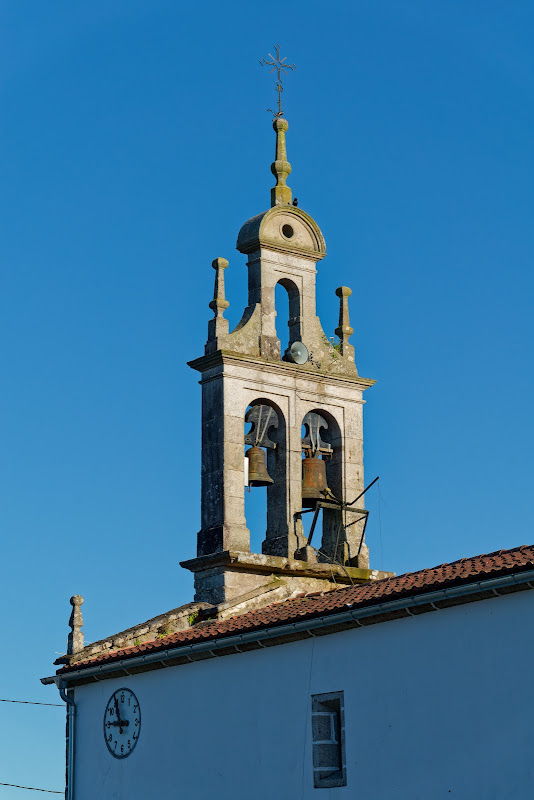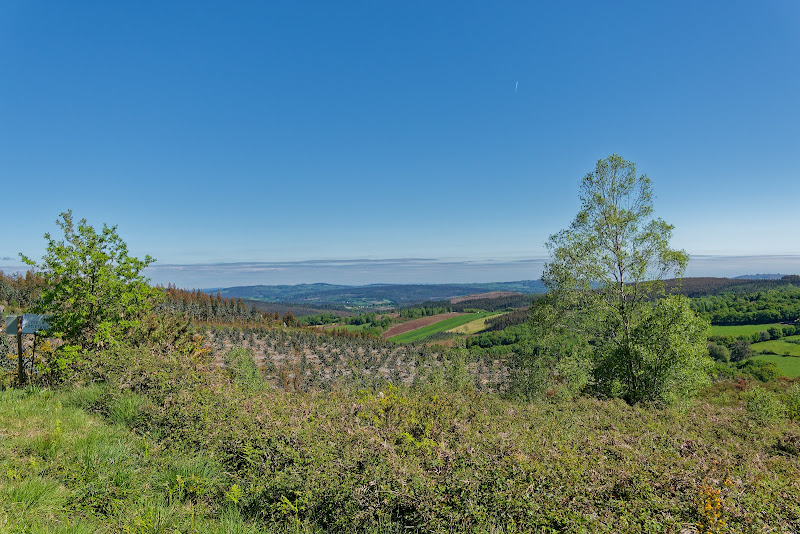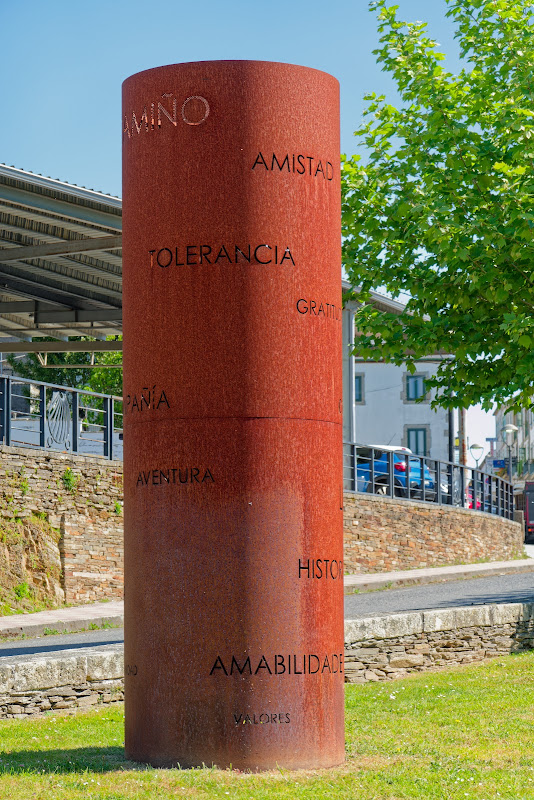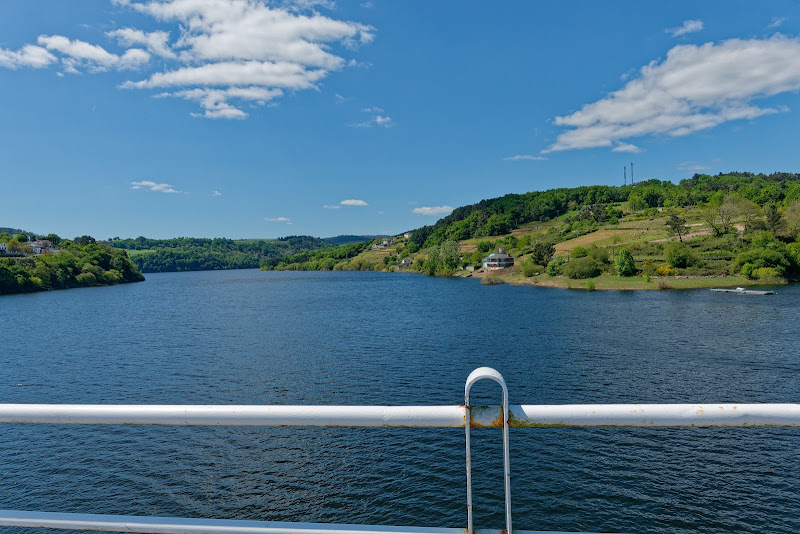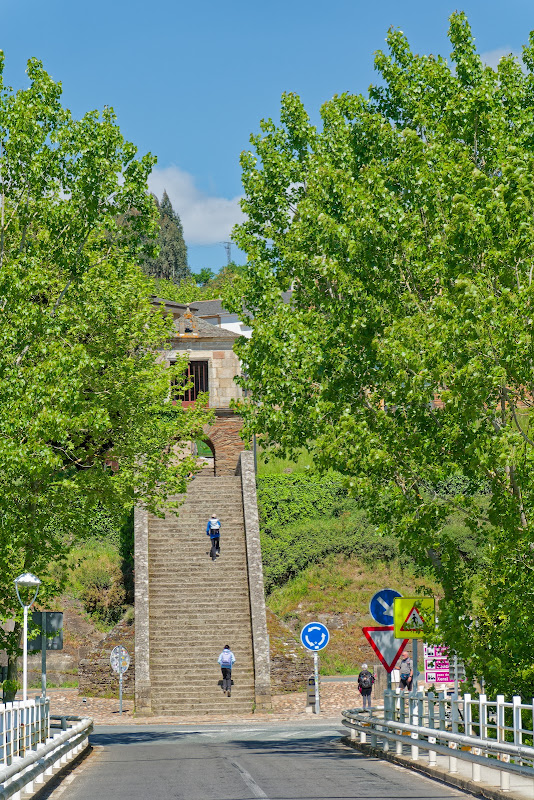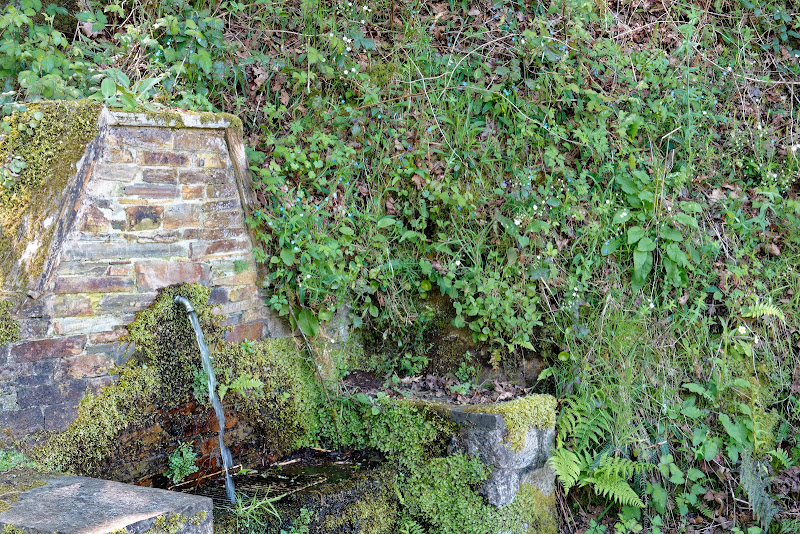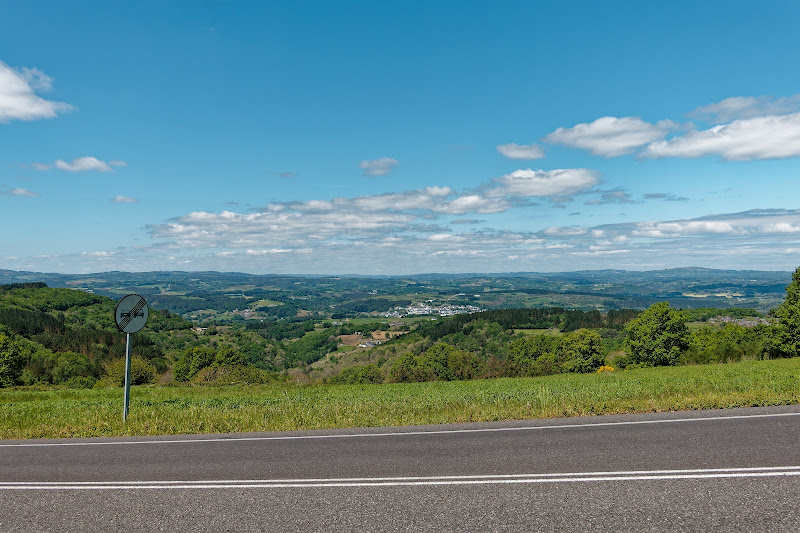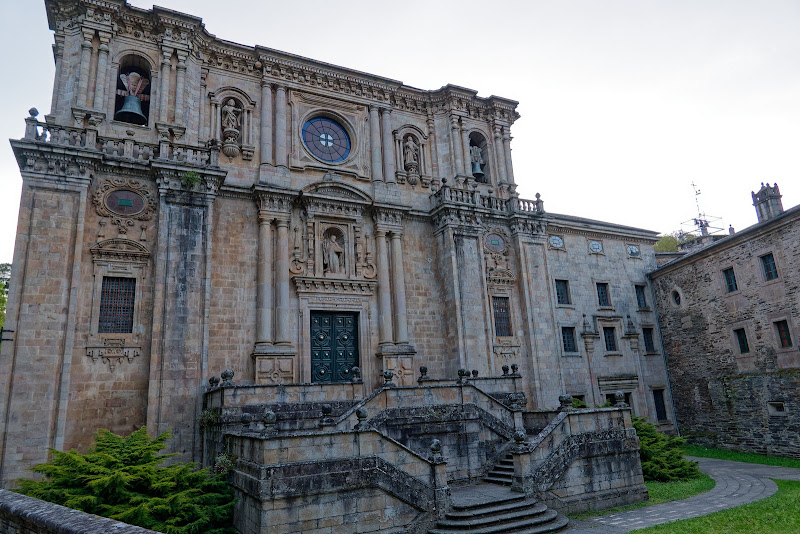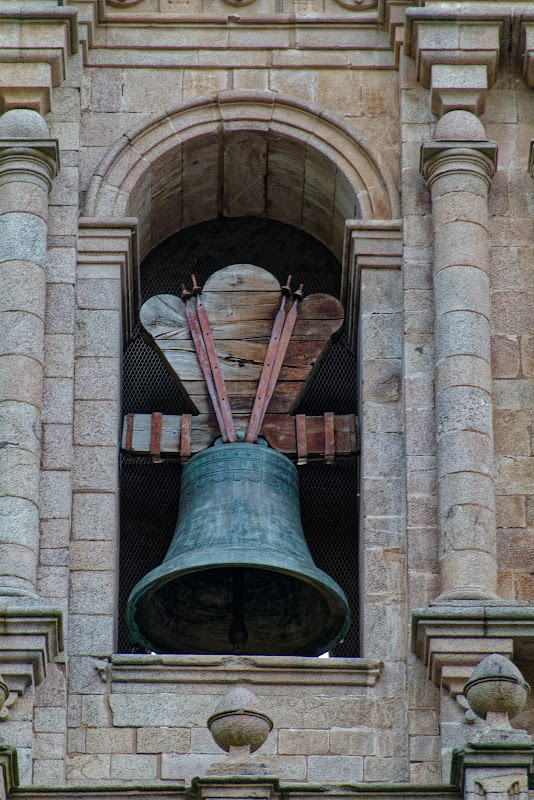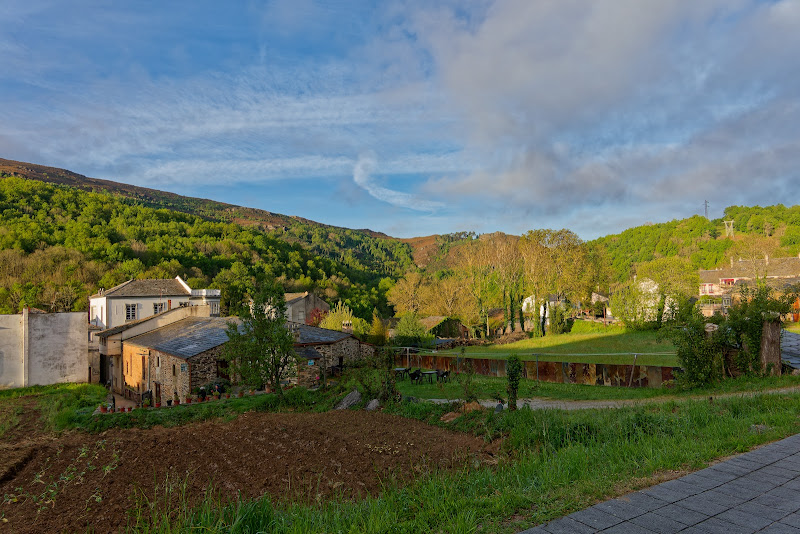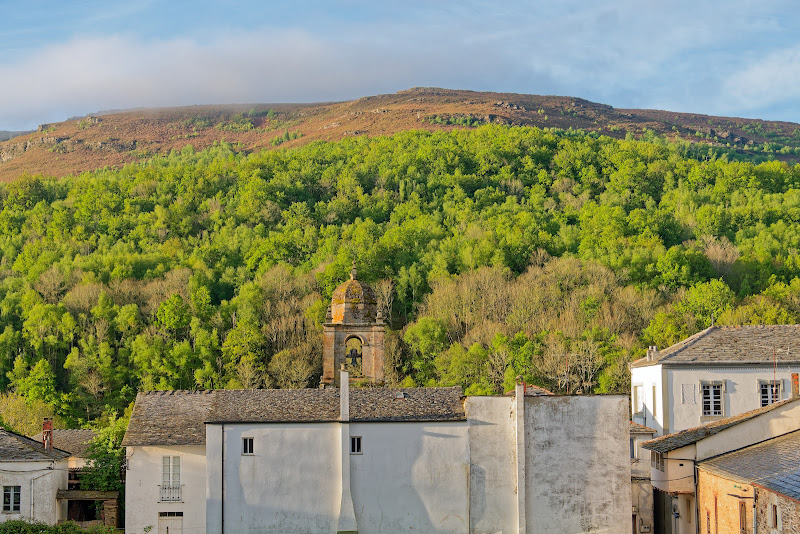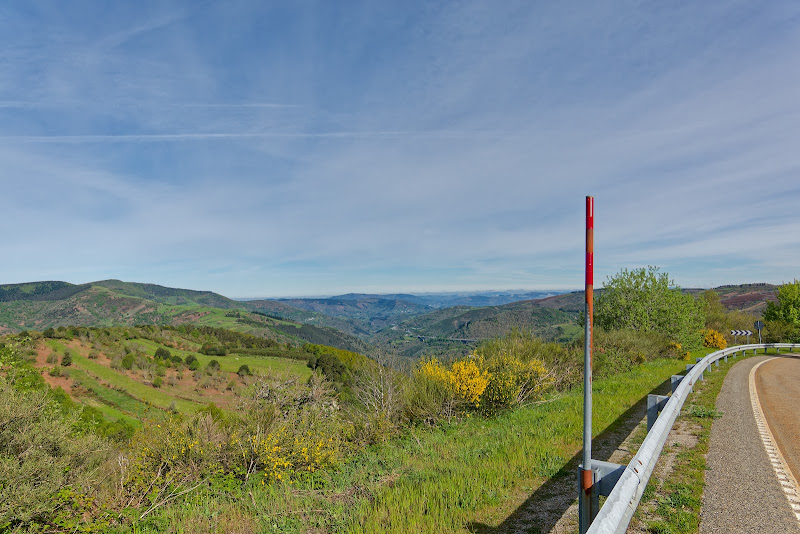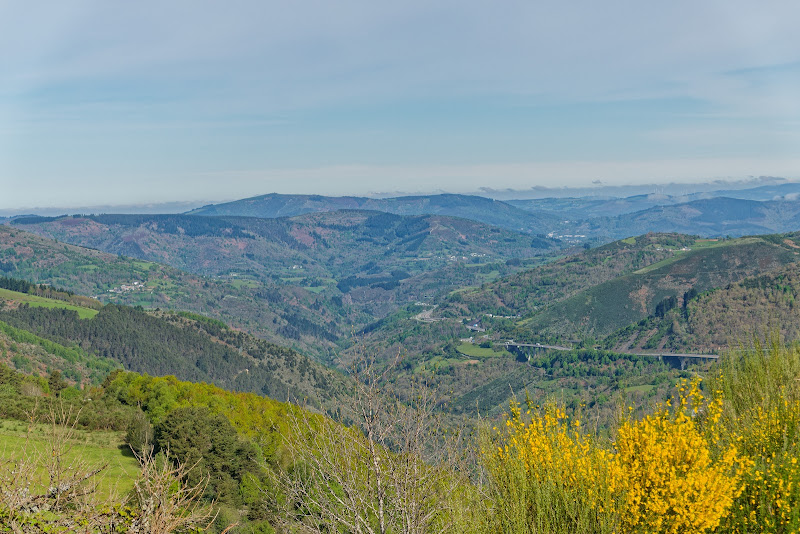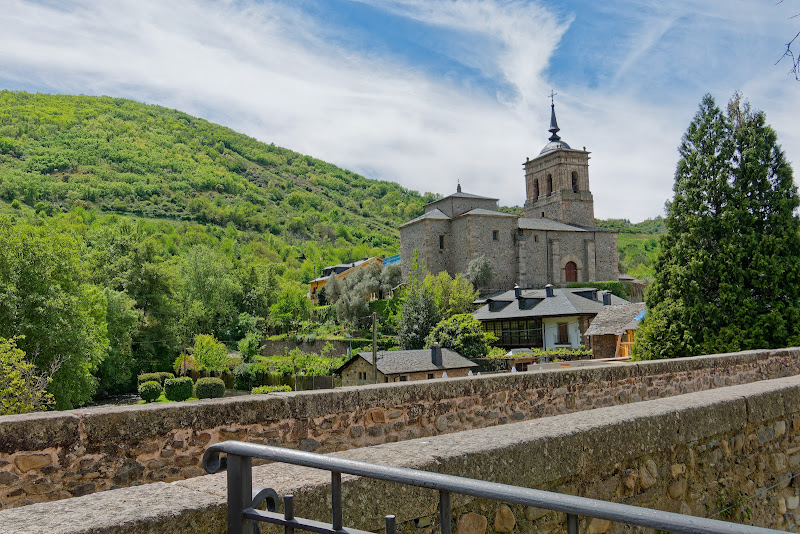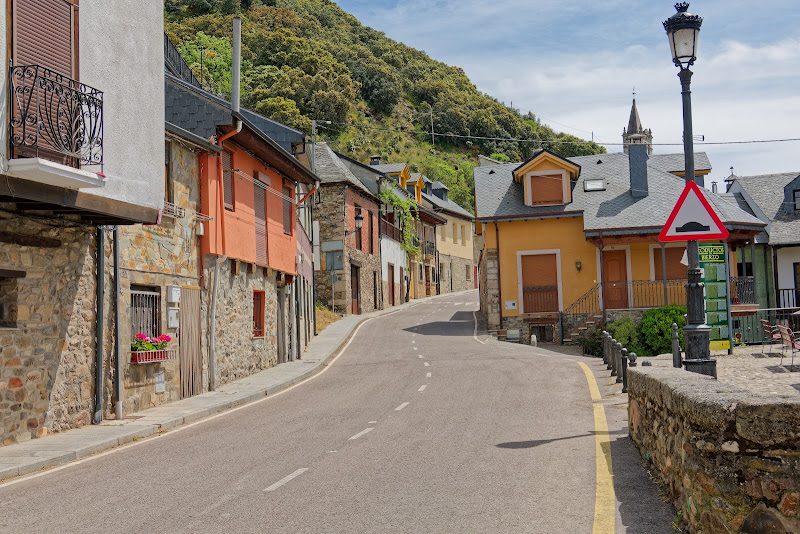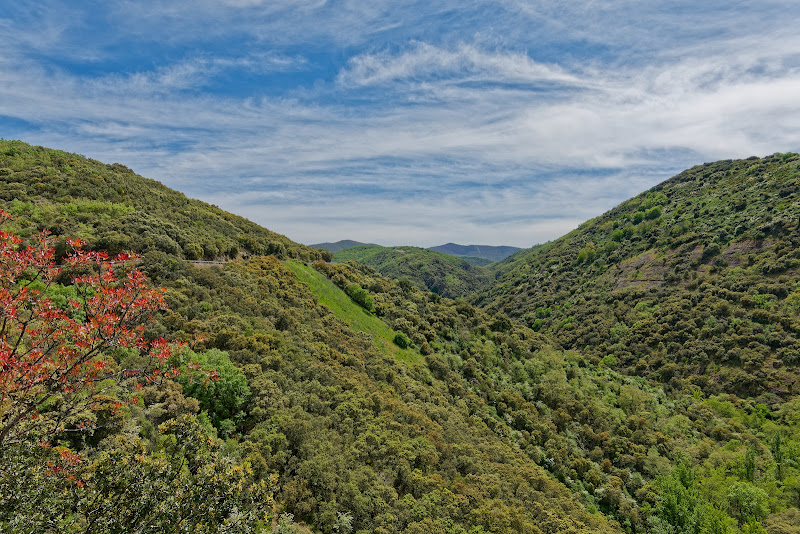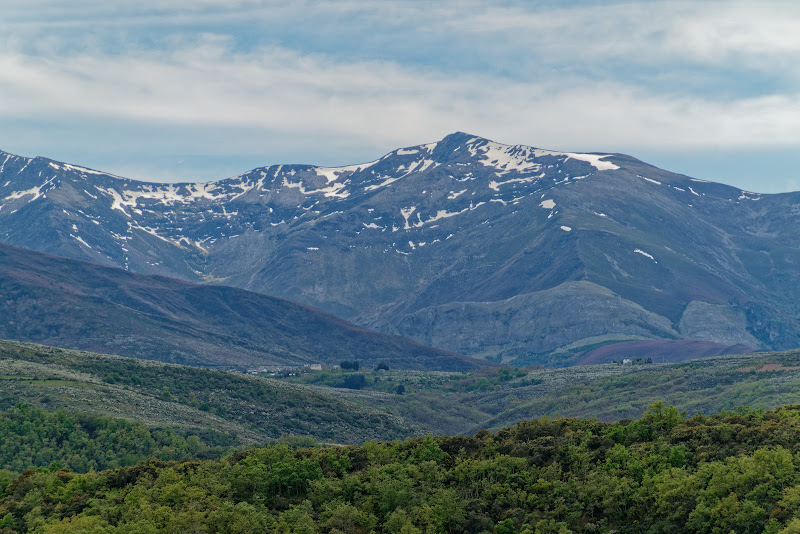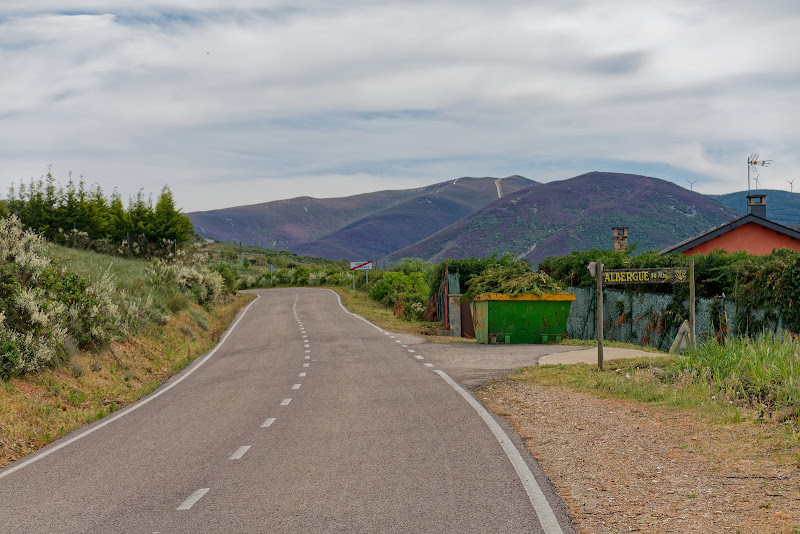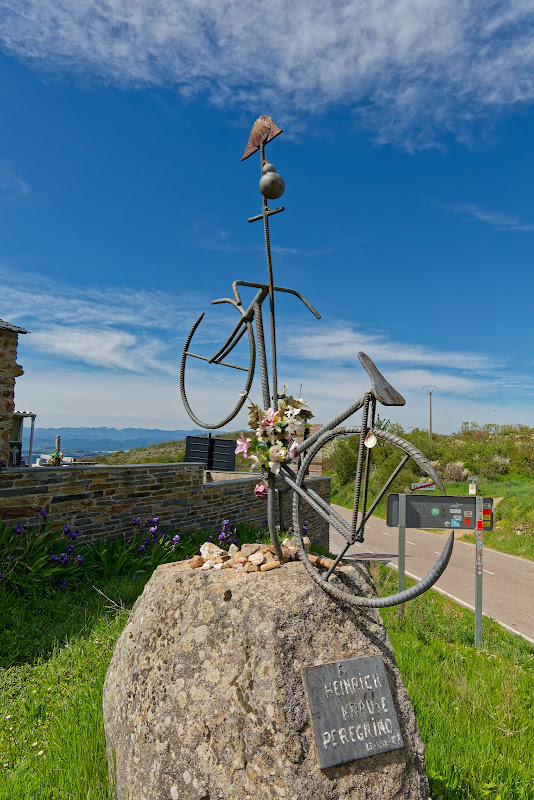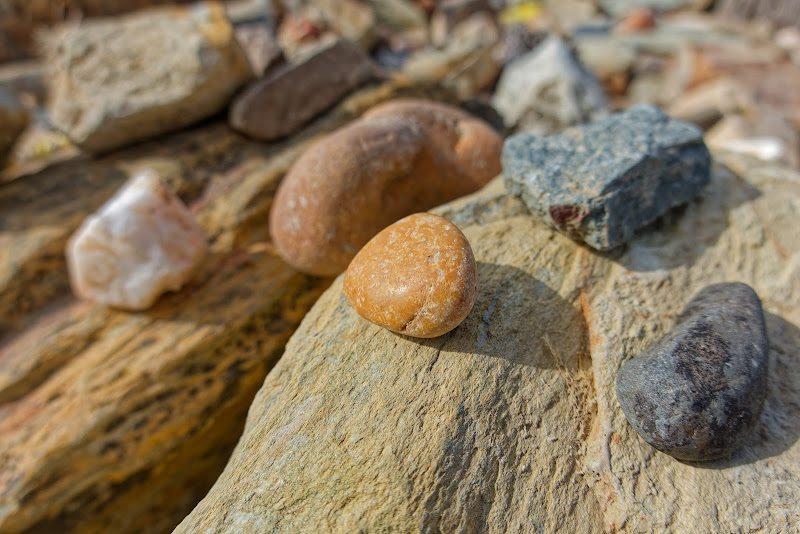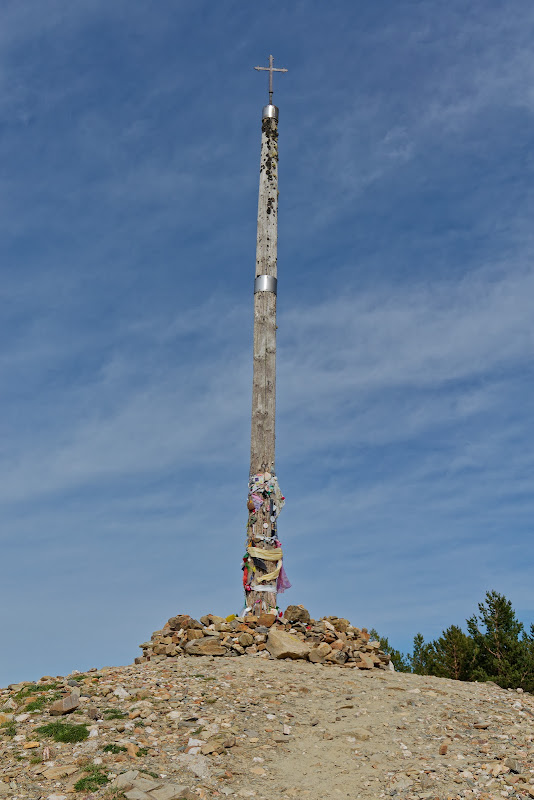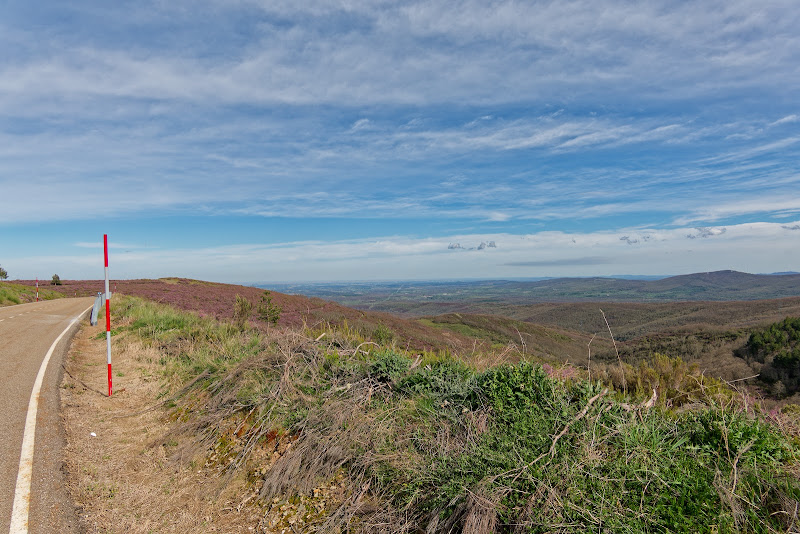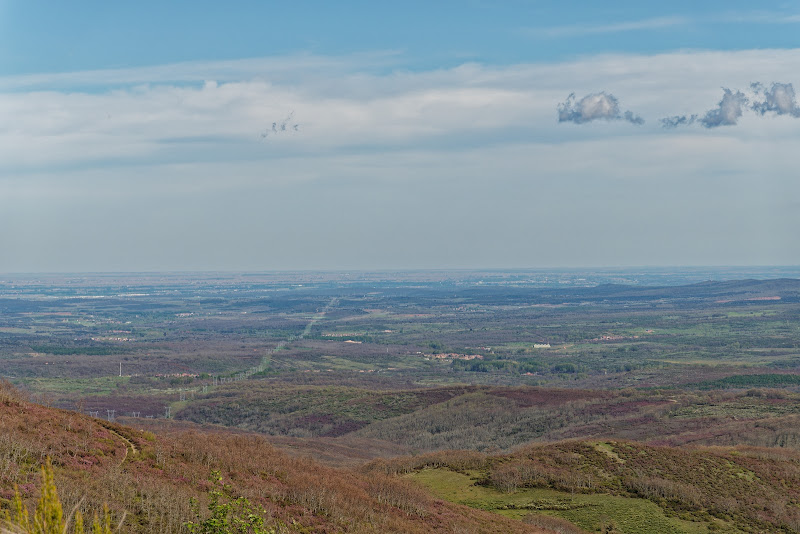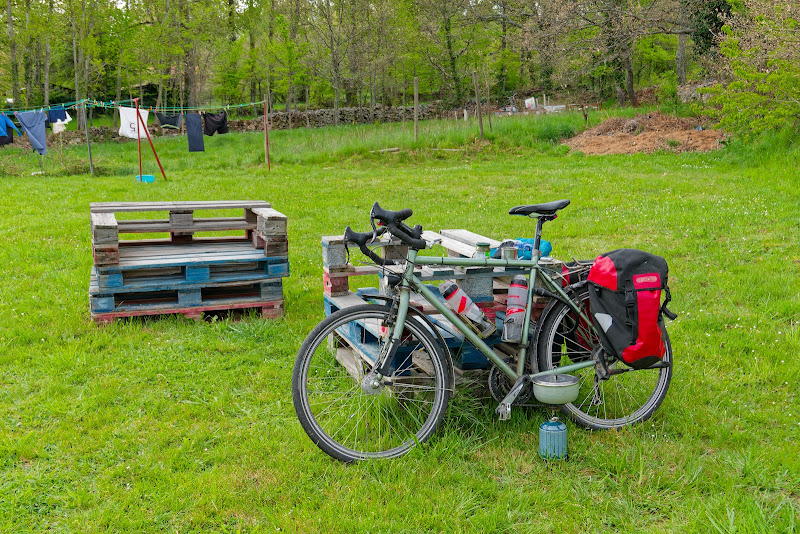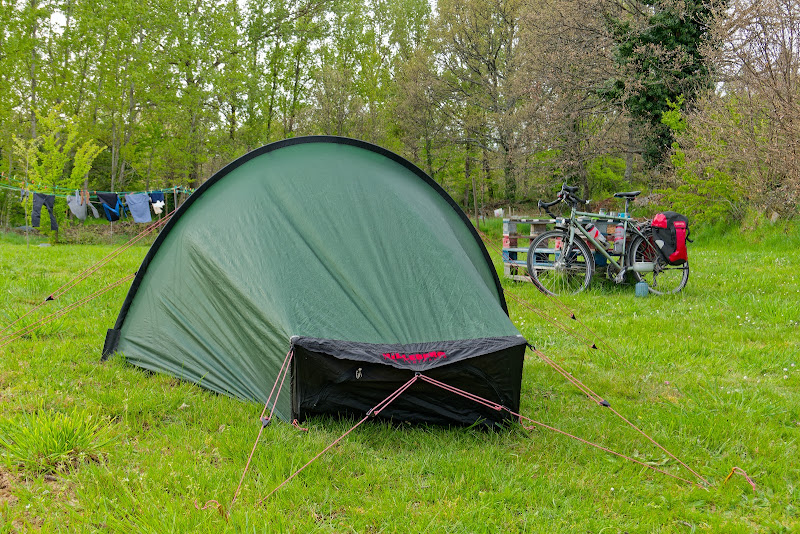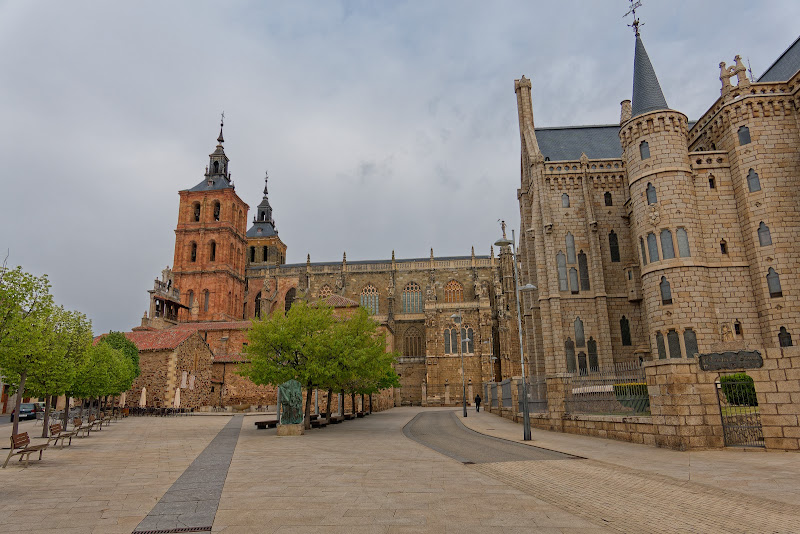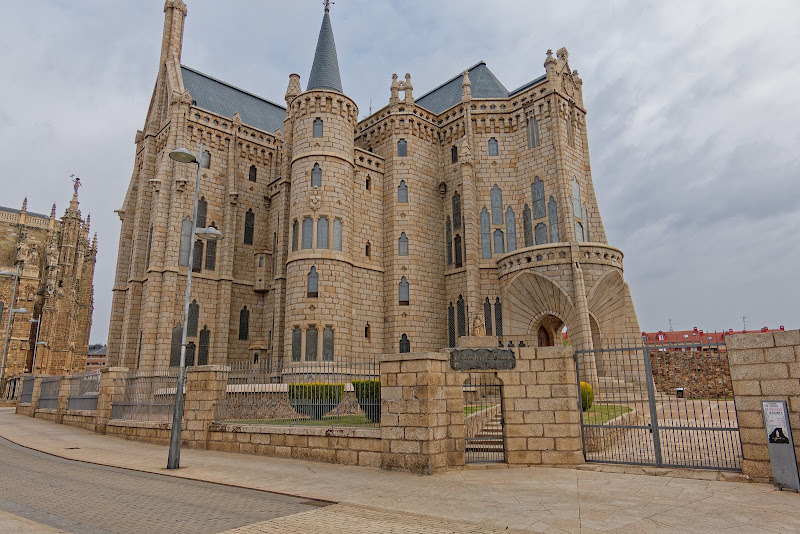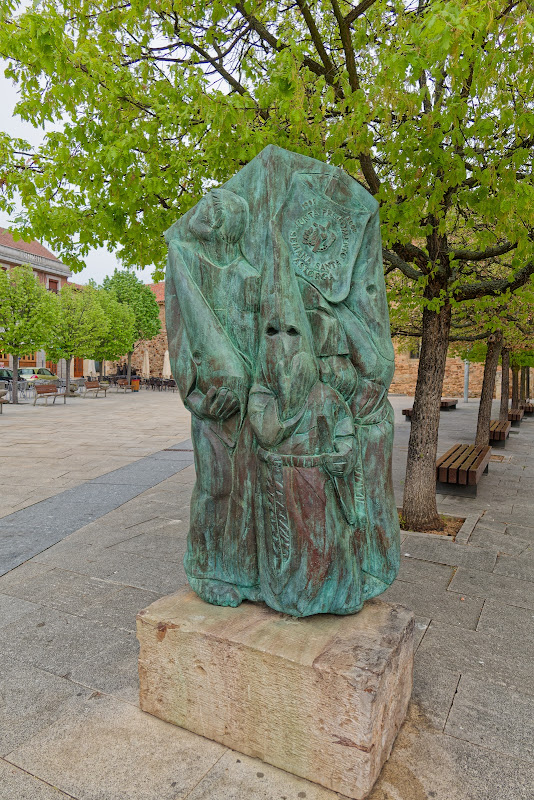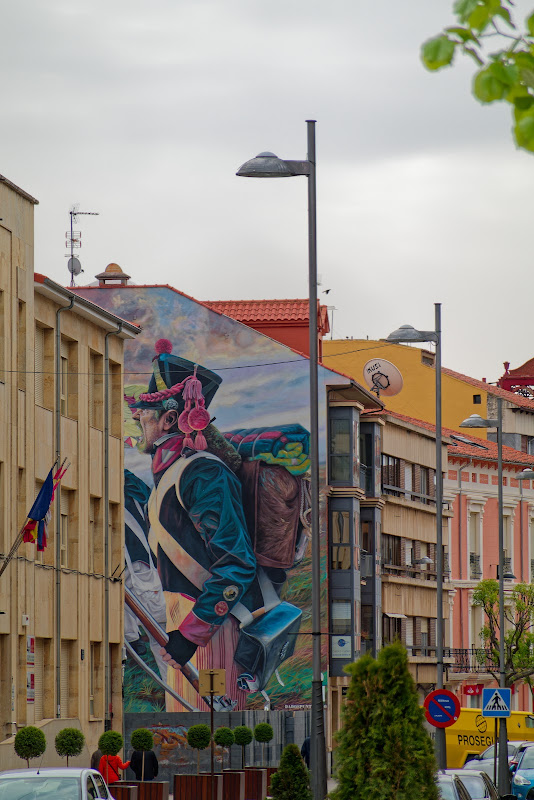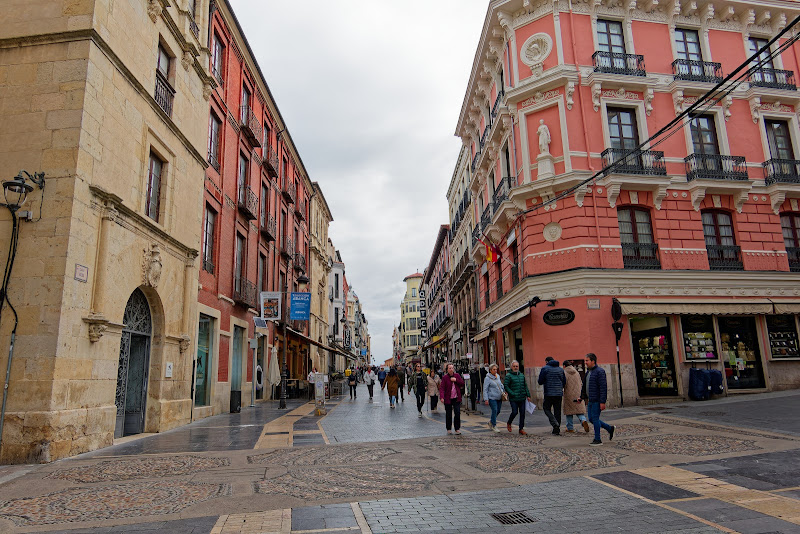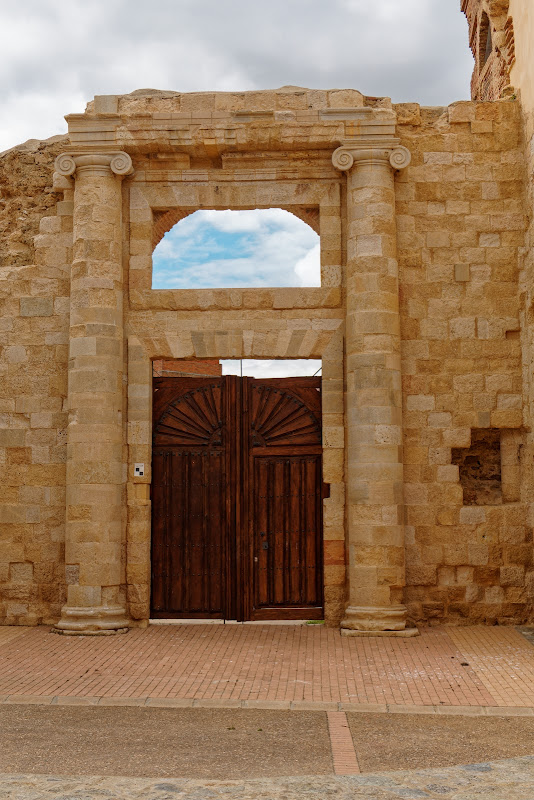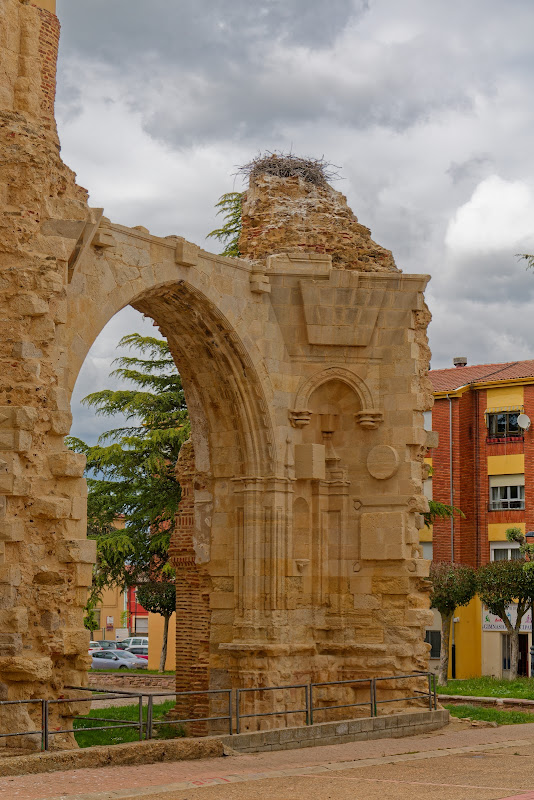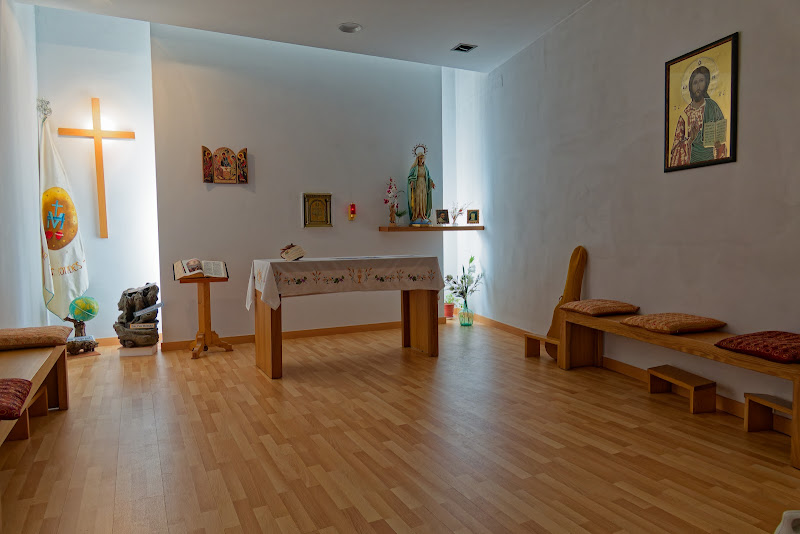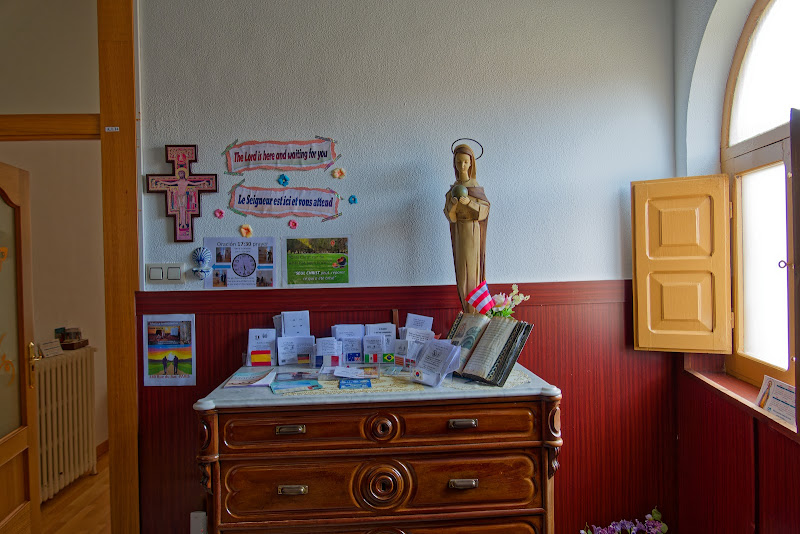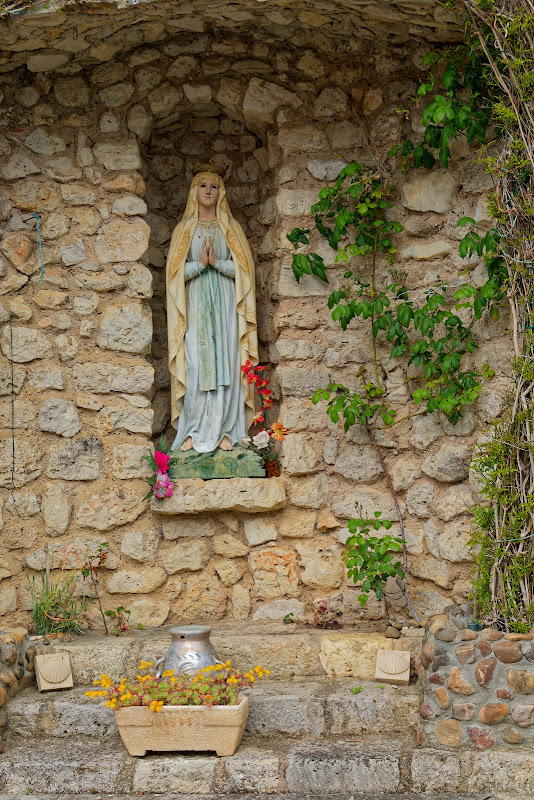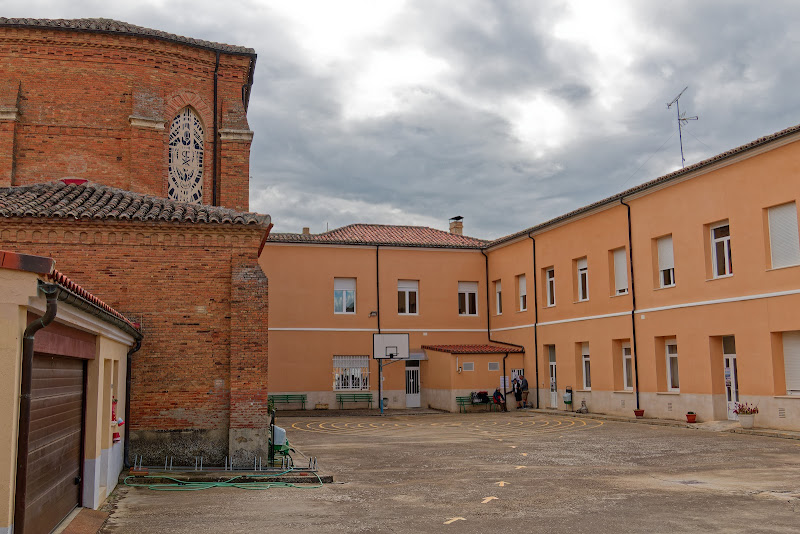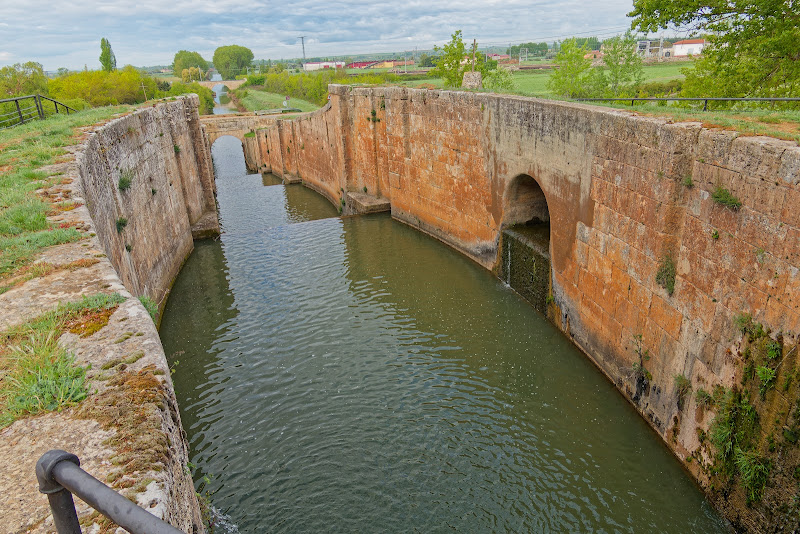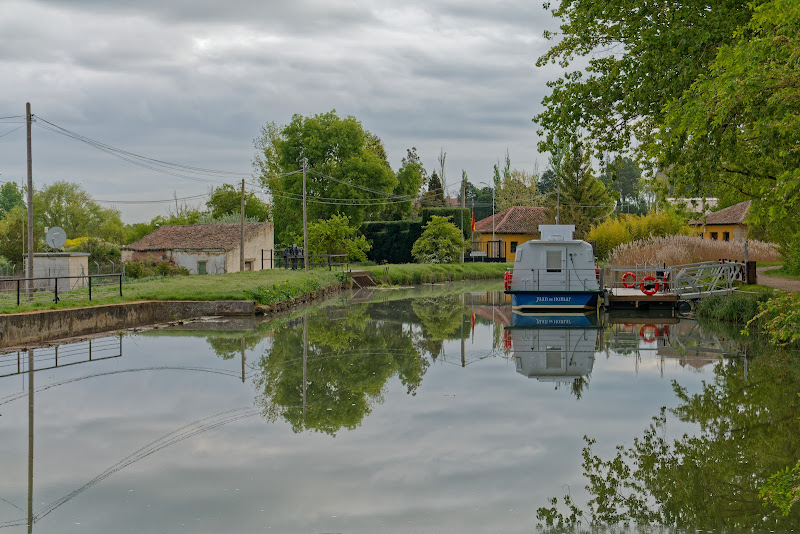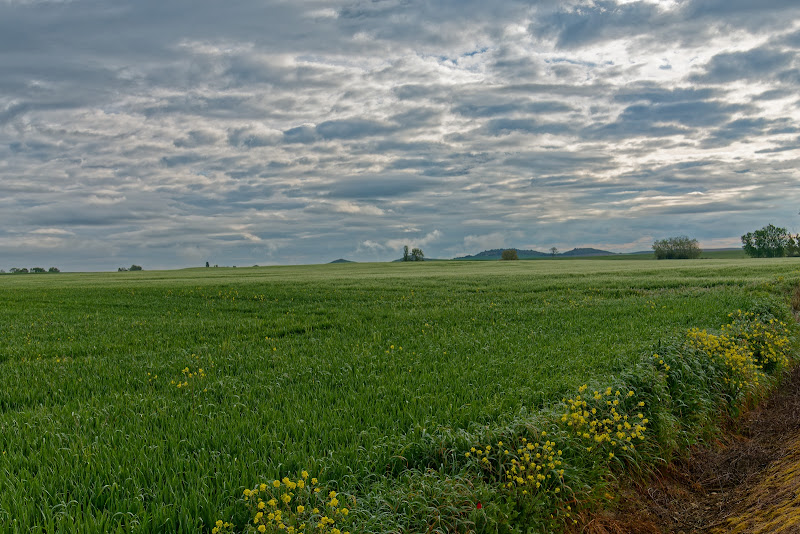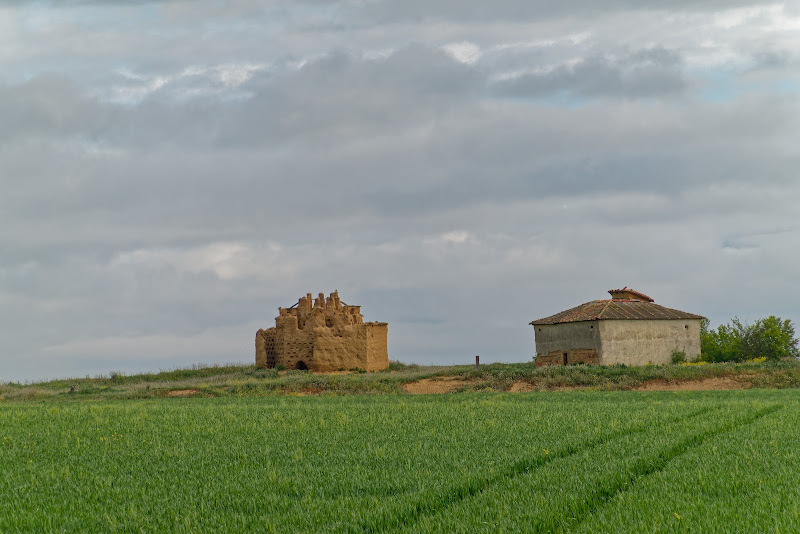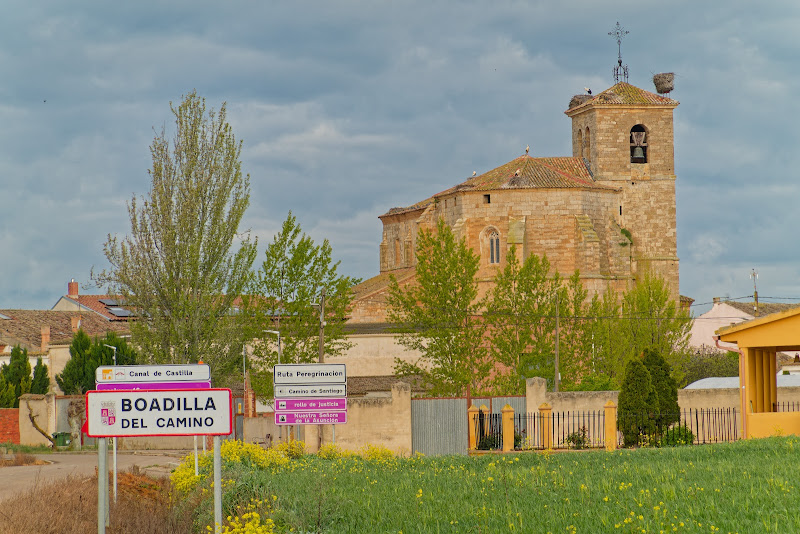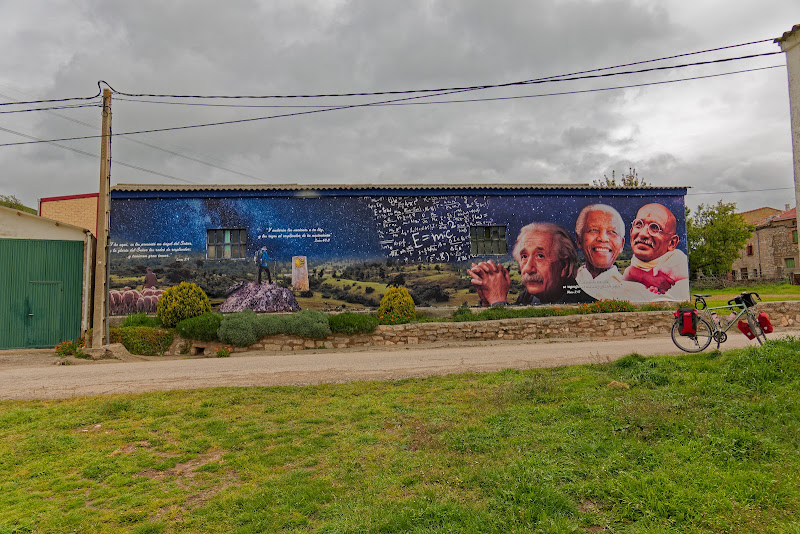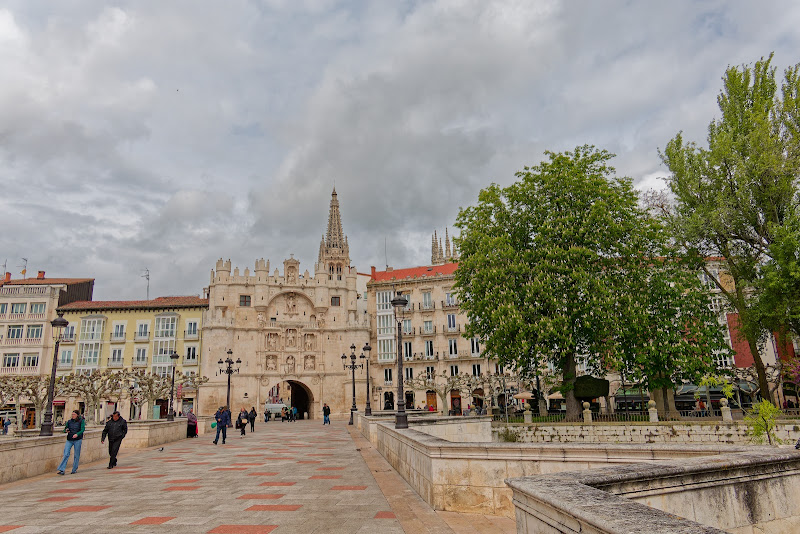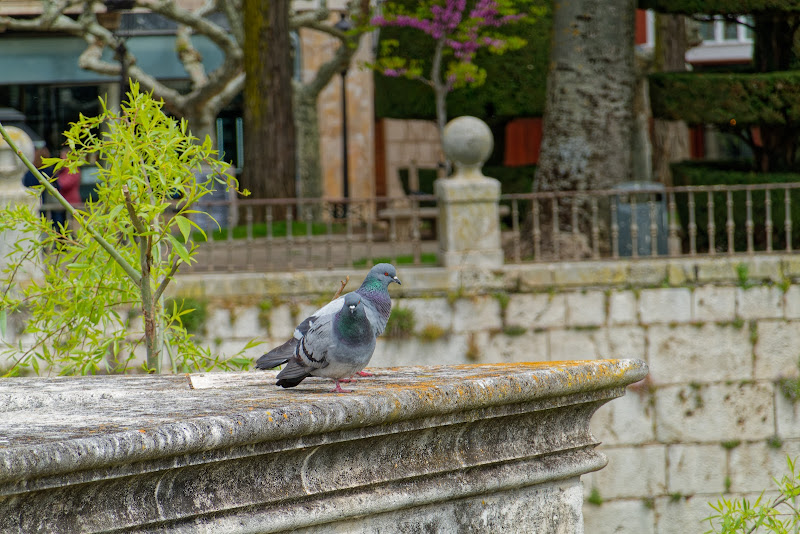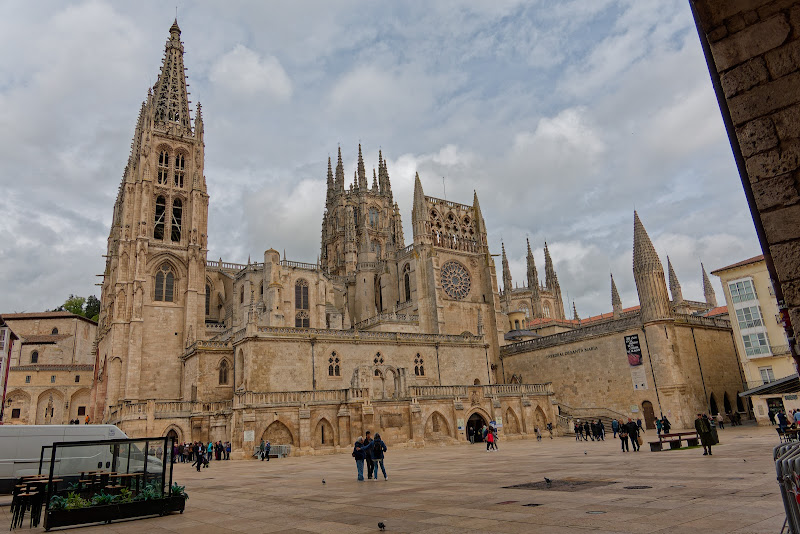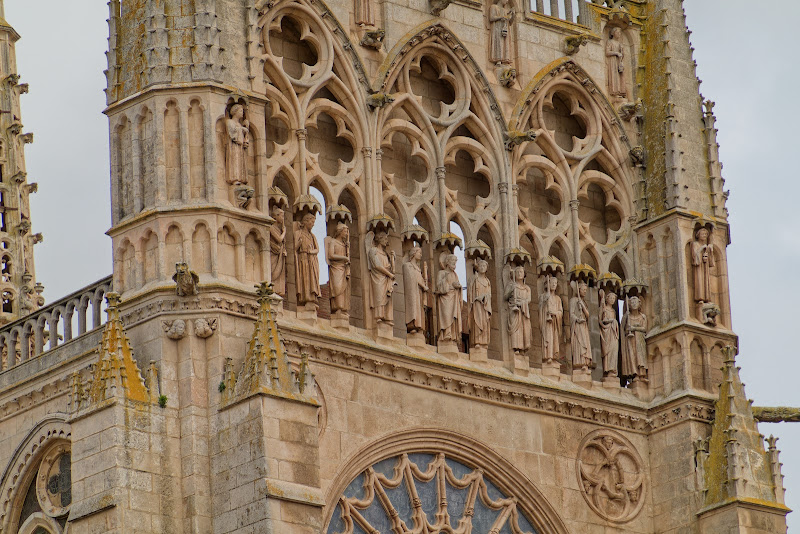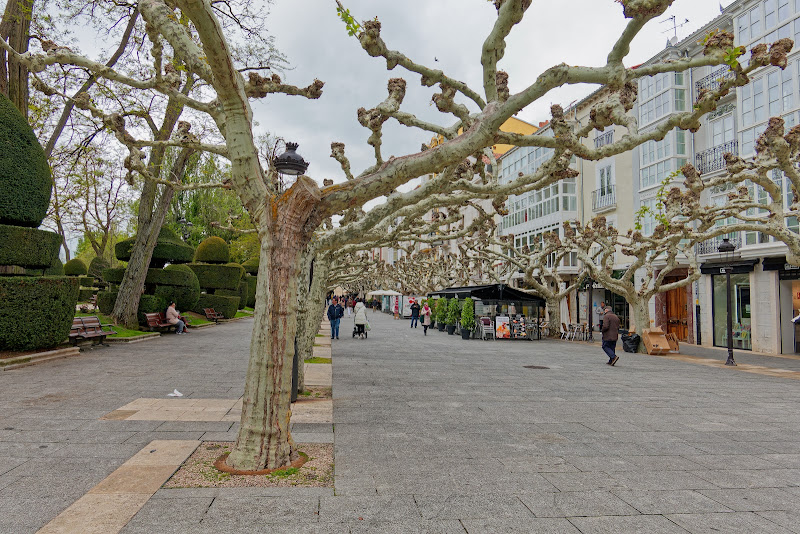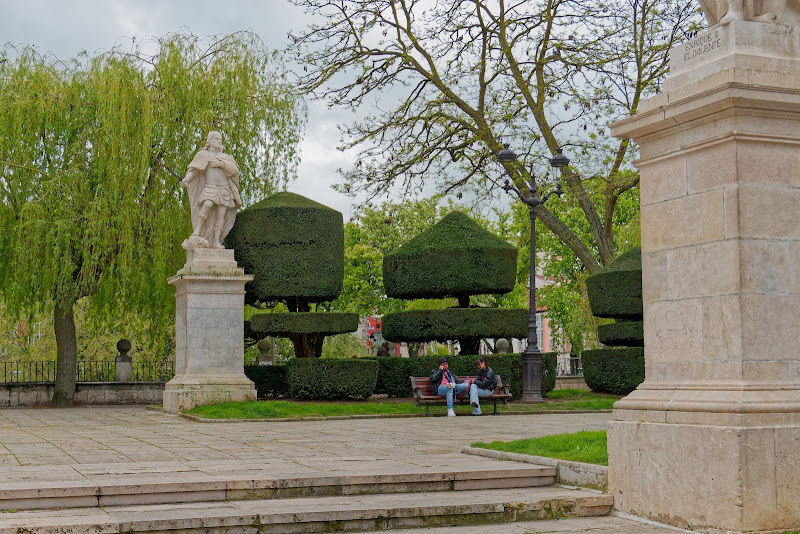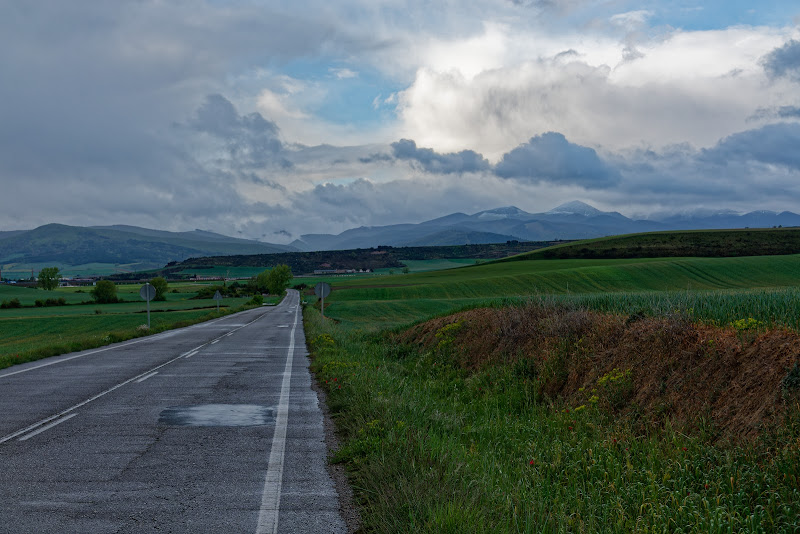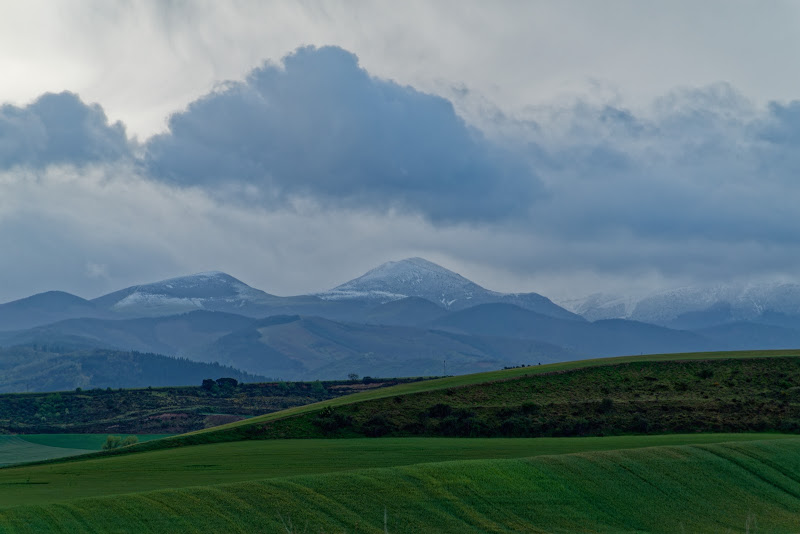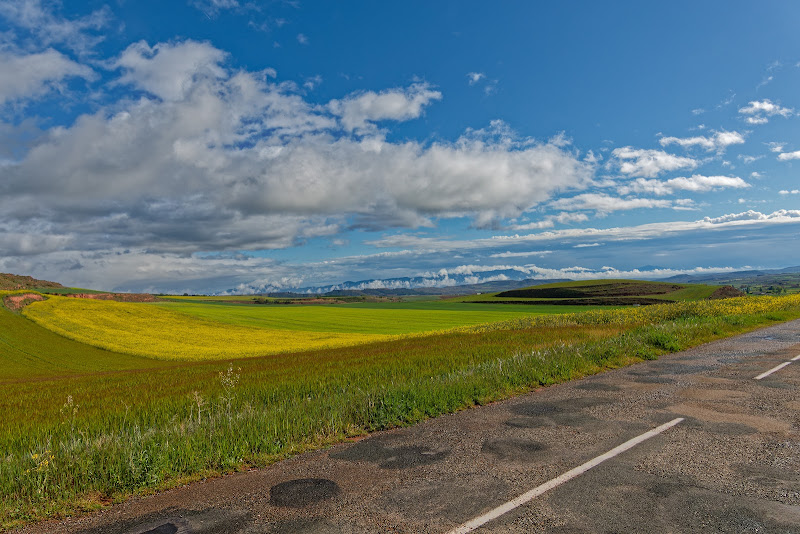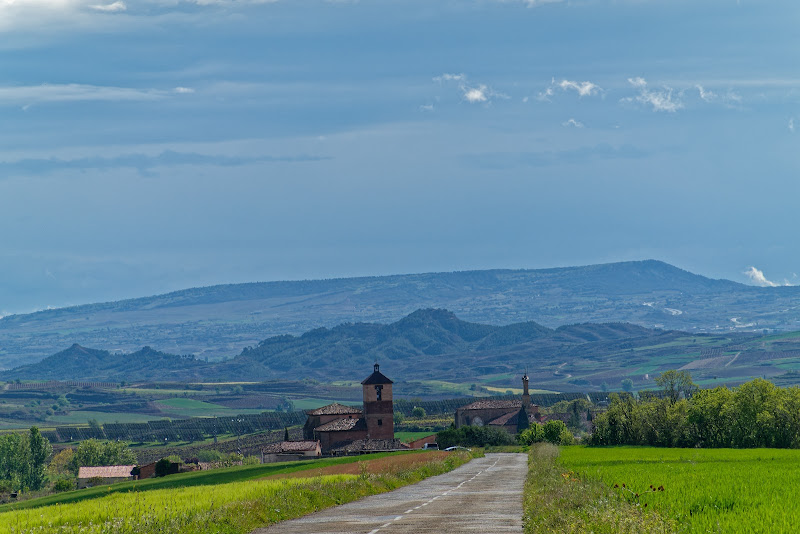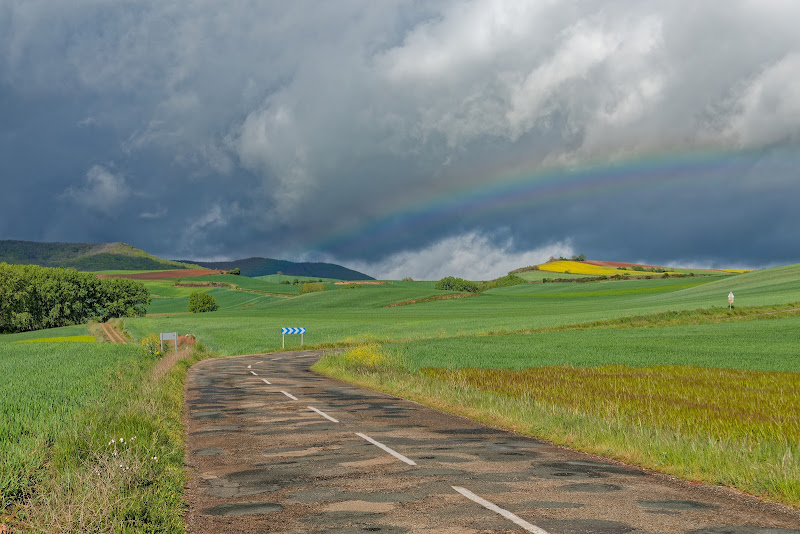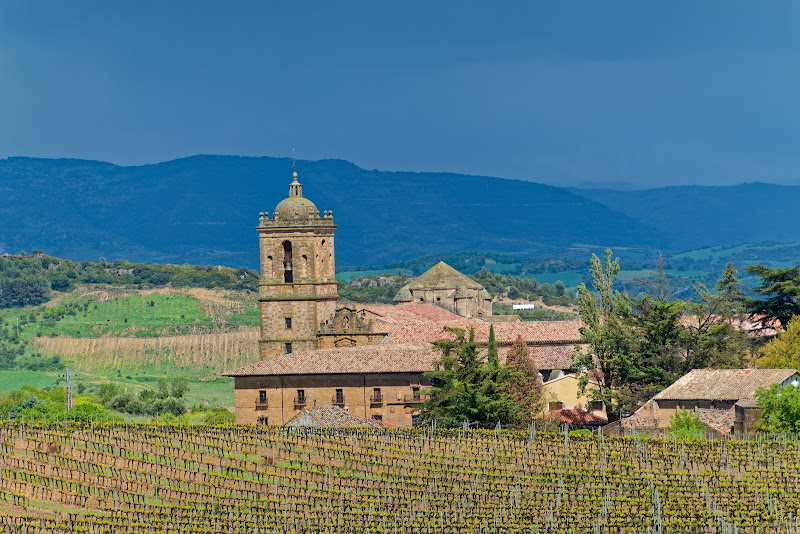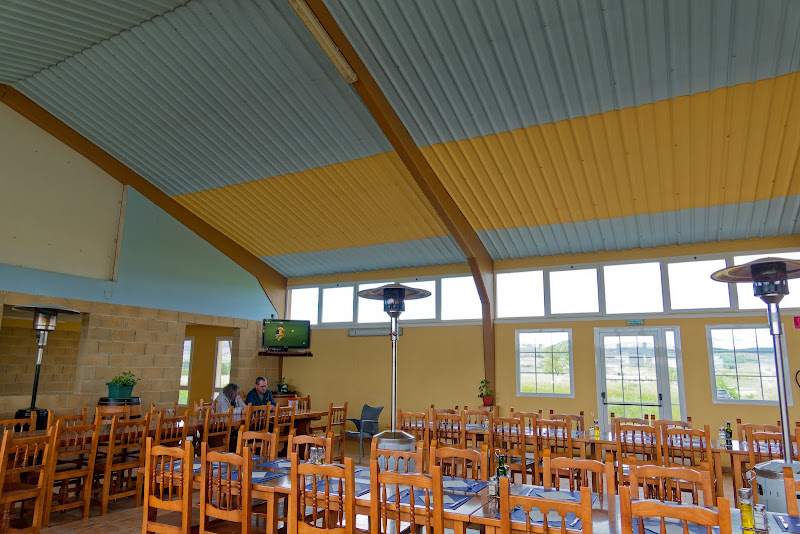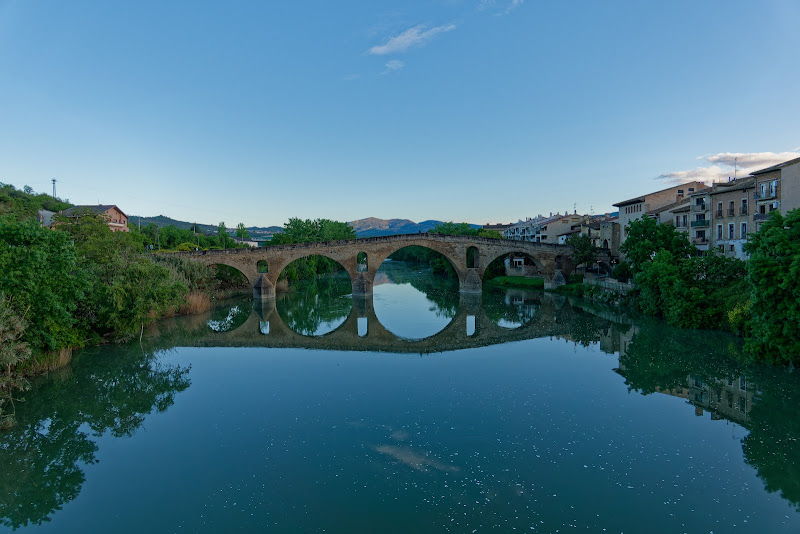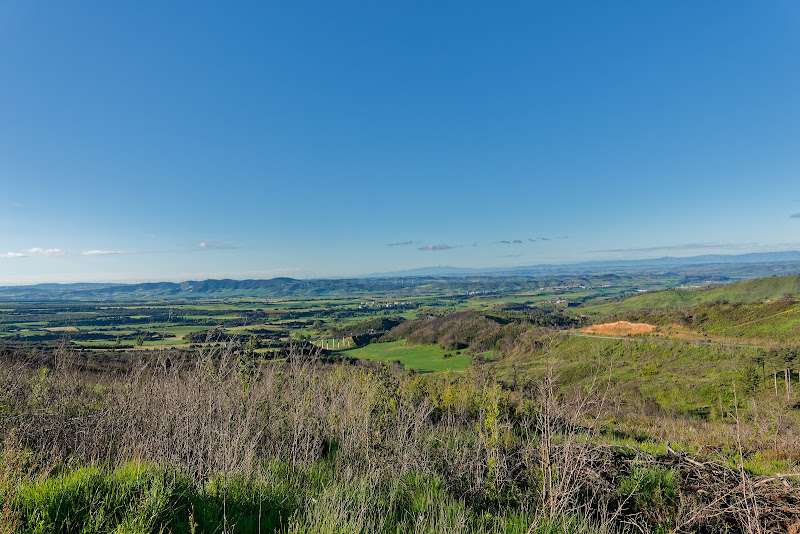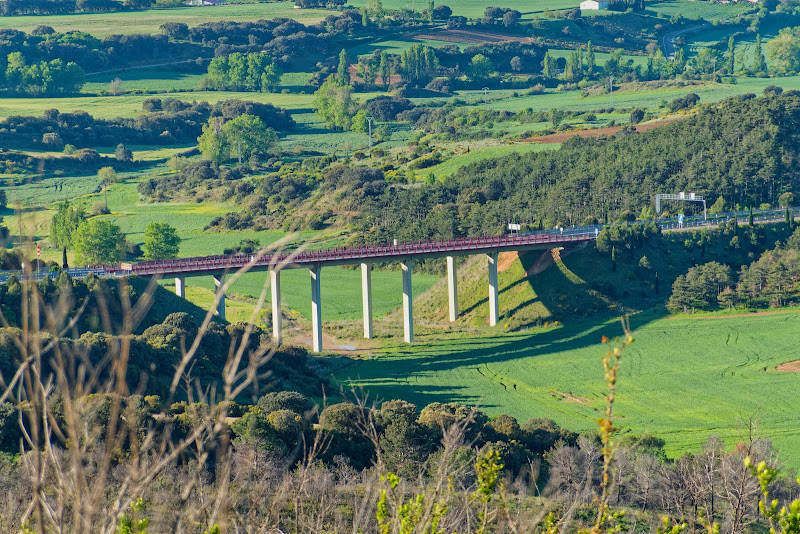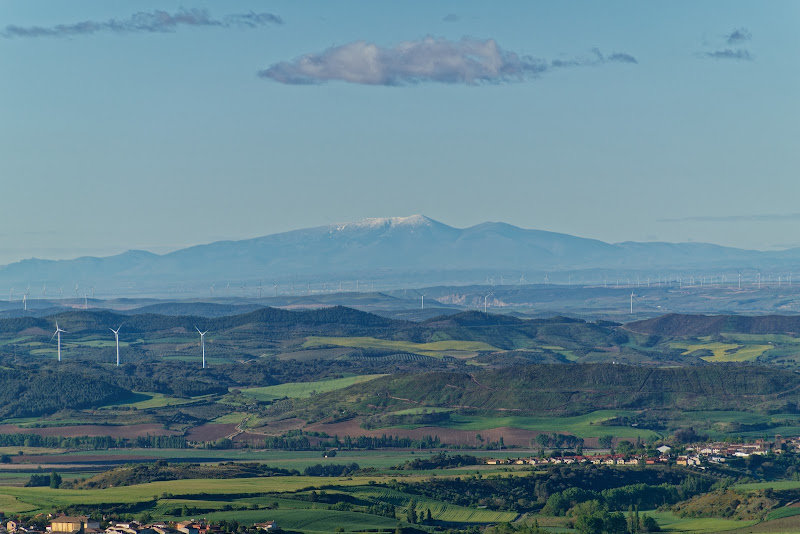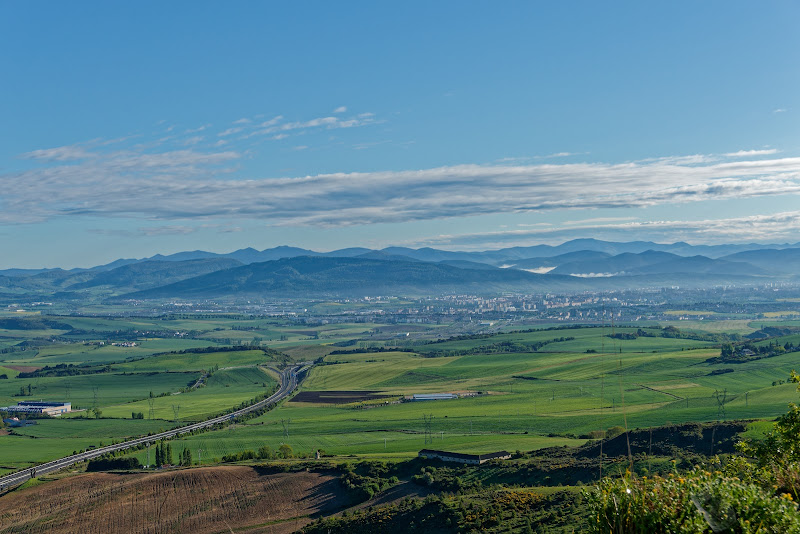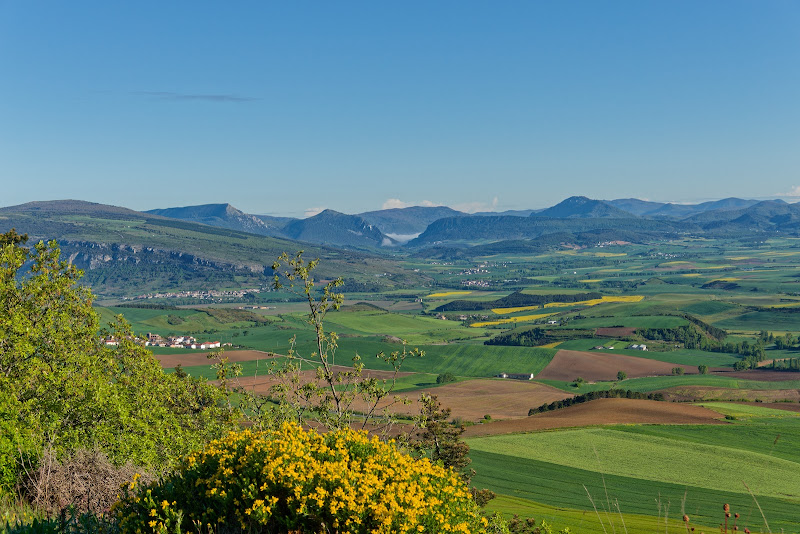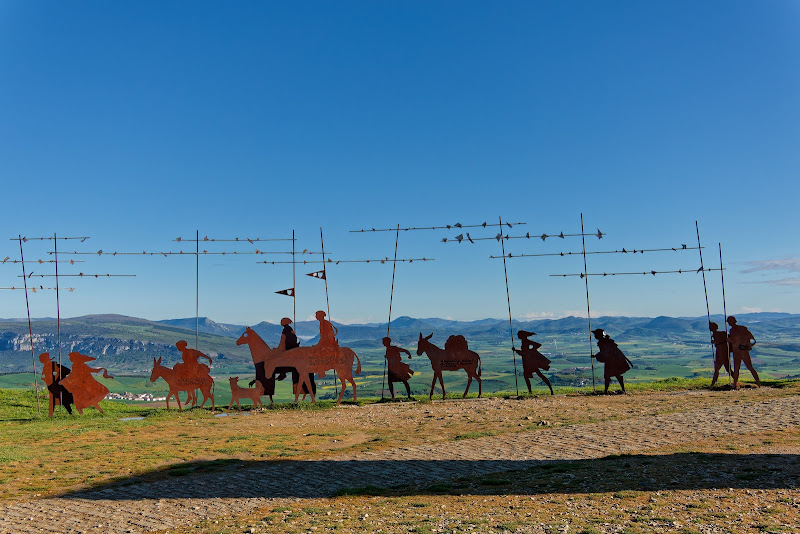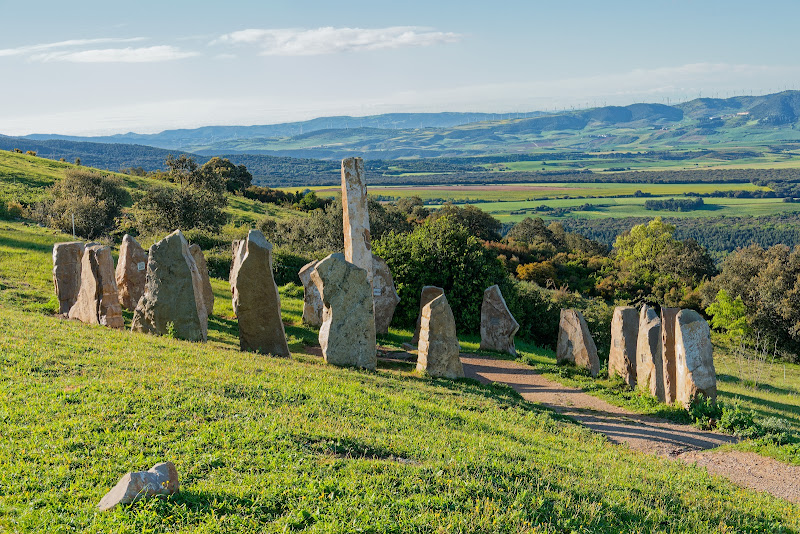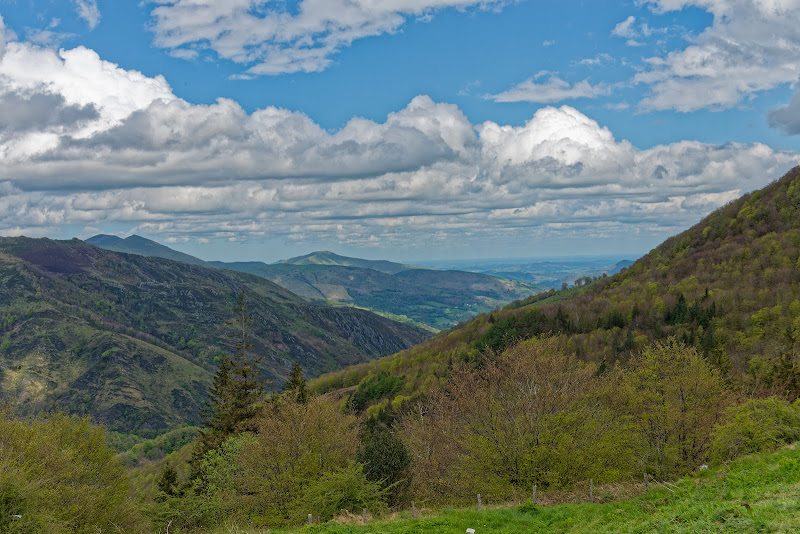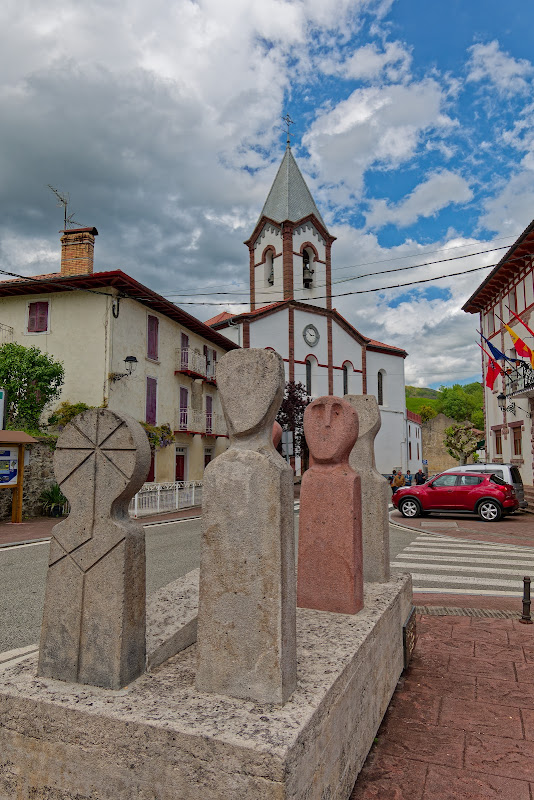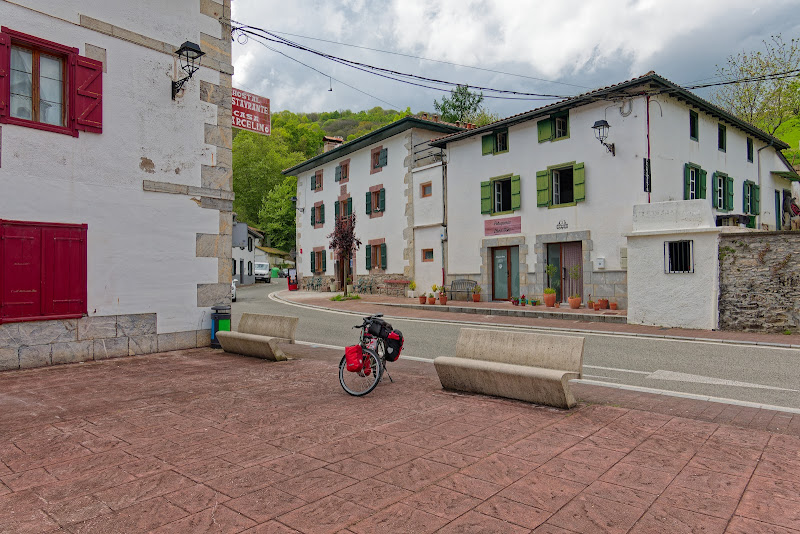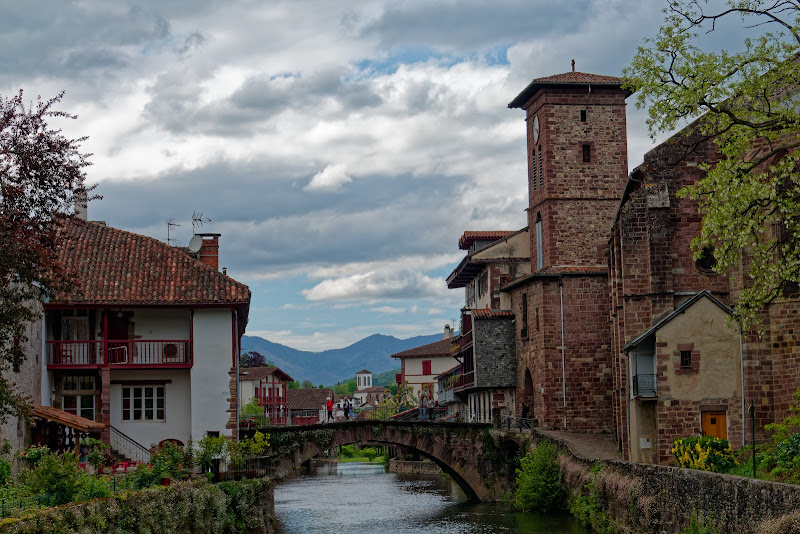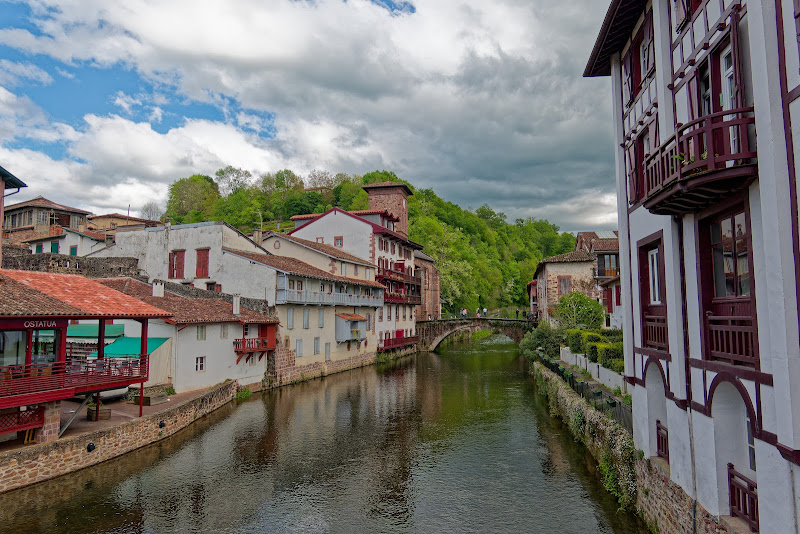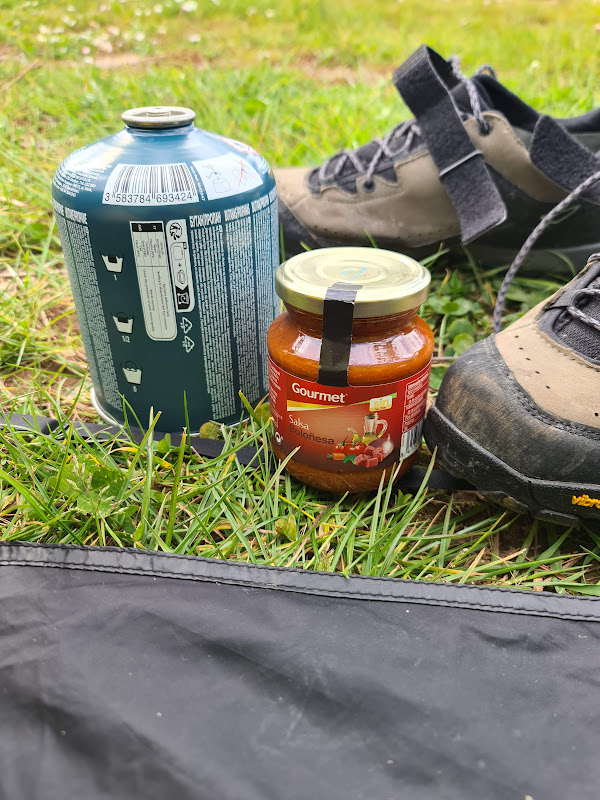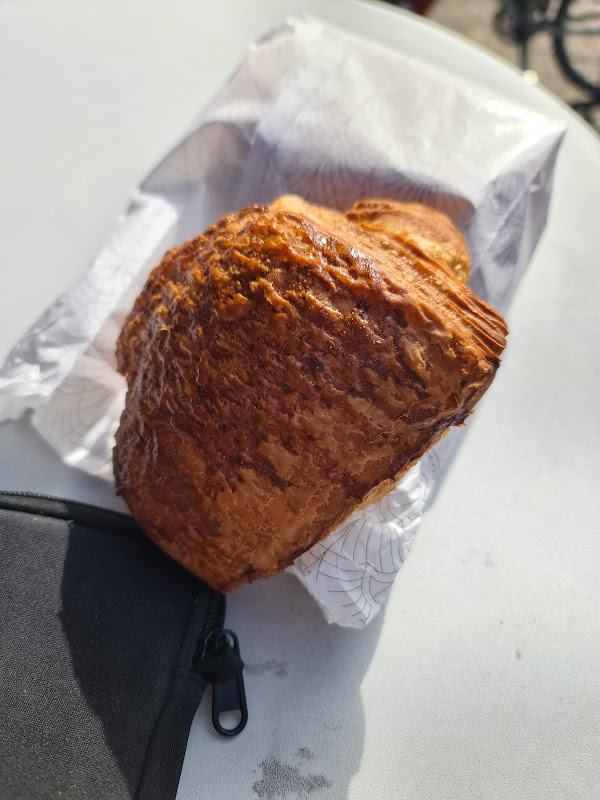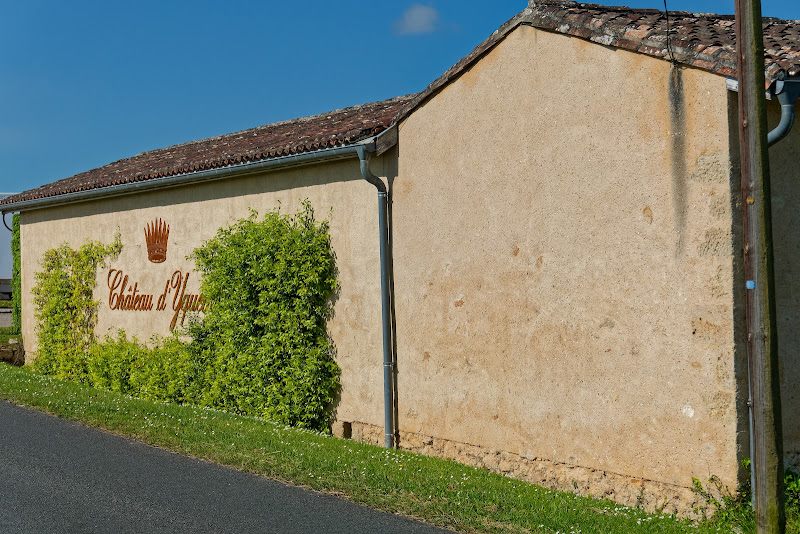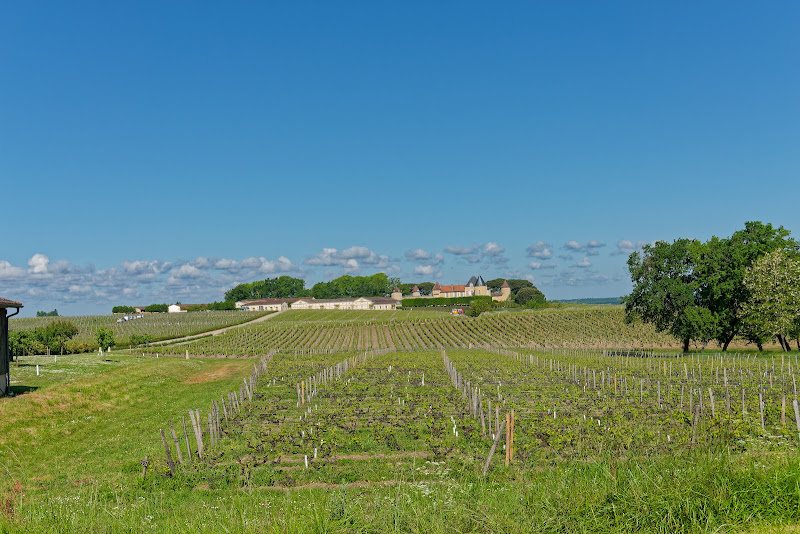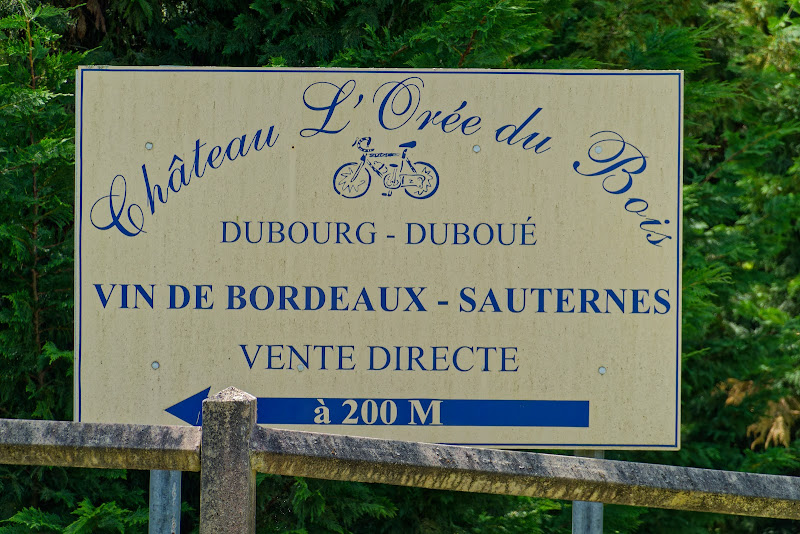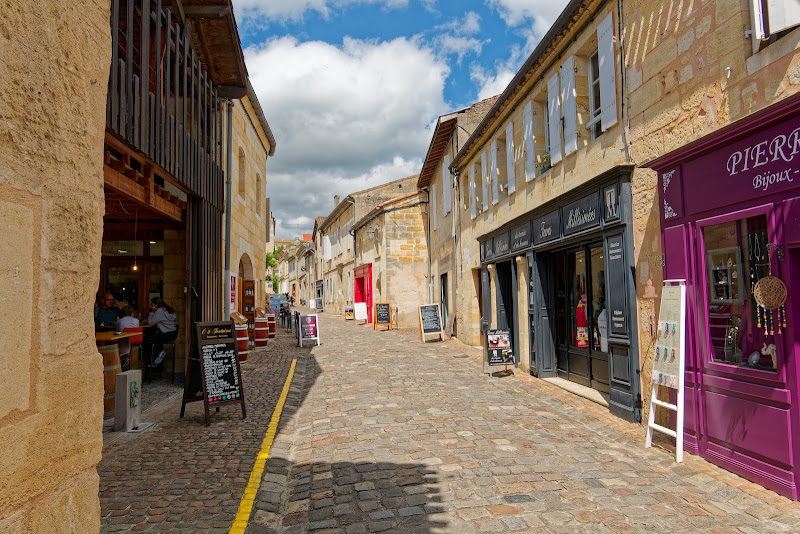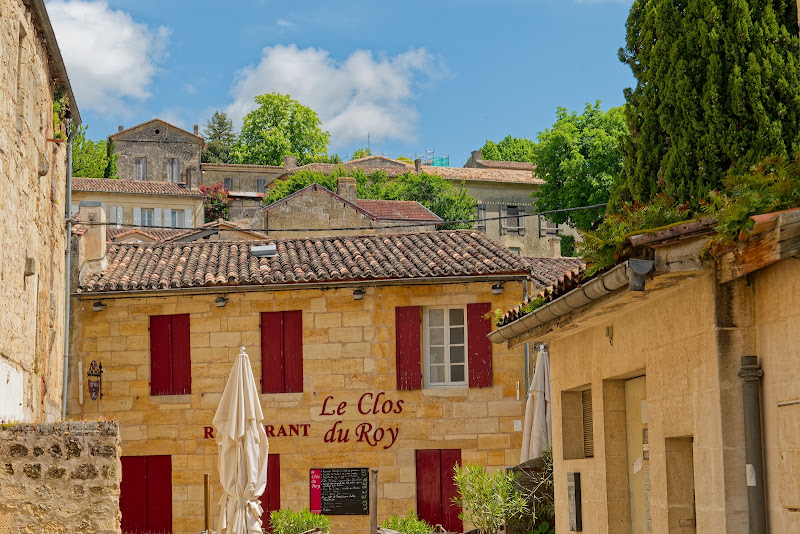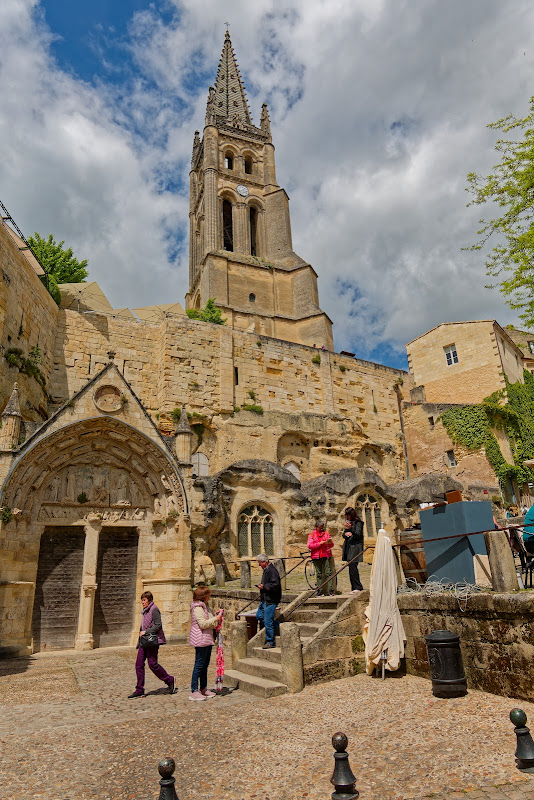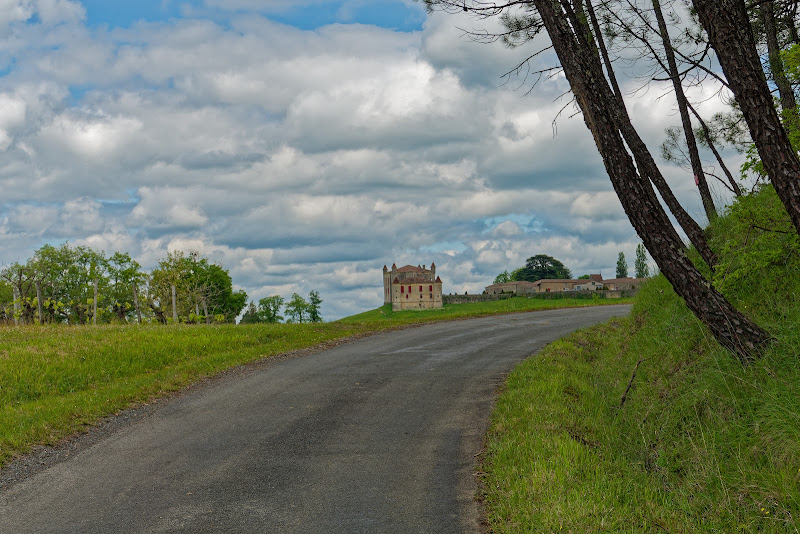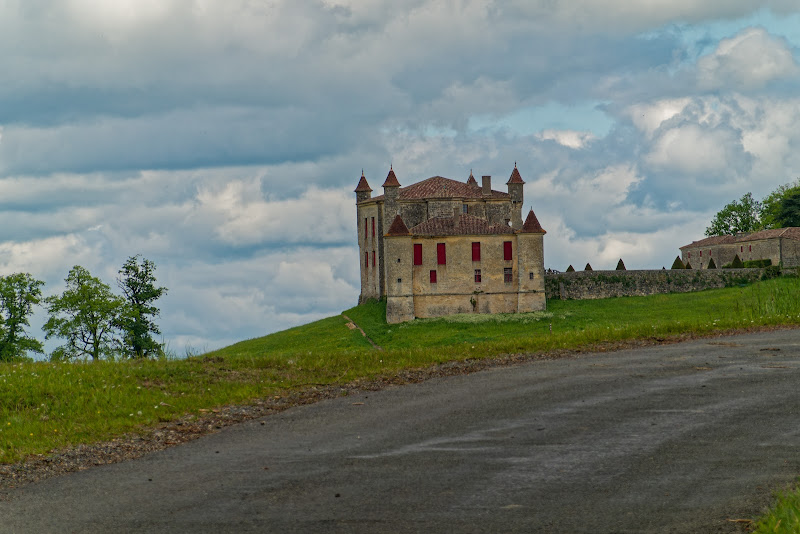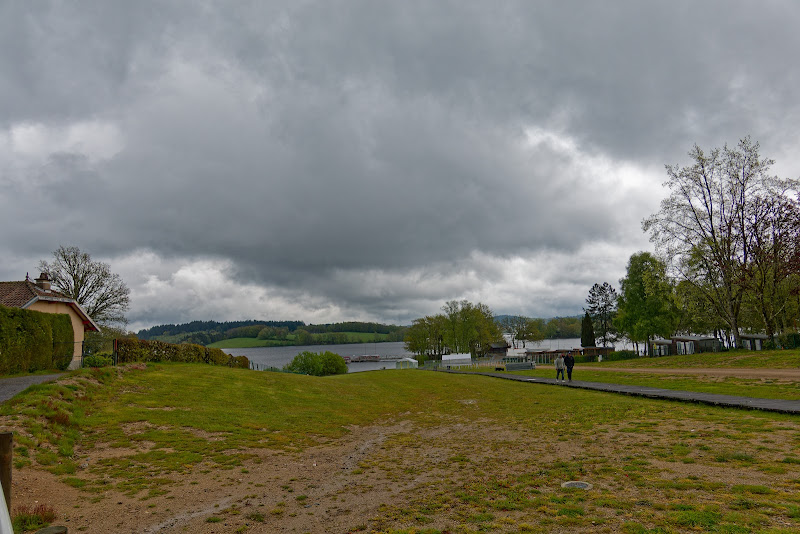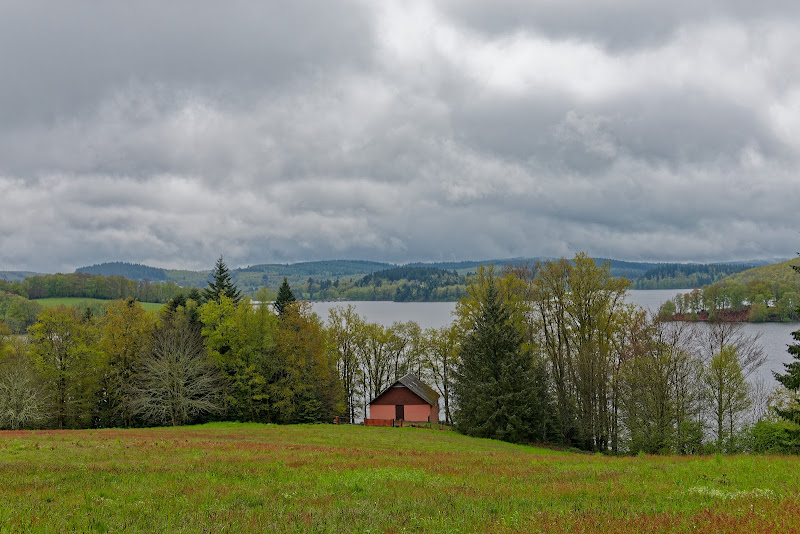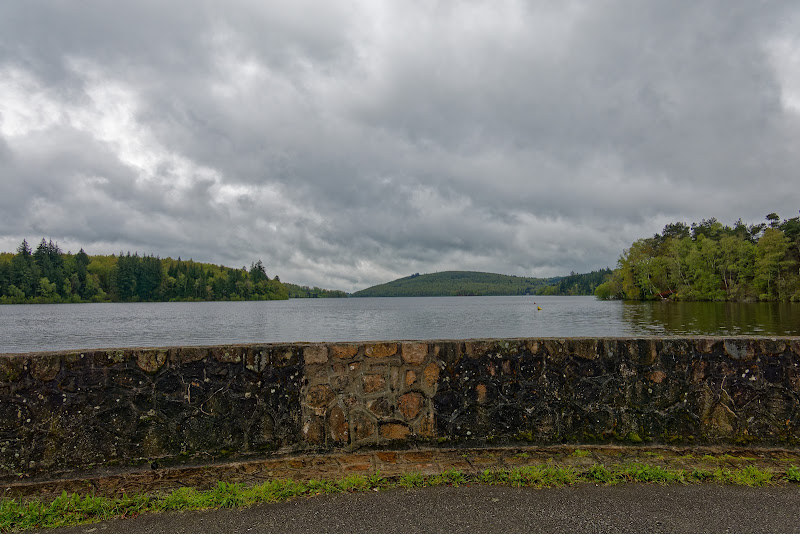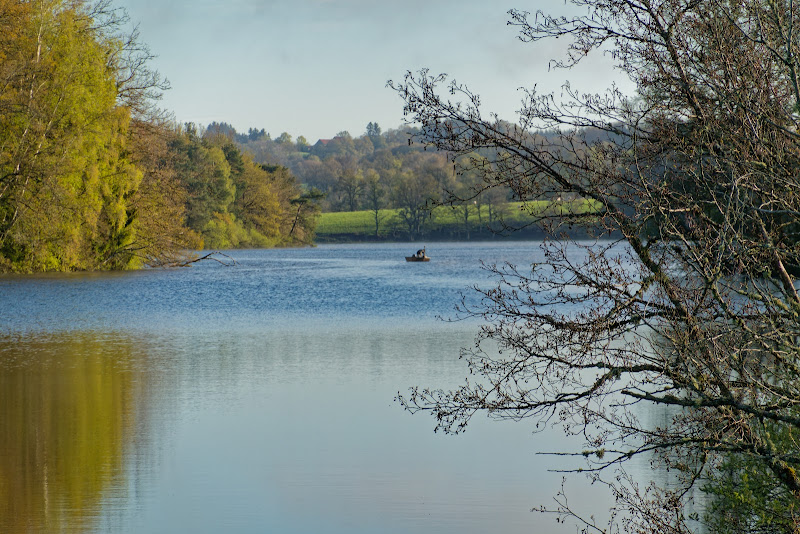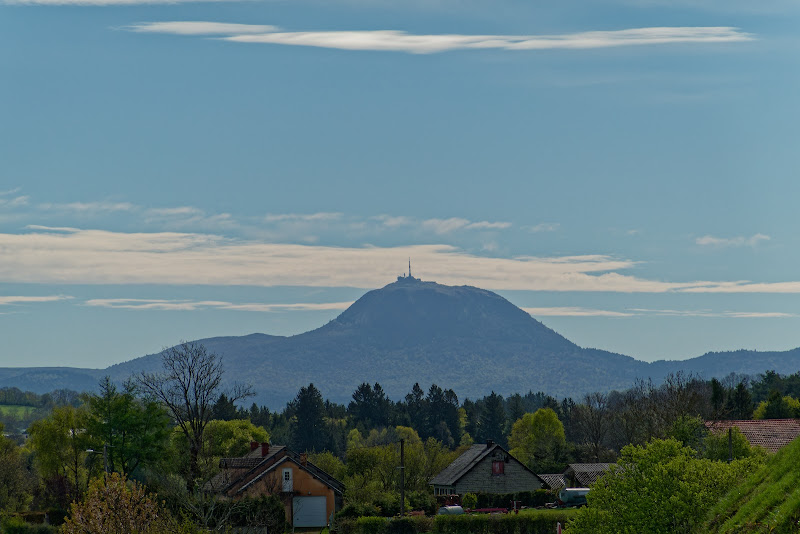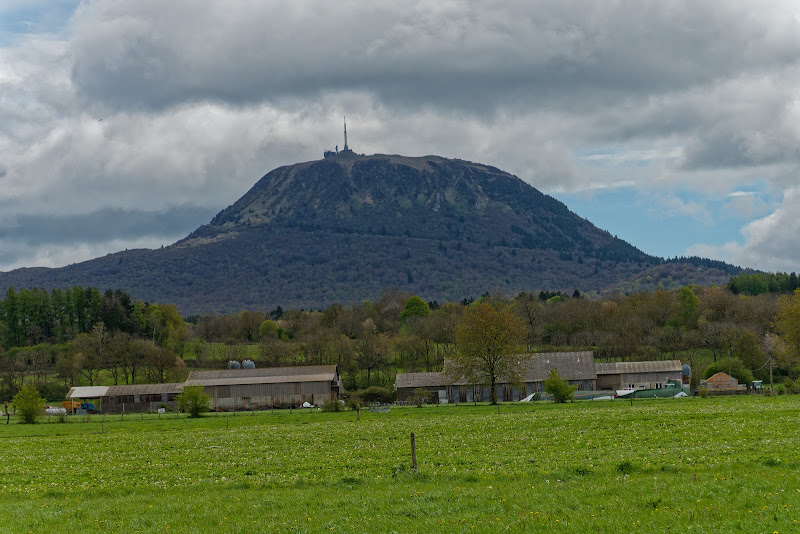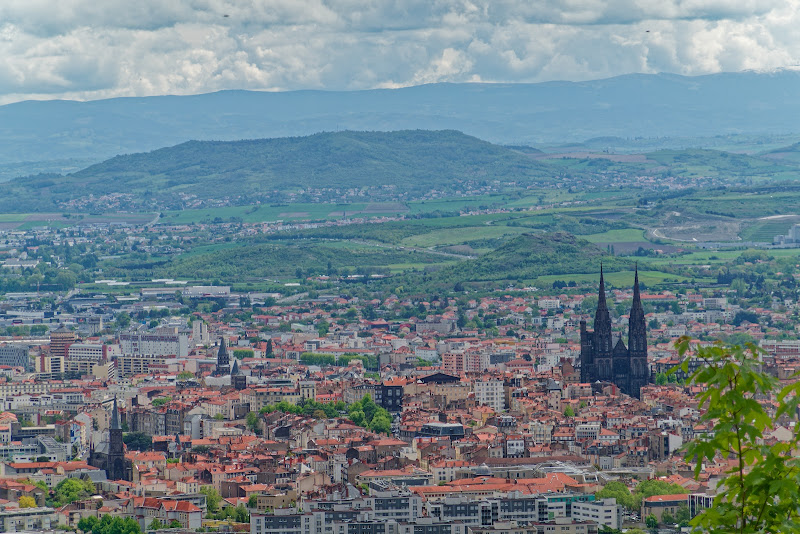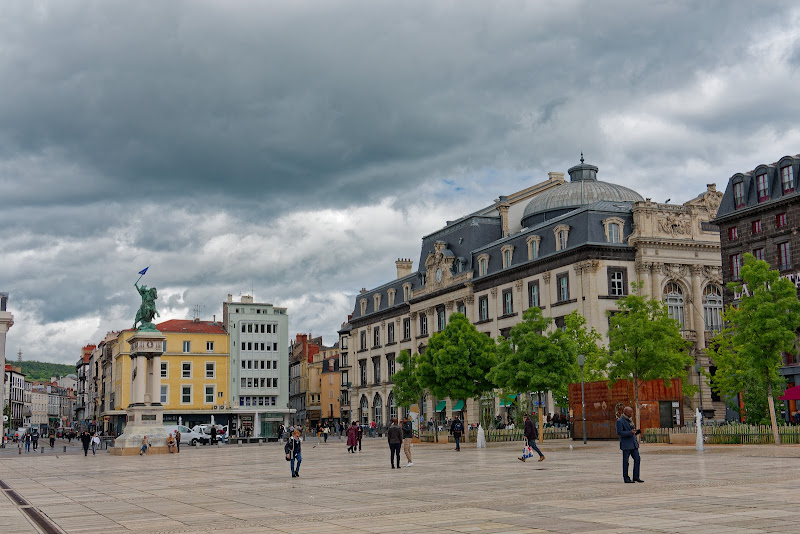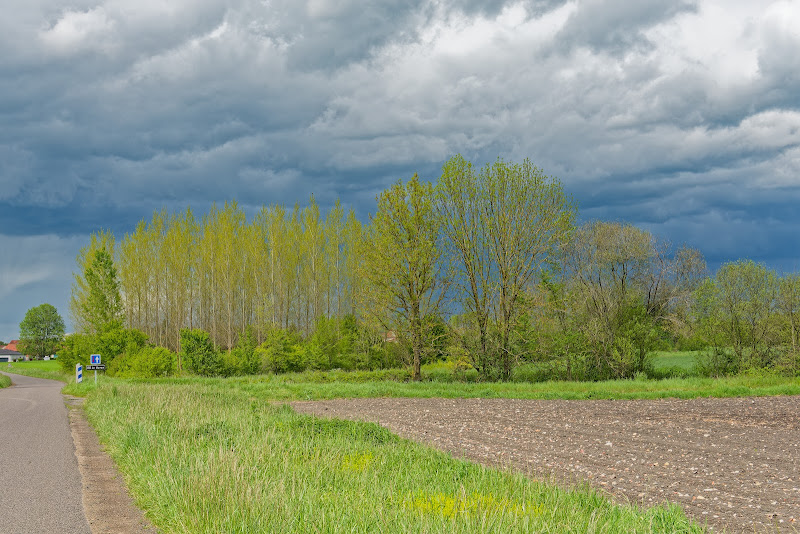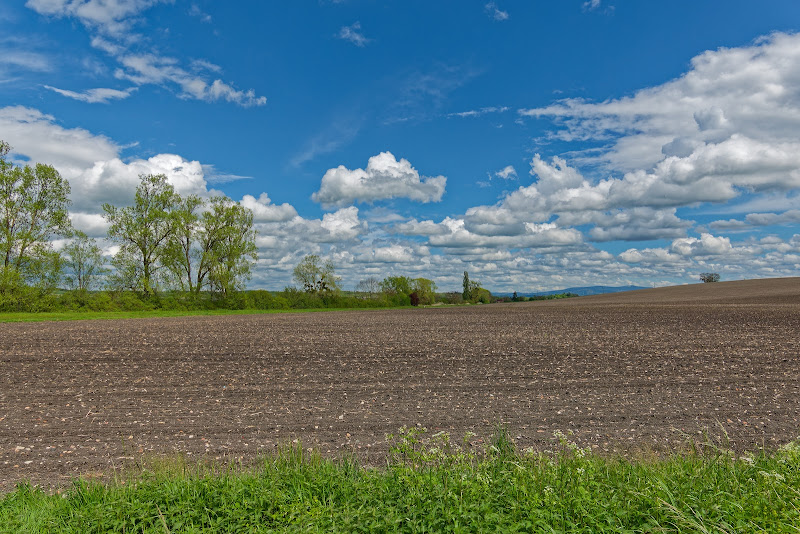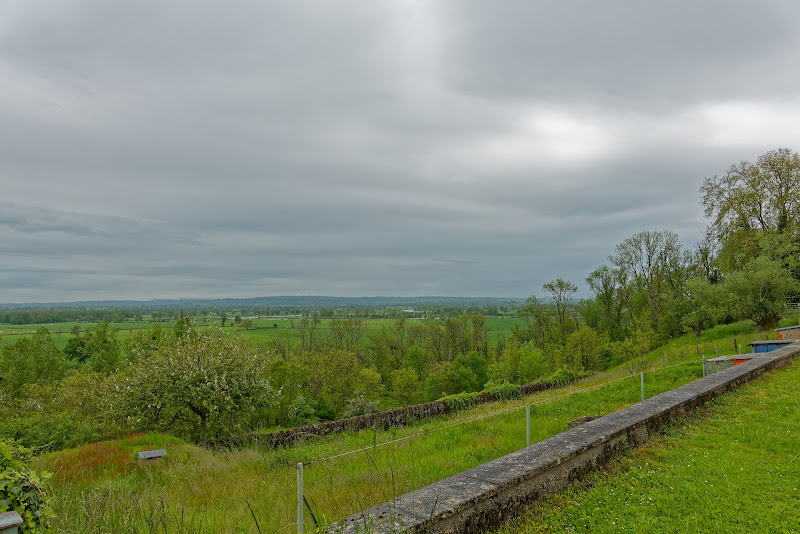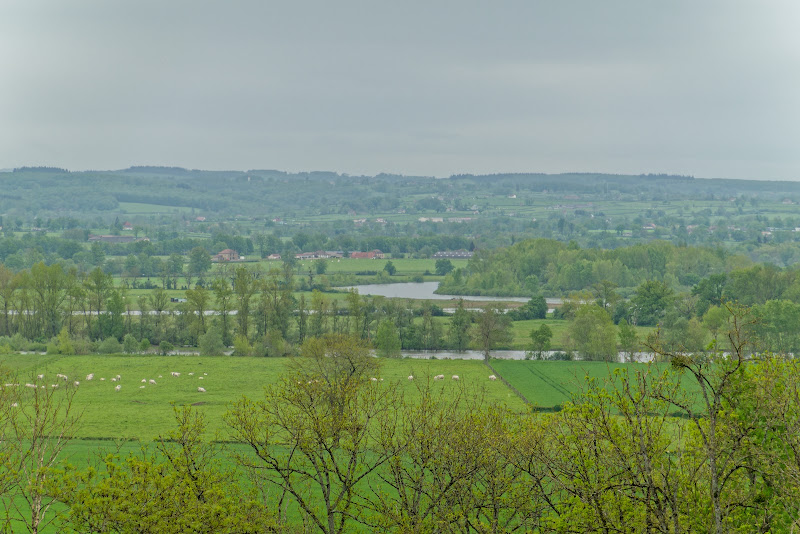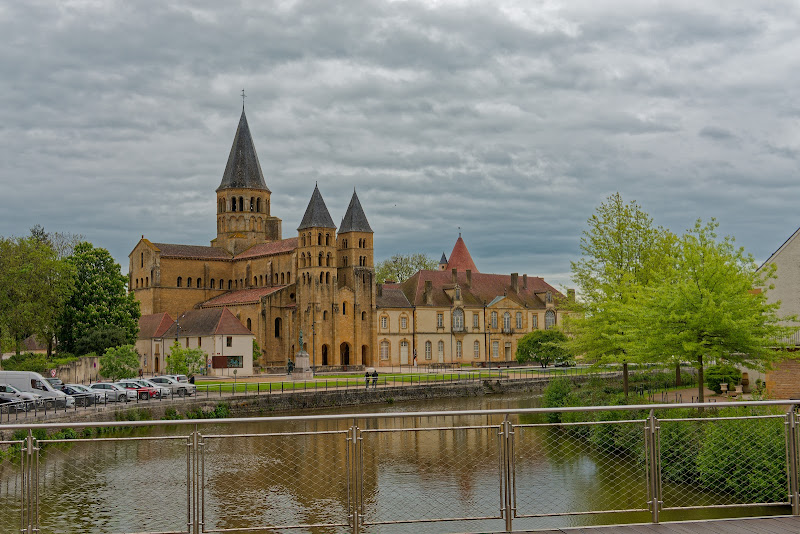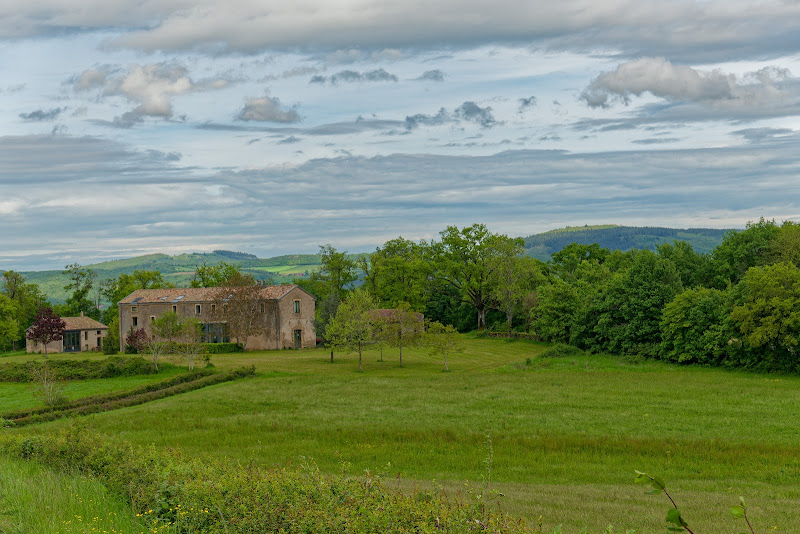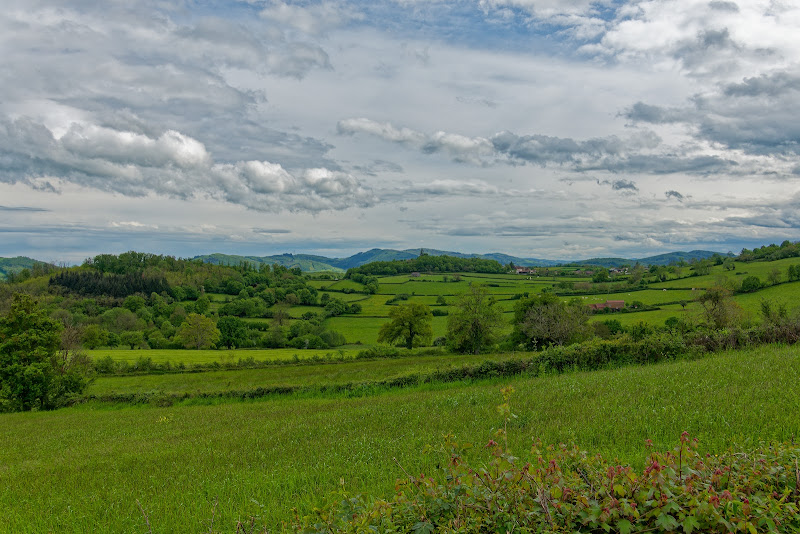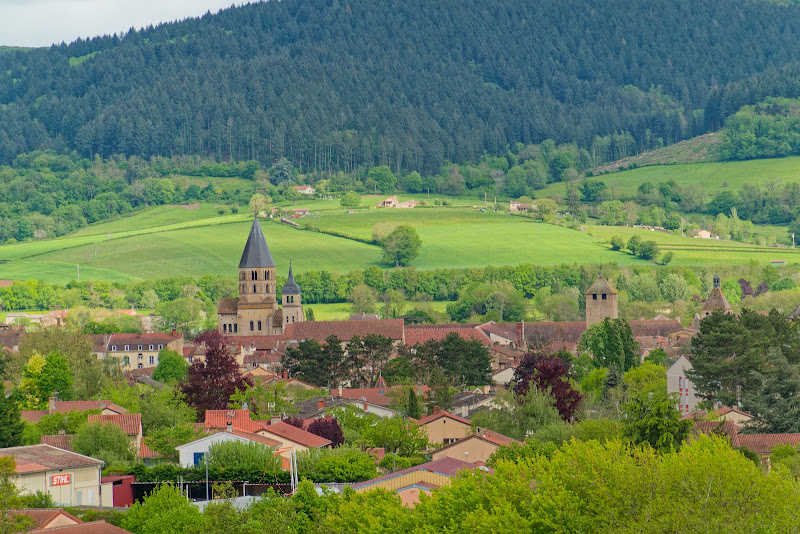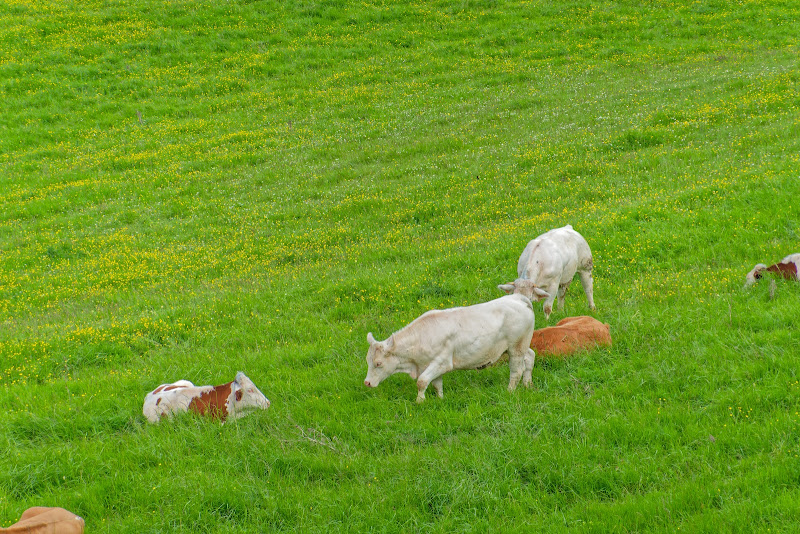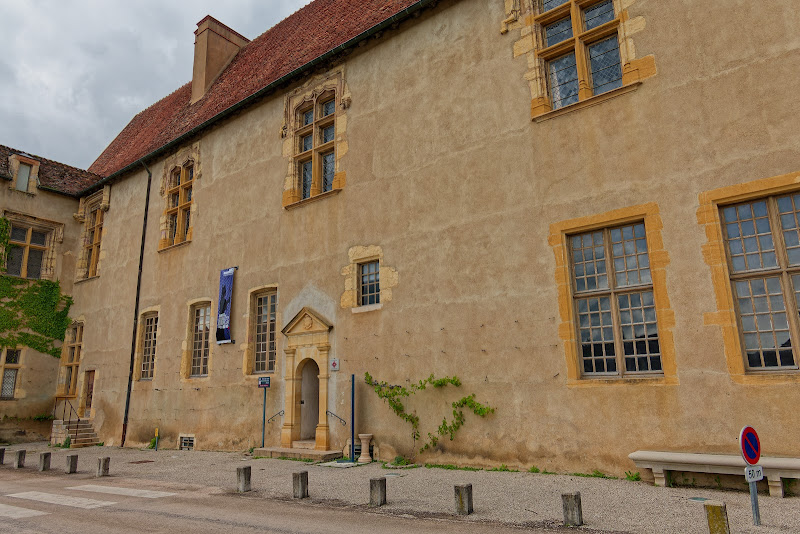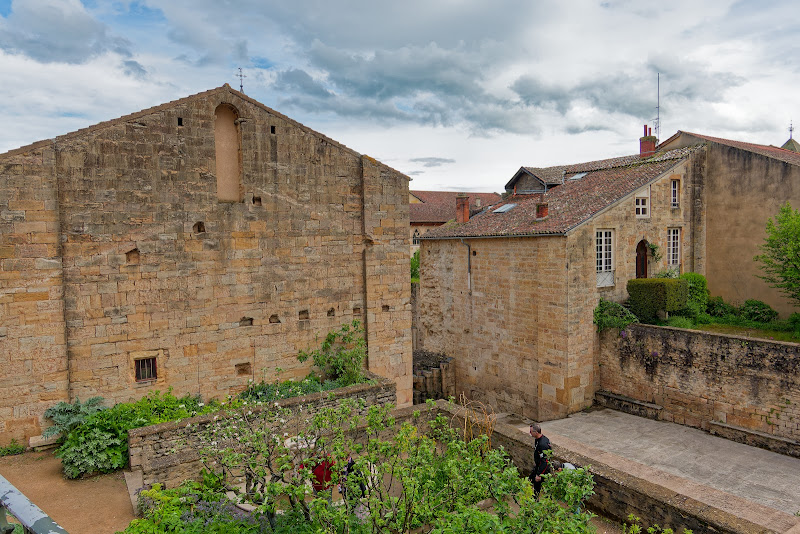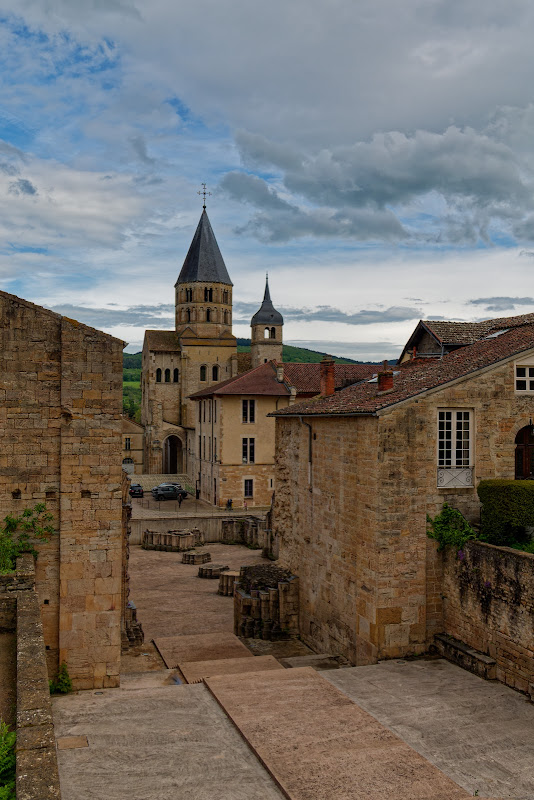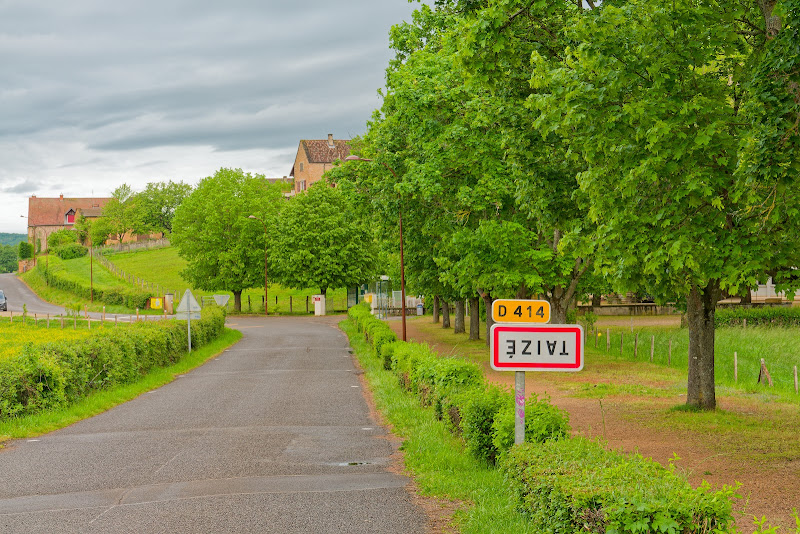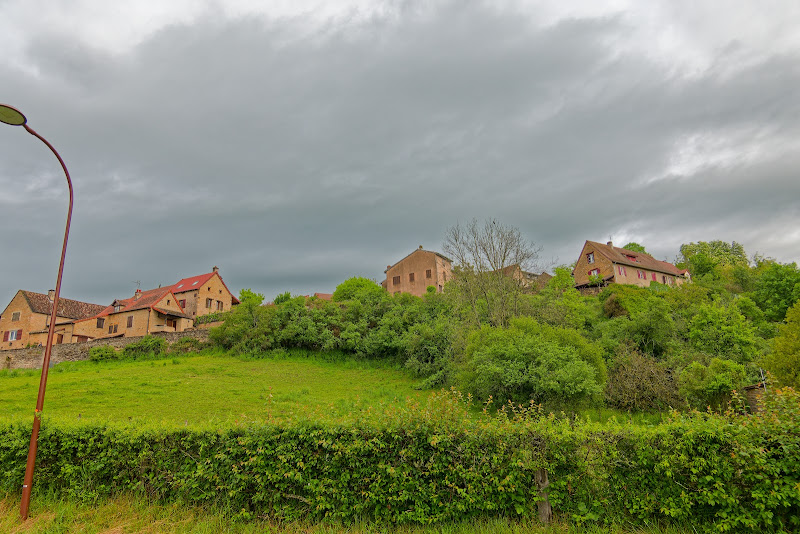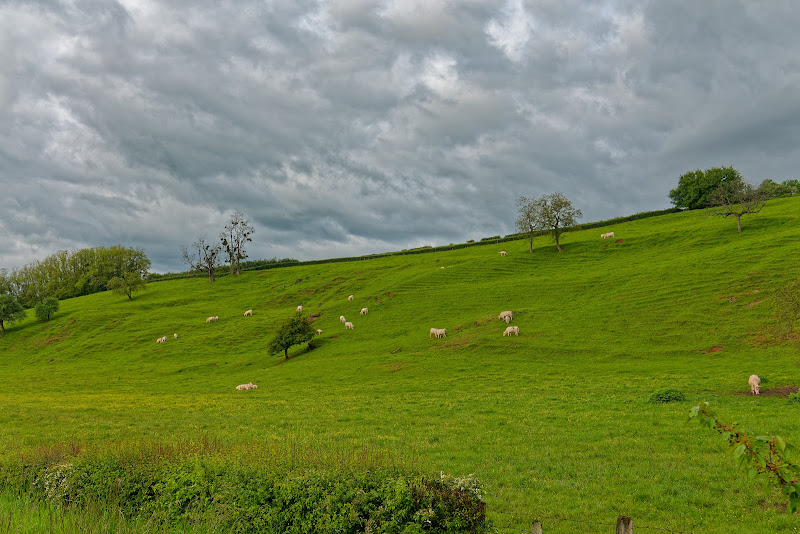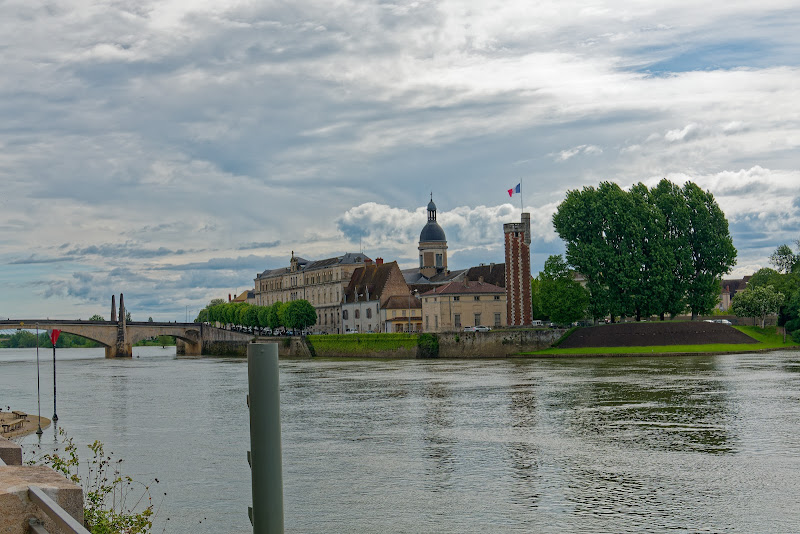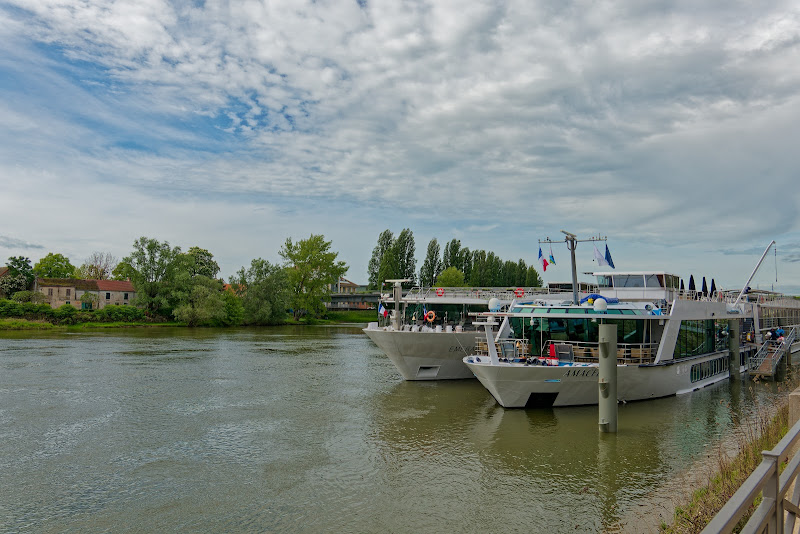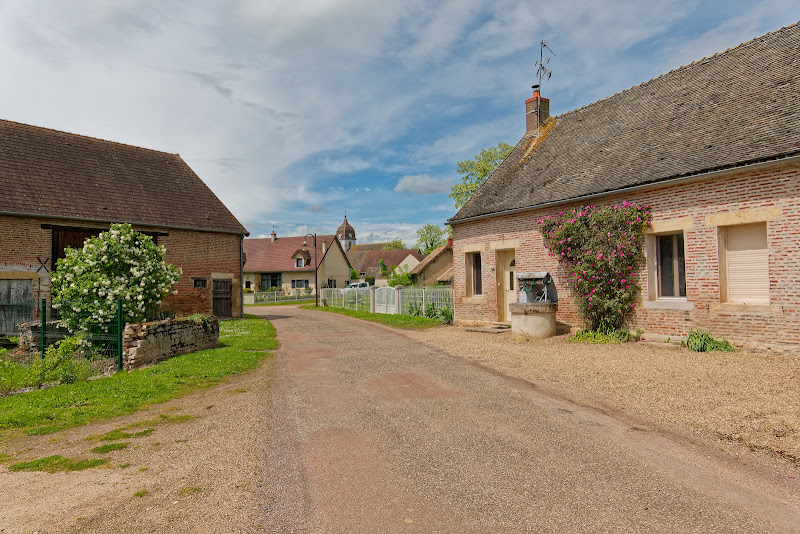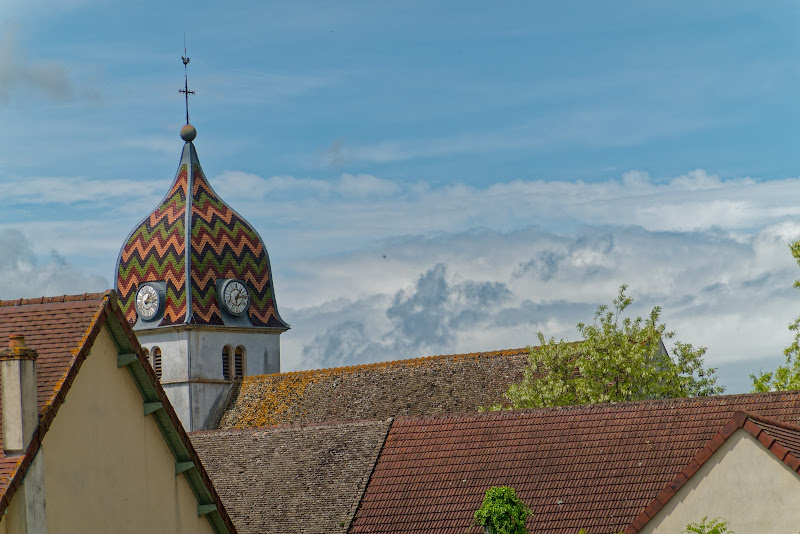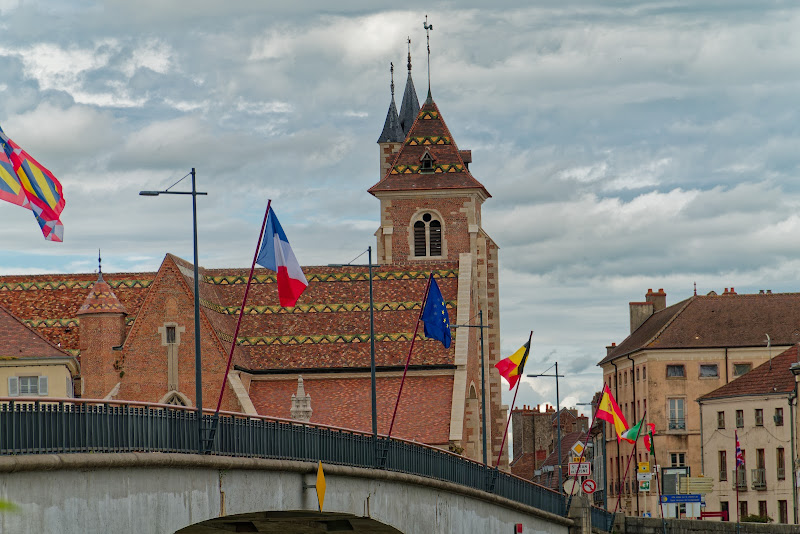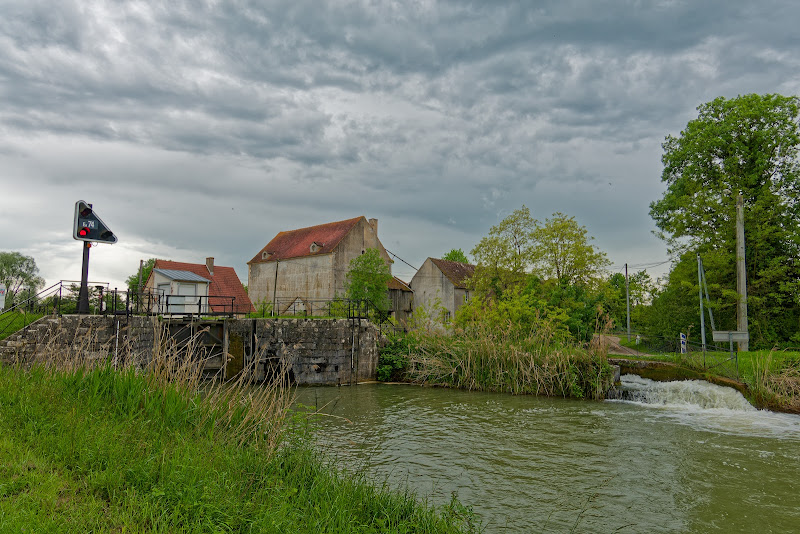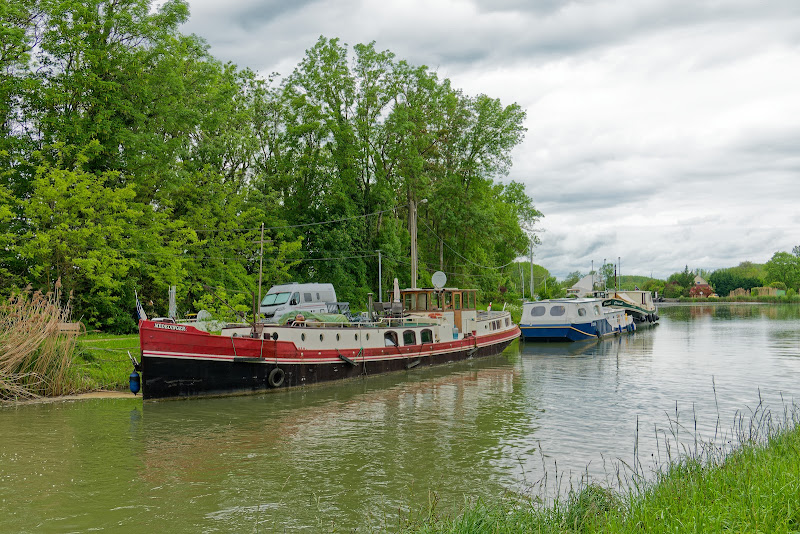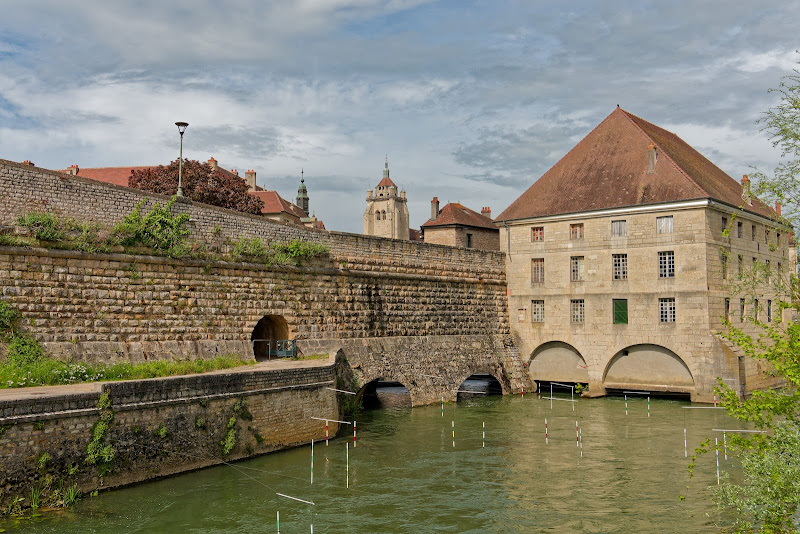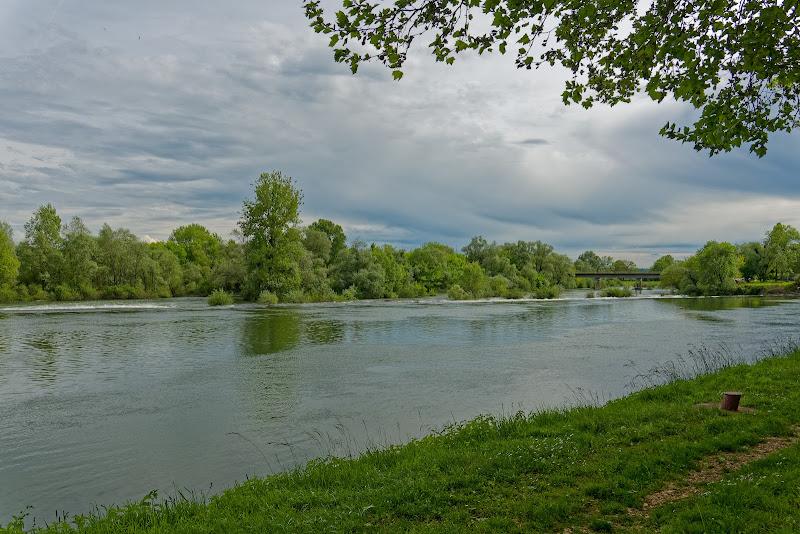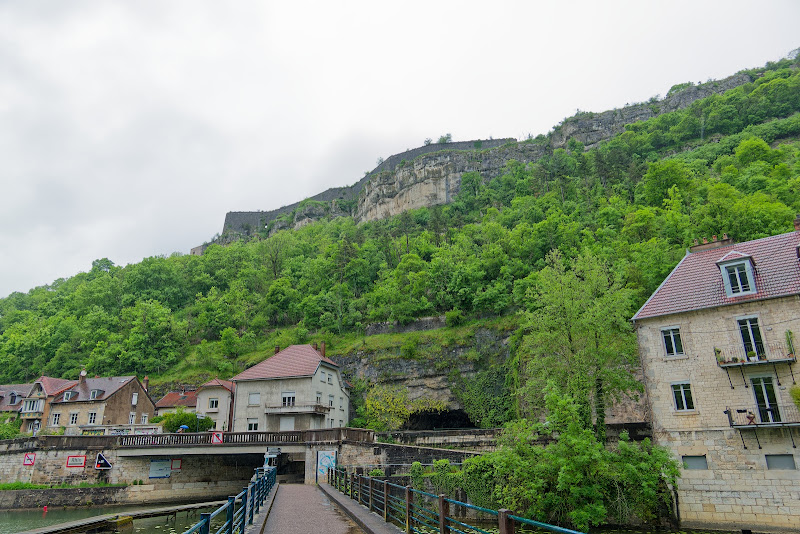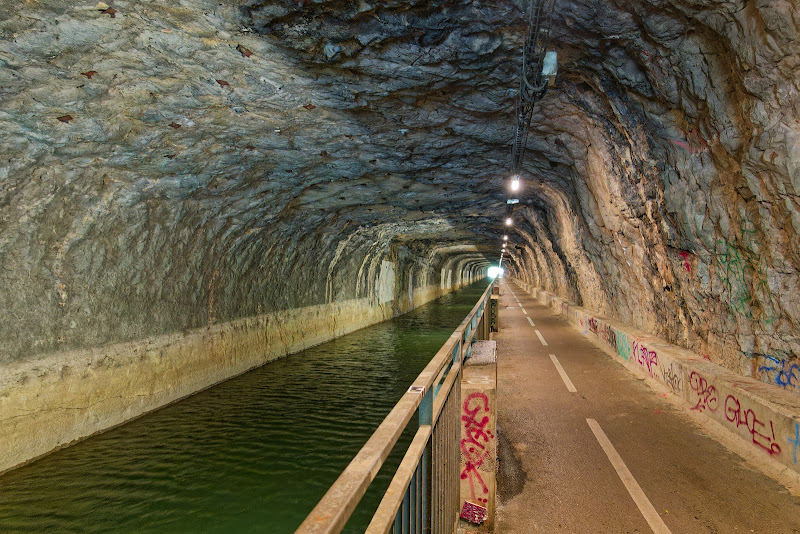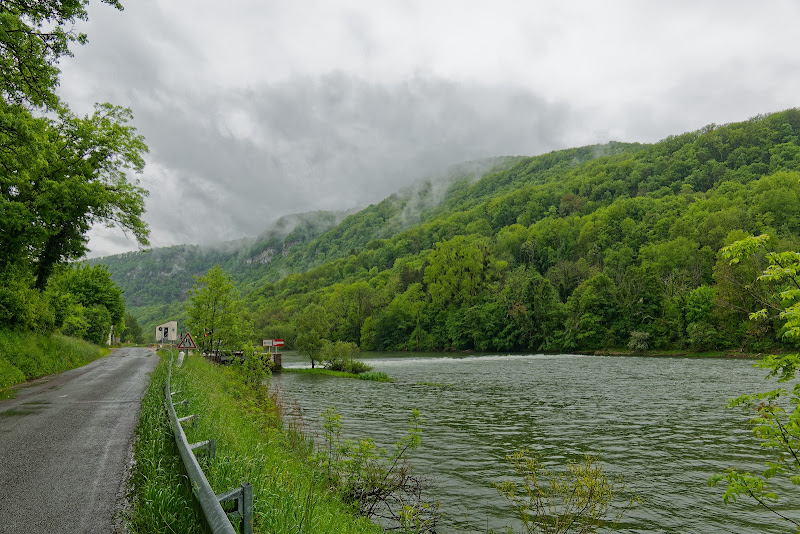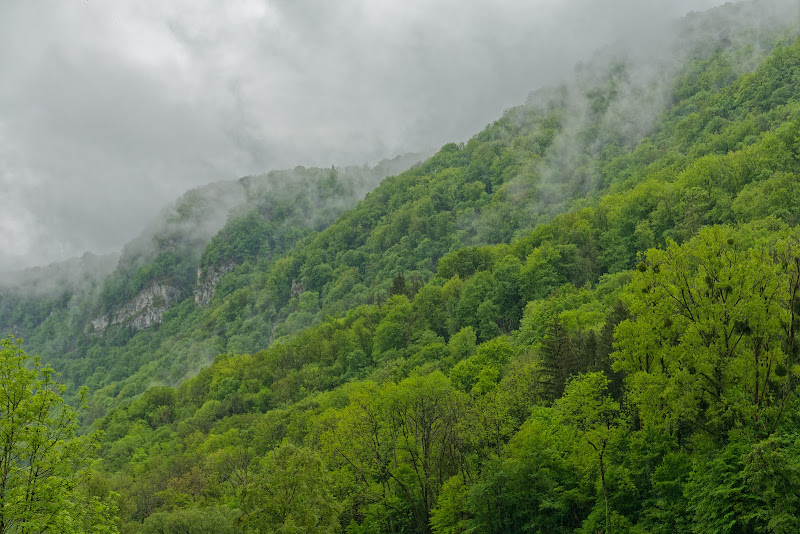April 17 - Portugal, the pilgrimage begins
I left work about an hour early and a friend drove me with my bike in a cardbox and two panniers tied together with straps to MUC airport (20min). Surprise: my two panniers were considered as checked-in hand luggage and my bike not as bulky luggage... so I did not have to pay an extra for the transport of the bike. The aircraft landed in Lisbon at about 10pm. I left airport with my bike at 11pm and cycled north. One of the campsites, a guard was still sleeping at the reception at that time late at night, was not accepting tents, just motorvans and huts, so I cycled a bit further to the village of Alenquer where there were a few picknick tables in a forest, about 30m above the road, which was not so busy in the night. Slept outside for a few hours without a tent.
April 18 - Traffic and already back home somehow
Even on small roads, very heavy traffic, not just cars, but lorries. Many old towns with impressive castles, elaborate churches and small streets with colorfull houses. Stayed in Coimbrao at the end of this day, so an extra "o" at the end. The lady running this camping moved vom FFB to Portugal back in 1992. A sign reads "mia redn Boarisch" and it is true...
I bought a gas cartridge on the way and thought the 2 lighters I had with me would work, no such luck, both empty and as a further feature for the trip my insulation mat has ‘delaminated’, i.e. a large air bubble has formed so that it can no longer be inflated. cold dinner, no fire and hard times sleeping in the tent.
Óbidos
A visit to Óbidos, with its winding old streets and whitewashed houses, is a pleasure all year round. But if you catch one of the festivals, it's a very special experience. Whether you're watching a tournament at the medieval market or climbing up the castle walls, discovering the next Pavarotti at the Festival de Ópera or savouring heavenly chocolate at the Festival Internacional do Chocolate - the setting couldn't be better!
The gate into Óbidos, Porta da Vila, features beautiful traditional Portuguese tiles (azulejos) that depict the Passion of Christ.
The church in Óbidos, Igreja de Santa Maria, is known for its painting of the Last Supper.
The Aqueduct of Óbidos a bit outside the main town is a testament to the engineering skills of the past.
Alcobaça
The Monastery of Alcobaça (Mosteiro de Alcobaça) is an UNESCO World Heritage Site and one of Portugal's most impressive architectural monuments, known for its stunning early Gothic architecture. The monastery was founded in the 12th century by the first Portuguese King, Afonso Henriques, and houses the tombs of King Pedro I and Inês de Castro, whose tragic love story is a famous chapter in Portuguese history.
The medieval kitchen (Cozinha Monástica) is an impressive sight, with a huge chimney and fish ponds fed by a river that runs through the monastery.
Batalha
Batalha is home to one of the most significant Gothic monuments in Europe, the Batalha Monastery, also known as the Monastery of Saint Mary of the Victory. which is an UNESCO World Heritage site and commemorates the 1385 Battle of Aljubarrota. It was built by King João I of Portugal as a thanksgiving to the Virgin Mary for the victory.
April 19 - Going North Quick
I'd had enough of the traffic on the small roads here in Portugal and decided to cycle north along the coast. Many of these roads have dedicated cycle lanes. In Forte de Barra I took a short ferry (1h wait for 10min ride, 2,40Euro) and on to a campsite in Furadouro, about 40km south of Porto.
April 20 - some rain, some hills, some cars
Bit of rain during the night and drizzle in the morning. First 30km quite flat, but to, through and after Porto a lot of steep climbs. Porto is a gem, the setting along the river, bridges, architectur. But sooo many tourists. Traffic was very dense towards Guimaraes and Braga.
Porto
Porto, Portugal's second-largest city, is famous for its Dom Luís I Bridge (Ponte de Dom Luís I), an iconic double-deck metal arch bridge that spans the Douro River, offering spectacular views of the city and the river. The baroque Clerigos Tower (Torre dos Clérigos) offers panoramic views of the city and is one of Porto's most recognizable landmarks. The Cathedral of Porto (Sé do Porto) is fortress-like and features a mix of architectural styles, including Romanesque, Gothic, and Baroque.
Guimarães
Guimarães is often referred to as the birthplace of Portugal due to its significant role in the country's foundation and identity. The medieval Guimarães Castle (Castelo de Guimarães) is closely associated with the origins of Portugal and the birth of the nation's first king, Afonso Henriques.
The 15th-century Palace of the Dukes of Braganza (Paço dos Duques de Bragança) combines architectural elements of a noble house and a military building, reflecting the power and wealth of the House of Braganza.
The historic centre of Guimarães is an UNESCO World Heritage site and shows the evolution of a medieval settlement into a modern town.
April 21- Luxury
The gradients here in the north are less steep and longer. A very hot day on which I cooled off with the water springs that were often available along the way. Today I crossed the border into Spain and promptly lost an hour... the countries have different time zones. There were no campsites within reasonable distance along the way (or they have closed in recent years), so I spent the night in a pilgrims' hostel in Pontevedra. Good experience, there was even breakfast in the morning and the TV in the common room was as big as the screens at the MPE in Garching...
And since its Sunday I indulged myself to a cafe in a fancy bar this morning: 80 cent and worth it.
Braga
Braga is one of Portugal's oldest cities and Braga Cathedral (Sé de Braga) is the oldest cathedral in Portugal, with a history that spans over a millennium.
The Sanctuary of Our Lady of Sameiro (Santuário do Sameiro) is one of the centers of Marian devotion in Portugal. It features a monumental basilica, a large dome, and a statue of the Virgin Mary.
Rua do Souto and Avenida da Liberdade are pedestrian streets in the heart of Braga lined with shops, cafes, and historic buildings.
Ponte Medieval de Pontesampaio
The Ponte Medieval de Pontesampaio was the site of a significant battle in June 1809, where Spanish forces won a decisive victory against the French troops, contributing to the liberation of Galicia during the War of Spanish Independence. The bridge showcases medieval architecture, although it has been reconstructed and repaired over the centuries. Its exact origins are not clear, but it is believed to have Roman origins, later rebuilt or modified in the medieval period. The structure is characterized by its stone construction and several arches that allow it to span the river.
April 22 - Santiago
My last stay was a city on the pilgrims way. For the first time I realized how many do that trip. I overtook more then 100 in the first hours north heading to Santiago. At about noon with probably 500 pilgrims gathered in front of the cathedral. After a short lunch: Camino Frances here we come, another 45 extremely hilly kilometers east.
Pontevedra
The Praza da Ferrería is in the heart of Pontevedra's old town, surrounded by historic buildings, including the Convent of San Francisco and the Church of San Francisco.
The Basilica of Santa Maria a Maior is a stunning example of late Gothic architecture with a beautiful façade featuring sculptures of the apostles.
Ponte do Burgo is an important historical bridge over the Lérez River.
Santiago de Compostela
Santiago de Compostela is the capital of northwest Spain's Galicia region.
Cathedral of Santiago de Compostela where the tomb of St. James the Apostle is said to be located. The cathedral is an architectural masterpiece, showcasing Romanesque, Gothic, and Baroque elements. The Pórtico de la Gloria and the Botafumeiro are among its most notable features.
Praza do Obradoiro: The main square in front of the cathedral, surrounded by important buildings such as the Hostal dos Reis Católicos, the Palacio de Raxoi, and the Colegio de San Xerome. It's the meeting point for pilgrims from all over the world.
Monastery of San Martiño Pinario: is one of the largest monastic complexes in Spain, featuring impressive Baroque architecture and a beautiful church.
April 23 - Up and Down
Not like the long alpine passes but a lot of short, steep hills with up to 300hm and that sums up. tonight in Samos, sounds Greek to me, in a hostel (no camping around) and tomorrow another day with 120km and 2600hm. Fresh wind from the east (!) sometimes. An endless stream of pilgrims, all going the other direction now. No campsite around so I stayed again in a pigrims hostel and was eating smoked sausages and a very rustic style white bread, others here are blocking the common kitchen with their cooking and preparations for an hour. Amateurs... :)
Portomarín
Portomarín is known for its Iglesia de San Juan: A church that was moved stone by stone from its original location before the area was flooded by the construction of a dam.
April 24 - Königsettape?
Early start in Samos with about 2deg. The first climb topped at about 1400m and a small valley downhill with a motorway, a national road and some local offering inbetween. Lots of repair works and closed roads, so my only option was a service lane on the motorway going the wrong side and having to lift the bike at the end to the "right" motorway. All went fast downhill 40 to 50 km/h and the next exit was just another 4km away... Lunch in Ponferrada and another at the end very steep climb from about 400m to 1500m. Altogether 130km and 2600Hm. Stopped at the famous cross, where pilgrims lay down a stone, something that lays heavy on them from home. I took one from the roof of my work place, 3rd floor, where all the retired astrophysicists have their offices...
Samos
Monastery of San Xulián de Samos: An impressive Benedictine monastery with a long history, known for its beautiful frescoes and library.
Villafranca del Bierzo
Iglesia de Santiago: Famous for the Puerta del Perdón, through which pilgrims who were too ill to continue their journey could receive the same absolution as in Santiago.
Ponferrada
Castillo de los Templarios: An impressive Templar castle from the 12th century that towers over the city
Cruz de Ferro
A simple iron cross on a wooden pole, surrounded by a pile of stones. Pilgrims traditionally leave a stone here that they have brought from home to symbolise their burdens and hopes.
April 25 - Flachetappe - Rain in Spain
Today not to many hills so 182km to Carrion de los Condes was a lot less pain then yesterday. Again a camp site, or actually two, were closed. Thanks to the pilgrims infrastructure I chose Albergue Espiritu Sanctu. 17.30 prayers, no smoking or alcohol on the premises. I get the pilgrims vibe and pray with my friends that FC Bayern will find a suitable replacement for Tuchel (I was asked for that by email, in fact I could not care less as a fan of 1860 Munich)...
Astorga
Palacio Episcopal: Another work by Antoni Gaudí, which now houses the Museo de los Caminos, a museum dedicated to the Way of St James. Astorga Cathedral: A beautiful mixture of Gothic, Baroque and neoclassical elements.
Leon
A city with a rich history and impressive architecture, including the Gothic Cathedral of León and the Basilica of San Isidoro, famous for its Romanesque murals.
April 26 - Burgos
Today a bit of offroad camino in the hills West of Burgos. Cloudy all the day and about up to 12deg. People feel that different, I saw cyclists in winter clothes that I do not wear at 15 deg minus going uphill, while I passed them short trousers and t-shirt downhill with 50km/h... 145km to Belorado, a hostel with a pool and wood fire.
Canal de Castilla
The Canal de Castilla is one of the most significant engineering works carried out in Spain during the 18th and 19th centuries. It was designed primarily for transportation and irrigation purposes, aiming to facilitate the grain export from Castile to northern ports and hence to other markets. The canal also played a crucial role in irrigating the fields in its vicinity. The Canal de Castilla has three main branches or "ramales": North (Norte), South (Sur), and Campos.
Burgos
The gothic Burgos Cathedral (Catedral de Burgos) is an UNESCO World Heritage site and famous for its intricate façade, beautiful chapels, and the tomb of El Cid, the legendary Castilian nobleman and military leader.
Monastery of Santa María la Real de Las Huelgas is a beautiful Cistercian monastery founded in the 12th century, known for its royal tombs, impressive cloisters, and the remarkable collection of medieval textiles.
April 27 - Rain in Spain - part 2
This morning for about 90min all the water in the heavens poured down and the roads became rivers. Got soaking wet. Cycling with the wet clothes got me dry in the afternoon when another rainfall hit, found a place to stay dry and 45min later the sun came out and I cycled to Puente la Reina, 20km away from Pamplona and my last 100km of camino have now begun. Big albergue here, a bit away from the village with dinner in a big hall.
Santo Domingo de la Calzada
The town's most notable building is its cathedral, which began as a simple church built by Santo Domingo to serve the pilgrims. Over the centuries, it has been expanded and now showcases a mix of architectural styles, including Romanesque, Gothic, and Baroque. The cathedral is unique for housing a live chicken and rooster inside, in memory of a famous miracle attributed to Santo Domingo involving a hanged pilgrim who was found to be alive.
The Miracle of the Hen and Rooster: According to legend, in the 14th century, a German pilgrim was falsely accused of theft and hanged. His parents, upon finding him still alive, brought this to the attention of the local judge, who was about to eat dinner and remarked that the pilgrim was as alive as the roasted chicken on his plate. The chicken then stood up and crowed, proving the miracle. This story is commemorated in the cathedral with the presence of live birds.
April 28 - Camino Frances
...came to an end today, I arrived after 11 days in Saint Jean, camping municipial, no more auberge with pilgrims. Another language to get used to and looking forward to Pain au Chocolat in the morning. A Gourmet meal is already waiting outside the tent...
Pamplona
Pamplona, the capital of the Navarre region in northern Spain, is famous for its annual San Fermín festival, featuring the running of the bulls. the bullring.
Pamplona's City Walls and Fortifications are one of the best-preserved military fortifications in Spain.
Plaza del Castillo: The heart of Pamplona, this large square is surrounded by cafes and restaurants, serving as a popular gathering place for locals and visitors.
Pamplona Cathedral (Catedral de Santa María la Real de Pamplona) is a beautiful example of Gothic architecture with a neoclassical façade.
Town Hall (Ayuntamiento de Pamplona) is where the San Fermín festival officially begins each year with the "chupinazo" rocket launch on July 6th.
Citadel (Ciudadela): A 16th-century fortress built in the shape of a pentagon, now serving as a public park and venue for cultural events.
Saint-Jean-Pied-de-Port
Saint-Jean-Pied-de-Port, located in the French Basque Country at the base of the Pyrenees mountains, is a historic town known for its well-preserved medieval architecture and as a major starting point for pilgrims on the Camino de Santiago, specifically the French Way (Camino Francés).
Citadelle: The Citadel, built in the 17th century by Vauban under the orders of Louis XIV, sits atop the town and offers panoramic views of the surrounding Basque countryside and the Pyrenees. It has a rich military history and has been used for various purposes over the centuries.
Old Bridge (Pont Neuf): This bridge over the Nive River is a historic crossing point for pilgrims and an important feature of the town's medieval layout.
April 29 - Viva la France
Rain started at the campsite at 6 and lasted until about 11am. All day very cloudy and no sun. I took such small roads through such small villages that no boulangerie would be open/exist. Only the third campsite was open or offered an alternative, so it was a long day (including many hills before lunch) to a kind of open space for tents in Luxey.
April 30 - Bordeaux wine area
I pedaled through the Bordeaux wine region today, there are quite a few wine chateaus around where apparently some money was made from wine. Sourzac this evening there was someone in the mayor's office for another 15 minutes who opened the shower for me at the municipal campsite. To my surprise: warm water. And this morning a boulangerie was open...
Saint-Émilion
Saint-Émilion and its surrounding vineyards have been recognized as a UNESCO World Heritage site. The area includes several prestigious wine estates that produce some of the most highly regarded and expensive wines in the world.
One of the most remarkable sights in Saint-Émilion is the Monolithic Church, carved entirely out of a limestone cliff in the 12th century. It is the largest underground church in Europe and a testament to the town's medieval history.
The medieval town itself is a charm to explore, with its narrow cobblestone streets, ancient buildings, and remnants of fortifications.
Les Cordeliers Cloister, a former Franciscan monastery features beautiful Gothic cloisters and gardens.
May 1 - Le temps de pluie, May 1st - Liberté, Égalité, Fraternité
There would have been nice villages to get a closer look, like Brantome, but rain all day. After 135km I turned in early in Aix-sur-Vienne and can sleep in the dry common room. A soup and later on some pasta will bring my spirits back.
Brantôme
Brantôme Abbey: Often referred to as the ‘Venice of the Périgord’, Brantôme is known for its beautiful abbey, which is partially surrounded by water. Grotte de Villars: Located near Brantôme, these caves are known for their prehistoric paintings and impressive stalactites and stalagmites.
May 2 - Massif central - wetland
Rain all night and very cold so clothes stayed wet and even my towel, known for extremely fast drying was wet in the morning. Via Limoges, lakes up in the massif and picturesque villages like Felletin, I would love to be here with decent weather. Took a room in Flayat after about 150km and 2000hm to get my things dry again.
Limoges
Saint-Étienne Cathedral: An impressive Gothic cathedral known for its finely crafted stained glass windows. Musée National Adrien Dubouché: This museum houses one of the largest porcelain collections in the world and offers an insight into the long tradition of porcelain production in Limoges. Quartier de la Boucherie: A historic neighbourhood known for its medieval half-timbered houses and the Saint-Aurélien chapel.
May 3 - Vichy - Great Spas of Europe
Cold but dry in the morning and quite a few meters up an down to Puy de Dome and up to 12% steep and fast downhill (over 60km/h Max today). North to Vichy and very dark clouds were not inviting and it was a very short dry window to set up my tent. I first went to a campsite that said no tents today because of storm and high water. Then 5km back and the 4 star place where I didn't want to go was actually 10 Euro. Set up the tent and showered in no time without rain, cooking and eating in the shelter it was pouring like mad, finished eating, washed up: rain break and dry back to the tent. Vorsprung durch Technik :)
Puy de Dôme
The Puy de Dôme is a large lava dome and one of the youngest volcanoes in the Chaîne des Puys region of the Massif Central in central France. Rising to an altitude of 1,465 meters. The summit hosts the ruins of a Roman temple dedicated to Mercury, dating back to the 2nd century.
Clermont-Ferrand
Clermont-Ferrand, the capital of the Auvergne region in central France, is famously home to the global headquarters of Michelin, the tire company. The city's history and development are closely tied to the growth of Michelin, which has significantly influenced its economy and culture. Cathedral of Notre-Dame de l'Assomption: This stunning Gothic cathedral is built almost entirely from black lava stone, giving it a distinctive dark appearance that stands out against the city skyline. The main square in the city, Place de Jaude, is a lively hub of activity, surrounded by shops, cafes, and important buildings, including the opera house and a statue of Vercingetorix, the Gallic chieftain who fought against Julius Caesar and is a symbol of French unity and resistance.
May 4 - Cluny - a centre in the middle ages
Rain in the morning in Vichy, the opera and city centre are renovated at the moment. Rain stopped for a while in Paray-la-Monial and after another 1000hm within 50km I arrived in Cluny, that was founded in 910 in Burgundy. The Monastery of Cluny was a pivotal center of the Benedictine movement, emphasizing liturgy and prayer. Its vast network influenced European monasticism, advocating for reform and clerical celibacy. The Abbey of Cluny became known for its opulent architecture, with the third abbey church, Cluny III, being the largest in the world until the completion of St. Peter's Basilica in Rome. Its influence extended through its vast network of over a thousand dependent and affiliated monasteries across Europe, promoting reform and piety throughout the medieval church.
Vichy
Vichy is renowned for its thermal springs and as a historic spa town. It has a rich history that spans from Roman times to the modern day. The town experienced significant development during the Belle Époque era in the late 19th and early 20th centuries. This period left a legacy of magnificent architecture, including the opulent Vichy Opera House, grand hotels, and the Hall des Sources, where visitors can taste the thermal waters. Vichy Regime: During World War II, Vichy became the seat of the French government from 1940 to 1944, led by Marshal Philippe Pétain after France's defeat by Germany. This government, known as the Vichy Regime, collaborated with Nazi Germany, a dark chapter in the town's history.
Paray-le-Monial
Paray-le-Monial is particularly renowned for its significance in the Christian tradition, especially within the Catholic Church, due to its association with the apparitions of the Sacred Heart of Jesus.
The heart of Paray-le-Monial is the Basilica of Sacré-Coeur (Basilica of the Sacred Heart), a masterpiece of Romanesque architecture. The basilica is famous for being the site of the apparitions of Jesus to Saint Margaret Mary Alacoque in the 17th century, during which He revealed the devotion to His Sacred Heart.
Cluny
The town was the site of Cluny Abbey, founded in 910 AD, which played a pivotal role in the development of Western monasticism. At its height during the Middle Ages, Cluny Abbey was the largest Christian building in the world until the construction of St. Peter's Basilica in Rome. It was the center of the Cluniac Order, which had a profound influence on the religious and political landscape of Europe. The abbey emphasized strict adherence to the Rule of Saint Benedict, liturgical prayer, and scholarship.
The Cluniac Reforms: The abbey was known for initiating the Cluniac Reforms, which sought to revive the original monastic ideals of poverty, chastity, and obedience. These reforms spread throughout Europe, leading to the establishment of hundreds of dependent priories.
Architectural Influence: Although much of the original abbey was destroyed during the French Revolution, the remaining structures, including the south transept and the octagonal bell tower (Tour des Fromages), give insight into the grandeur and architectural innovation of Cluniac buildings. The Abbey of Cluny was a forerunner in the development of Romanesque architecture.
May 5 - Flat and Fun
Extremely flat trip today. From Cluny with slight rain in the morning to Taizé and from there on a former railway track to Chalon-sur-Saône. Some sun (never strong) during the day always close to the rivers Saone and Doubs. Since a campsite was closed a detour of a few kilometers and at the end it was 190km.
Taizé
Taizé is known internationally for the Taizé Community, an ecumenical Christian monastic fraternity founded in 1940 by Brother Roger Schutz. The community is dedicated to peace, reconciliation, and Christian unity.
Ecumenical Focus: The Taizé Community is one of the world's most important sites of Christian pilgrimage, especially for young people. Its ecumenical approach aims to bring together Christians of various denominations, including Catholic, Protestant, and Orthodox, to live and pray together.
Prayer and Worship: The heart of life in Taizé is the thrice-daily communal prayer, characterized by its simplicity, meditative singing, periods of silence, and the reading of Scripture. The Taizé chants, short songs repeated over and over, have become widely known and used in churches around the world.
Pilgrimage Site: Every year, thousands of young adults from around the globe visit Taizé to participate in meetings focused on prayer, Bible study, sharing, and communal work. These meetings are designed to promote a sense of community and spiritual growth among participants.
Brother Roger and the Community's Founding: Brother Roger established the community during World War II as a sanctuary for refugees, including Jews fleeing the Nazi regime. His vision was to create a community based on kindness, simplicity, and reconciliation.
International Outreach: Beyond its activities in Taizé itself, the community is involved in various social and humanitarian projects around the world. It also organizes international meetings in different cities to spread its message of peace and unity.
Silence and Reflection: A significant aspect of the Taizé experience is the emphasis on silence as a part of spiritual practice. Times of silence during prayers and throughout the day are encouraged for personal reflection and deeper spiritual engagement.
Chalon-sur-Saône
Birthplace of Photography: Chalon-sur-Saône is celebrated as the birthplace of Nicéphore Niépce, one of the pioneers of photography. In 1822, Niépce developed the first successful process of capturing images, heliography, leading to the creation of the world's oldest surviving photograph.
Cathédrale Saint-Vincent: Dominating the city's skyline, the Cathédrale Saint-Vincent is a beautiful Gothic cathedral with parts dating back to the 8th century. Its façade, towers, and stained glass windows are particularly noteworthy.
Île Saint-Laurent: This island in the Saône River is connected to the rest of the city by several bridges and is known for its vibrant atmosphere, with numerous restaurants, bars, and cafes offering outdoor seating along the riverbank.
Dole
The historic center of Dole is a beautifully preserved area with winding streets, traditional houses, and buildings dating back to the 16th and 17th centuries.
Collégiale Notre-Dame de Dole dominates the town's skyline.
The birthplace of Louis Pasteur, the renowned chemist and microbiologist, is now a museum dedicated to his life and work.
May 6 - Watering the plants
Rain at night, in the morning and until 4.30pm non-stop. Besançon was surprising with its walls on the hill and the canal passing it way below. In Baume-les-Dames I met a fellow cyclist from Augsburg cycling to Santiago in a slower way, 40km per day, but with 6 pots of spice plants at the handlebar and a huge trailer.
Besançon
Citadel of Besançon: Designed by the renowned military engineer Vauban in the 17th century dominates the city from a rocky spur. It's one of France's most impressive fortresses.
Housed in the Granvelle Palace, the Museum of Time explores the history of timekeeping, reflecting the city's significant watchmaking heritage.
The house where Victor Hugo, the famous French writer and poet, was born in 1802 is now a museum dedicated to his life and work, emphasizing his commitment to social justice issues.
May 7 - Towards a real adventure - Deutsche Bahn
Early morning on the road, 95km to Müllheim in Baden, where I already in 2013, after a trip through France, got a regional train back to Munich. I am excited to take on this adventure "Deutsche Bahn", only 3 changes and about 8 hours. There may be sun from Thursday on in southern Germany...

